- Laws & Taxes
- Construction
- Real Estate Trends
- Zameen Product Updates
- Area Guides


Pakistan’s Religious Tourism: Top Sites To Explore
Home » Tourism » Pakistan’s Religious Tourism: Top Sites To Explore
In this post
- Religious Tourism
Popular Places for Religious Tourism in Pakistan
- Kartarpur Corridor
- Nankana Sahib
- Gurdwara Panja Sahib
- Taxila City
- Katas Raj Temples
- Sadho Belo Temple
Plans to Bolster Religious Tourism in Pakistan
Punjab’s Tourism and Archaeology Department (TAD) has announced that it will start working on reviving and promoting religious tourism in Pakistan. To that end, a comprehensive plan for restoring 11 religious sites, sacred to various faiths, has been unveiled. The announcement of such a plan is not something new for the incumbent government as its tourism policies are primarily focused on socio-economic uplift, as well as upholding and celebrating the rich cultural heritage of the country.
This is the first time that any government has dedicated itself to reviving religious tourism, and in this blog, we will cover the planned proposals, sites, and the many ways Pakistan’s tourism sector is expanding for the benefit of the people.
Reviving Religious Tourism In Pakistan
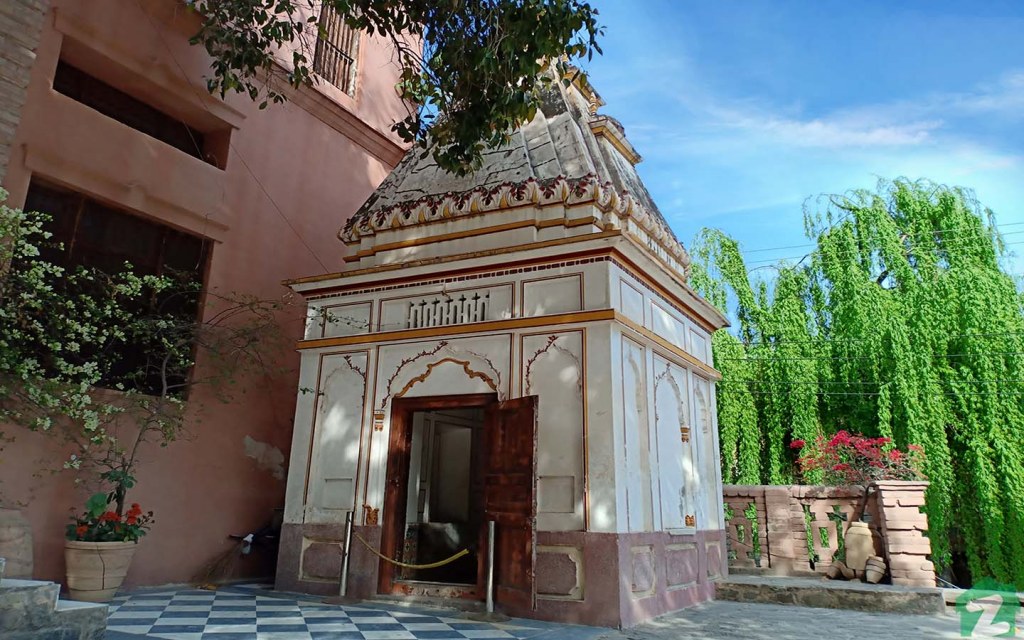
Pakistan is home to a large number of ethnicities, cultural festivals, religious sites, and languages. This diversity is what gives the country its uniqueness—rooted in centuries of settlements by nations who passed these regions. The settlers came and developed their places of worship, got the locals accustomed to their rituals, and have over the decades contributed to the many cultural flavors that are celebrated under the umbrella of being Pakistani. You will see a number of festivities all year round such as Holi, Christmas, Easter, Diwali, and the likes, being celebrated alongside Eids. This eclectic mix of festivities is something that has been enshrined in the very ethos of Pakistan.
Present-day Pakistan is divided into four provinces, which are further divided into districts, tehsils and cities. Thousands of years ago, these provinces, districts and cities were part of great civilizations. Pakistan’s Harappa is home to the oldest-known man-made society, the Indus Valley Civilization which is a remarkable cultural asset for the country. This is a protected area, however, most sites have not been so lucky. Subjected to low upkeep, a lot of historic religious sites have been a victim of decay. For this reason, the government at various levels is working extensively on restoring all such sites.
The new proposed plan by the Punjab Tourism for Economic Growth Project (PTEGP) will mainly cover 11 sites, including:
- Gurdwara Nankana Sahib,
- Gurdwara Rohri Sahib
- Gurdwara Sacha Sauda
- Katas Raj Temple
- Taxila Museum
- Bibi Jawindi Uch Sharif
- Darbar Khwaja Ghulam Farid
- Qila Kohna Qasim Bagh
- Mata Kaur Sahib
- Tilla Joggian
- Bhai Karam Singh
- Gurdwara Chowa Sahib
Moreover, the PTEGP is also working to rehabilitate six roads leading to religious sites at a total cost of PKR 833 million. The birthplace of Maharaja Ranjeet Singh in Gujranwala has also been directed for conservation.
As a number of sites have already been restored, and are living proof of Pakistan’s religious harmony, let’s explore each of these, and understand what they mean for the local population.
Over the years, many of Pakistan’s heritage sites have been restored and well kept so people can practice their religion openly. These include:
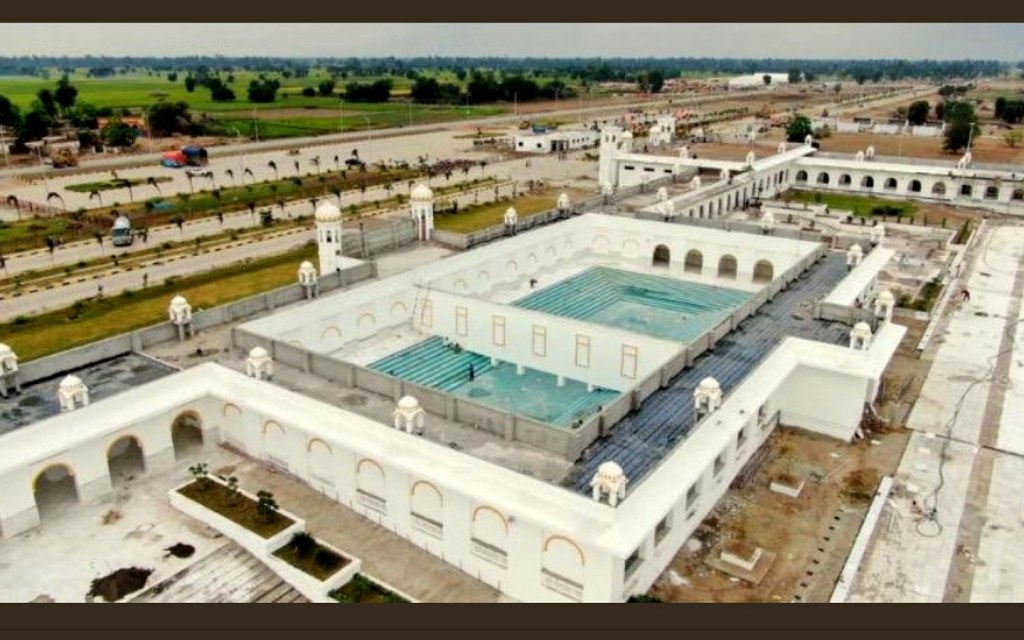
This is a sacred place for Sikhs as the founder of Sikhism, Baba Guru Nanak developed the first commune here in the year 1504. To cater to the Sikh community in India and Pakistan, on 9th November 2019 Prime Minister Imran Khan launched this corridor. Under this, the Sikhs coming from India are allowed visa-free entry to Kartarpur, and the motel facilities also allow for them to stay here as well.
Among many things, the visa-free entry from India has boosted Pakistan’s reputation on inter-faith harmony , internationally.
The Gurdwara of Nankana Sahib is another sacred place for Sikhs, located in Nankana city of the district by the same name. It has been named after the first Guru of the Sikhs, Guru Nanak, who was born in the city and first began preaching here. Gurdwara Nankana Sahib might be a sacred place for Sikhs, however, it holds sentimental value for people of other beliefs as well who visit the place regularly. The prime minister laid the foundation of Nankana Sahib University here in October 2019.

This gurdwara is located in Hasan Abdal, in Punjab. As the name implies, it is famous for its hand imprint, which belongs to Guru Nanak. The Gurdwara was named Panja Sahib by Hari Singh Nalwa, a famous Sikh general, who is also believed to have built the first gurdwara here. It is one of the three holiest sites in Sikhism, after Nankana Sahib in Sheikhupura, and the Golden Temple in India. During April, Sikhs from all over the world come here to celebrate the birth of Khalsa, purity.
Gurdwara Nankana Sahib and Panja Singh are very similar in design and architecture. Once you visit, you’ll realise that the similarity in design translates to oneness between the believers of Sikhism.
This city is located in present-day Punjab, and was established under the Kingdom of Gandhara. It, therefore, is of special significance for Buddhism. Originally, it was called Takshashila, meaning the ‘City of Cut Stone’, and had been governed under several different empires, with each wanting to benefit from the convenient trade route it offered within South and Central Asia.
There are a number of excavated sites and attractions in this city that the tourists visit regularly. These sites include; Bhirmound, Sirkap, Sirsukh, Dharmarajika Stupa, Kunala Stupa, Mohra Moradu Stupa, Jaulian Stupa, Jandial Temple, and Taxila Museum . In 1980, Taxila City was declared a UNESCO World Heritage Site, and the government has made concerted efforts to keep its sites protected.

The Shri Katas Raj Temples is a complex of several temples, connected by walkways in Kallar Kahar , Punjab. Combined, these are also called Qila Katas. The temple complex surrounds a pond, Katas, which is regarded as sacred by Hindus. Many believe that it was created from the teardrops of Shiva as he wandered across the world, after the death of his wife, Sati.
Apart from the story of Shiva, a number of prominent traditions have been linked with these temples. The area around Katas Raj holds special significance for the Hindus, as a number of springs in this region carry tales that have religious importance.
These are some of the many famous temples in Pakistan that are greatly-revered by Pakistan’s Hindu community. The sites are open to the public, and people of all religions regularly visit this locality as it contains remnants of past civilizations.
Sadh Belo is a temple that is situated on the Indus River, near Sukkur. This island temple is Pakistan’s third-largest temple as the entire complex is made of eight smaller ones, along with a library, dining areas, a huge garden, along with rooms and residences for monks as well as travelers or pilgrims.
Members of Sindh’s Hindu community pay regular visits to this temple. Sometimes, pilgrims from across the border also come to visit. For non-Hindu visitors, permission from Pakistan Hindu Panchayat is needed to enter the premises. As this is an old temple, in 2013, Pakistan’s Waqf Board supervised major renovations and repairs of the site.
These religious sites have been around for centuries, and over the years Pakistan’s various governments have strived to keep the sanctity of these places intact. However, the present government has now realized that more efforts are needed to revive much older sites, which have been significant in the region’s history. What is unique about the incumbent government’s plans is how the excavation and restoration of these sites have been linked to catering tourism. Thus, a number of dynamic tourism initiatives have been launched across the country.
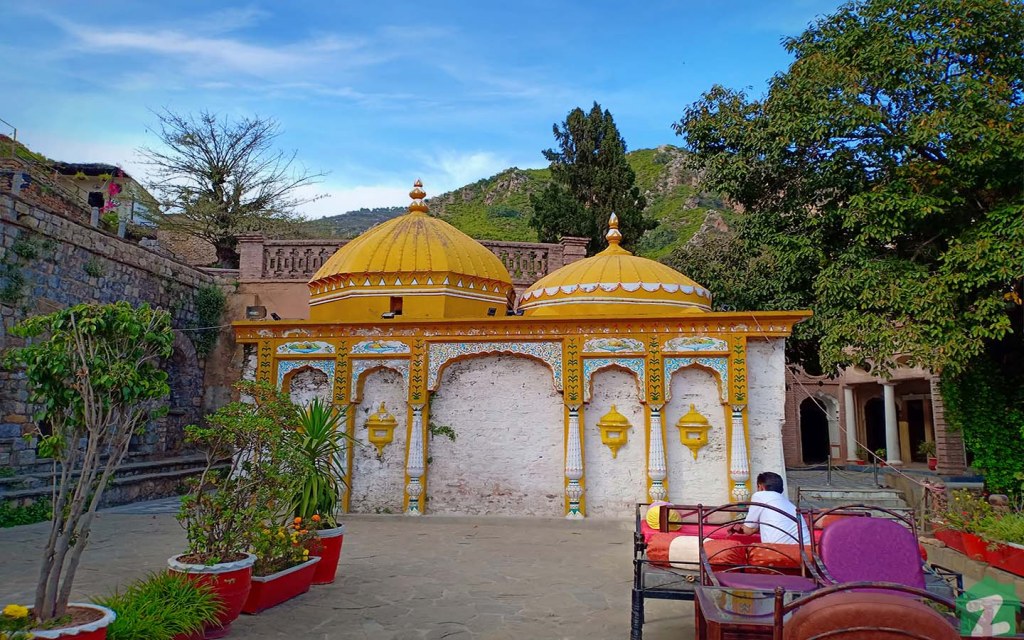
Of the many initiatives, the recently launched Al Beruni Radius is a unique policy initiative that is aimed at reviving religious tourism in the country. The “Heritage Trail” at the ‘Al-Biruni’ point of Jhelum’s Nandana Qila will pass through Nandana Fort and Temple, Shiva Temple of Katas Raj, Khewra Salt Mines, Malot Fort & Temples, and Takht-e-Babri. A similar tourism trail by the name of Gandhara Trail is now being launched which will cover and reconstruct old Buddhist sites.
But that’s not all! Pakistan has recently launched a tourism-dedicated channel, Discover Pakistan . The government is also about to launch Brand Pakistan , which is a platform for local and international influencers to launch extensive advertising campaigns, which will use digital channels to highlight Pakistan’s tourist attractions.
Are you someone who is interested to see how religious tourism will play out in Pakistan? Write to us at [email protected] . Also, keep checking Pakistan’s largest property blog, Zameen Blog, for all the latest news on Pakistan.
Everything You Need to Know About Ehsaas Nashonuma Programme

Your Guide to Exploring Khyber Pakhtunkhwa

What to Consider Before Shopping Online in Pakistan?
Subscribe For Daily Blog Alert
Get the Zameen App
Sliding sidebar.
- Latest News
10 Religious Tourism Places in Pakistan
Share post:
Religious Tourism Places in Pakistan: Pakistan is a country rich in religious diversity and offers tourists several significant religious sites. Here are some popular religious tourism spots in Pakistan. Religious tourism in Pakistan has a long and rich history, deeply rooted in the country’s diverse religious and cultural heritage. Here is a brief overview of the history of religious tourism in Pakistan.
Religious Tourism Places in Pakistan
1. badshahi mosque.
The Badshahi Mosque in Lahore is one of the largest mosques in the world and a major tourist attraction. It features stunning Mughal architecture and is a significant site for Muslims.
2. Faisal Mosque
The Faisal Mosque in Islamabad is the largest mosque in Pakistan and one of the largest in the world. Its unique modern design and picturesque location make it a popular tourist destination.
3. Data Darbar
Located in Lahore, Data Darbar is the mausoleum of the famous Sufi Saint Hazrat Data Ganj Bakhsh. It is one of the oldest and most important Sufi shrines in South Asia and attracts devotees from different religious backgrounds.
4. Lal Shahbaz Qalandar Shrine
Located in Sehwan, Sindh, this Sufi shrine is dedicated to Lal Shahbaz Qalandar, a revered Sufi saint. The annual Ursfest held here is a lively and spiritually charged event.
5. Hinglaj Mata Temple
The Hinglaj Mata Temple in Balochistan is a revered Hindu pilgrimage site. It is dedicated to the Hindu goddess Hinglaj Mata and is considered one of the Shakti Peeths.
6. Katasraj Temples
The Katasraj Temples in Chakwal, Punjab are a complex of Hindu temples dedicated to Lord Shiva. The temples are known for their historical and religious importance.
7. Shrine of Abdullah Shah Ghazi
Located in Karachi, the shrine is dedicated to Abdullah Shah Ghazi, a Sufi saint revered by both Muslims and Hindus. The shrine attracts large numbers of devotees seeking blessings and solace.
8. Panja Sahib Religious Tourism Places in Pakistan
Located in Hasan Abdal, Punjab, Panja Sahib is a Sikh Gurdwara associated with Guru Nanak Dev. It is believed to have a sacred rock bearing the handprint of Guru Nanak and is a major pilgrimage site for Sikhs.
9. Shahi Eid Gah Mosque Religious Tourism Places in Pakistan
The Shahi Eid Gah Mosque in Multan is a historic mosque known for its unique blue-tiled facade and grandeur. It is an important place of worship for Muslims in the region.
10. Kartarpur Sahib Religious Tourism Places in Pakistan
Located in Punjab, Kartarpur Sahib is a revered place for Sikhs. It is the final resting place of Guru Nanak Dev, the founder of Sikhism, and attracts Sikh pilgrims from all over the world.
These are just a few examples of religious tourism places in Pakistan. The country is home to numerous mosques, shrines, temples and gurdwaras that are of religious and historical importance and attract tourists and pilgrims of various faiths.
LEAVE A REPLY Cancel reply
Log in to leave a comment
Benazir Income Support Programme BISP Tehsil office Detail 2024
Laptop price in pakistan under 50000, eventone c cream price in pakistan 2024, gm cable 7/29 price in pakistan today, best islamic motivational speakers in pakistan, polo perfume price in pakistan 2024.

Related articles
Each template in our ever growing studio library can be added and moved around within any page effortlessly with one click.
Latest news
Popular news.
© 2021 tagDiv. All Rights Reserved. Made with Newspaper Theme.

10 Famous Shrines of Pakistan- Religious Tourism in Pakistan

The Shrines of Pakistan often follow religious tourism in Pakistan. Pakistan is a country with unique places to explore. In addition to the dizzying areas, its most notable feature is how the population inherits culture, traditions, and customs from generation to generation without forgetting the value of its rituals and celebrations. In short, Pakistan is a country of great historical significance.
Top 10 Most Visited Shrines of Pakistan
Table of Contents
Pay attention to some of the most popular attractions in Pakistan. Although people worldwide are fascinated by Sufism, its influence in Pakistan is particularly obvious. Sufis play a vital role in spreading Islam in the Indian subcontinent and are highly valued in the region.
Not surprisingly, these Sufist shrines attract thousands of shrines annually, paying them a heavy tribute every year on the anniversary of their birth and death.
Whether it is seeking souls or praying, no matter what your purpose is in visiting these gold lines, this is a memorable experience.
Pakistan has been working hard to protect its historical sites, be they museums, cemeteries, forts, or shrines.
Regarding shrines, history shows that many Sufi saints came to Pakistan with a message of worship and peace to promote the virtues of Islam. They dedicated their lives to inspiring Muslims in the area. Pakistan is lucky to be the final resting place of these well-known and loyal Sufi saints .
Here is the list of the ten most visited Shrines in Pakistan :
Data Darbar Ganj Bakhsh Hajveri, Lahore
Data Ganj Bakhsh Hajveri Shrine is considered one of the oldest shrines in South Asia and is located in the city of Lahore, west of Bhati Gate. Abdul Hassan Ali was born and earned the nickname “Data” for his selfless and generous character.
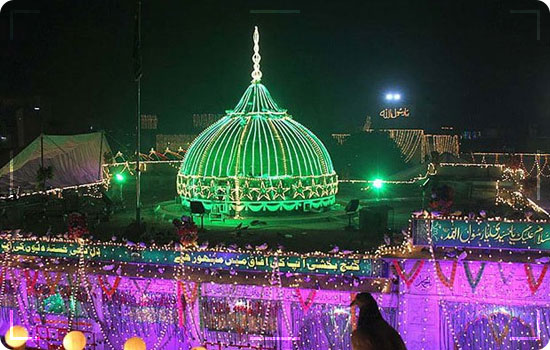
Famous Shrines of Pakistan: Data Darbar Ganj Bakhsh Hajveri, Lahore
He played an extraordinary role in spreading religion throughout South Asia . He crossed the Indus River to the Caspian Sea and conveyed the message of Islam. Furthermore, he has a good education and is a disciple of Woolsey Sufism. Additionally, he attended the Sufi Al-Junaid School, founded by Junaid Baghdad, one of the great Sufi saints.
Data Darbar is the most significant shrine in Pakistan. It looks peaceful and peaceful, and people come here to rest. Jang Bakhsh, a white marble data cemetery built by Sultan Zakir Din Ibrahim Ghaznawi.
Hazrat Abdullah Shah Gazi Karachi
Presumably, to protect Pakistan’s largest city from typhoons and other catastrophic events, the tomb of Abdullah Shah Ghazi is the most visited in the country. Abdullah Shah Ghazi (Abdullah Shah Ghazi) was born in 720 AD in Medina, one of the holiest cities in Islam, and is a tribe of Bani Hashem with a long history. Descendants of the Prophet (May God bless him and give him peace). He was educated in Medina until he immigrated to Sindh as a businessman in 760.
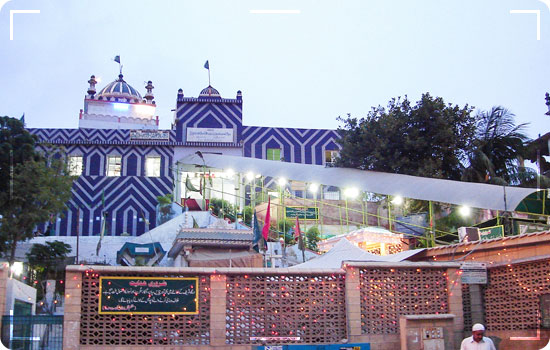
Famous Shrines of Pakistan: Hazrat Abdullah Shah Gazi Karachi
He belongs to the Saadat family, one of the noblest families in Islam, and therefore received a warm welcome. He died in 773 and was buried by the sea in Karachi. His tomb was built on a high platform, but the royal tomb was under the stairs. His Mazar attracts a constant influx of believers for various reasons: preaching love and forgiveness and resisting tropical disasters. As shown by recent events, it seems to be working. Devotees pay tribute to the saints every year, saying that doing so can satisfy their wishes. A large-scale celebration to commemorate Abdullah Shah Ghazi (Abdullah Shah Ghazi) is also held here every December, which lasts more than three days.
Hazrat Lal Shahbaz Qalandar Sehwan Sharif
Syed Muhammad Usman Marwandi was known as Islamic Sufism in the 13th century. Lal Shahbaz Qalandar was born in Iran in 1177. He is a famous Sufi poet and writer who traveled throughout the Islamic world and later settled in Sahwan Sharif. Today, his body lies under a vast but detailed mausoleum.
During the trip, he visited Multan (a city in Pakistan ) and met many wonderful saints, Bahauddin Zakaria, Fariduddin Gangeskar, and Jalaluddin Surkh Bush Bukhari. They became great companions and joined hands to spread the message of Islamic love and peace.
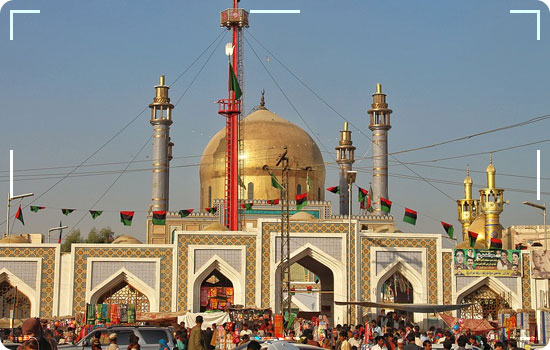
Famous Shrines of Pakistan: Hazrat Lal Shahbaz Qalandar Sehwan Sharif
The tomb of Lal Shahbaz Qalandar was built in 1356 and is decorated with unique patterns written in Sin German. Even the King of Iran, Reza Shah Pahlavi, added mirrors and gilded doors to the temple. A large number of believers visit here every Thursday. If you see during this time, you will hear Falun Gong (dhamal), which music is played with drums in Margib prayers.
Sachal Sarmast Shrine, Khairpur
Sachal Sarmast (1739-1829) is a Sufi poet from Sindh, Pakistan. The saints are known as Shair-e-Haft Zaban (poet in seven languages) and Sartaj-us-Shuara. Furthermore, Sachal Sarmast was buried in Khairpur, Sindh. Abdul Wahab was born, and his familiar name, Sachal Sarmast, is his name: “Rohani Amin.” Through poems written in seven unique languages (including Sindhi, Siriki, and Persian), he spread the message of heavenly love and the principles of mysticism. Therefore, his followers awarded him other titles: Haft al Zuban Shair (writer in seven languages) and Sartaj-us-Shuara.
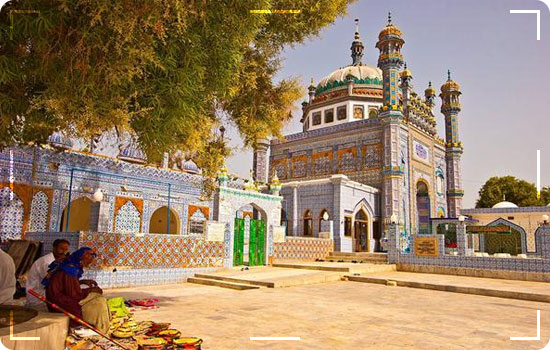
Famous Shrines of Pakistan: Sachal Sarmast Shrine, Khairpur
There are nine types of his Persian poems, Divan i-Ashqar and Dard Nama, which mainly contain philosophical texts. He wrote poetry in several languages, the most famous being Sindhi and Saraiki. His real name is Abdel Wahab Farouqi, and his nickname is “Sachal” or “Sacho.”
He used this pseudonym on his hair. Sachu means “sincerity,” and Sarmast means “ecstasy.” Sachal Sarmast means “true mystic” and can also be translated as “ecstatic saint of truth.” It is estimated that the sanctuary was built in 1330 AD. It is celebrated every June and attracts thousands of devotees.
Hazrat Bahauddin Zakaria Shrine, Multan
The tomb of Bahauddin Zakaria is located in the center of Multan, in the northeast corner of the ancient fort in the center of the castle. Multan is known as the city of saints and is the last resting place of the famous Sufi saint Bahauddin Zakaria. The sanctuary is an easily recognizable building built in 1267 and made of red bricks. It resisted British rule but must be restored.
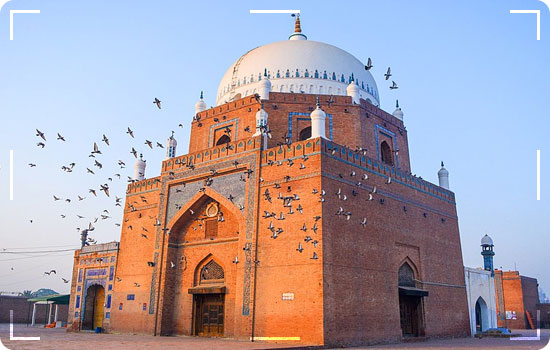
Famous Shrines of Pakistan: Hazrat Bahauddin Zakaria Shrine, Multan
This building was built in the early and mid-13th centuries and represented the earliest example of a unique transnational architectural style. According to Mumtaz, “With its square plan, octagonal drum, central dome, and minaret, the type of shrine architecture to be endured in the lower Indus River was determined. 700 years ago” (Muttaz, Nos. 44-45 page).
Although the temple was significantly damaged by British bombing on the site in 1848, Makhdoom Shah Mahmud faithfully restored it to its original foundation a few years later.
Shah Rukn-e-Alam Multan
This octagonal mausoleum is the second largest in the world, reminiscent of the 14th Sheik Rukn-ud-Din Abul Fath , considered one of Multan’s most famous Sufi saints. The tomb of Shah Rukn Alam is located in the center of Multan. It is Sufi Sheik Rukn-ud-Din Abul Fath (1251-1335) and dozens of followers and relatives tombs.
Built between 1320 and 1324, it is usually classified as a significant landmark of Indo-Islamic architecture. It has inspired later monuments such as the Tugluk Mausoleum in Delhi and many shrines in Uch Sharif.
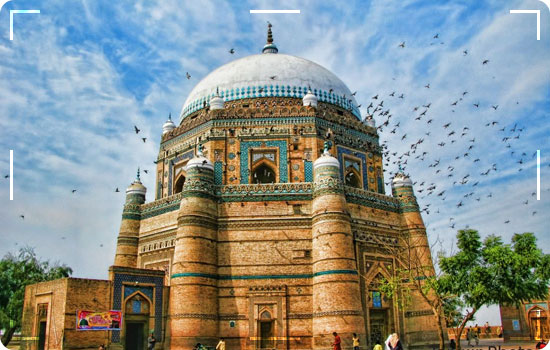
Famous Shrines of Pakistan: Shah Rukn-e-Alam Multan
Khawaja Ghulam Fareed Shrine Rajanpur
This beautiful tomb is owned by the famous 19th-century Punjabi Sufi poet Khawaja Ghulam Fareed, who is multilingual and belongs to the Chishti-Nizami Sufi order. Hazrat Khawaja Ghulam Farid was born in 1261 (November 26, 1845 AD) in Kot Mithan (Pakistan), Chacharan, Sindh Province, to a family of Arab immigrants who came to the country. He was an outstanding scholar at the time and wrote several books.
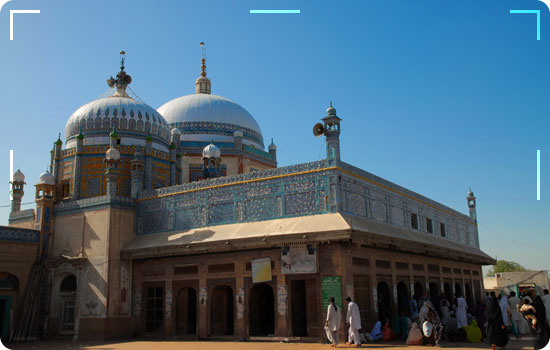
Famous Shrines of Pakistan: Khawaja Ghulam Fareed Shrine Rajanpur
He knows Arabic, Persian, Urdu, Sindhi, Punjabi, Braj Bhasha (Braji), and Seraiki. He is a poet of Siraiki and Urdu. He also wrote some poems in Sindhi, Persian, and Braji languages. He is an imperial poet. Oppose the British rule in Bahawalpur. In his verse, he said to Governor Bahawalpur: ” You rule yourself on your state and finish police station of British from your state.”
Shah Abdul Latif Bhitai, Hyderabad
The mausoleum of Sindh’s greatest Sufi poet, Shah Abdul Latif Bhitai (1689-1752), is in Hyderabad. Bhitai’s poems have been translated into many languages, equivalent to those of Persian poet Jalal al-Din Rumi.
The great saint, poet, and philosopher Shah Abdul Latif Bhittai was the son of Syed Habib Shah. The ancestors of Shah Latif moved from Herat to Sindh during the Tamer Lane and made it their home. Shah Latif (Shah Latif) began to write poetry when he was young.
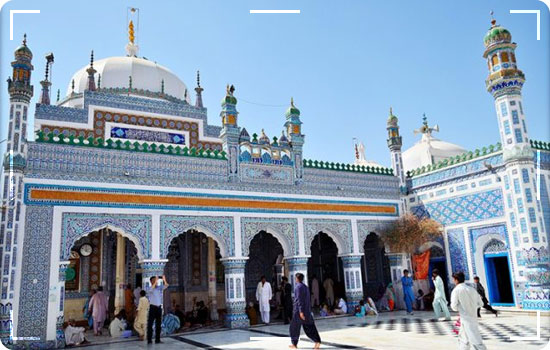
Famous Shrines of Pakistan: Shah Abdul Latif Bhitai, Hyderabad
Shah Latif wrote poems in the language of familiar people. He is also a great musician, simplifying the time’s music. He invented a simple musical instrument, “tamburu,” which is now well known throughout Sindh. Shah Latif died in Bhit Shah in 1752.
The famous Sindhi King Ghulam Shah Kalhoro built a mausoleum on his tomb. Shah Latif’s urs is held in the mausoleum on the 14th of Safar every year. People from all over Pakistan expressed their gratitude.
Shah Shams Tabriz, Multan
The tomb is said to be that of Shah Shams al-Tabrizi, a Sufi tribe member who lived in the 12th and 13th centuries. Shams al-Tabrizi or Shams al-Din Muhammad (died 1248) was a Persian Muslim believed to be the spiritual teacher of Maulana Jalaluddin Muhammad Balkhi (also known as Rumi). He is revered in Rumi’s collection of poems, especially in “Divan al-Shams al-Tabrizi” (Shams Tabrizi’s Collection).
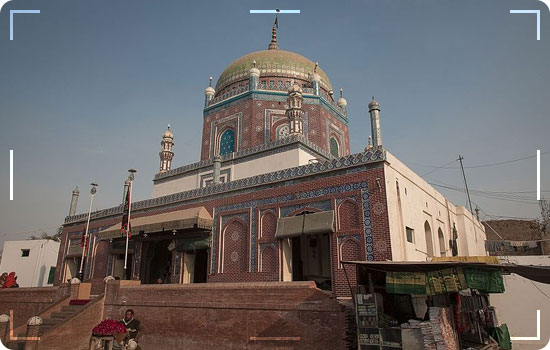
Famous Shrines of Pakistan: Shah Shams Tabriz, Multan
Traditionally, Shams taught in Rumi in Konya for many years and then retired in Khoy city (now in West Azerbaijan Province, Iran), where he died and was buried. UNESCO has nominated the tomb as a World Cultural Heritage Center. A saint named Shams al-Tabrizi was also buried in Multan, Pakistan. The tombstones there clearly indicated that Shams al-Tabrizi himself was the spiritual guide of Rumi from Konya, Turkey.
Baba Bulley Shah, Qasoor
The mausoleum in this palace is the resting place of the Sufi poet Baba Bulley Shah in the 17th century. Baba Bulley Shah was a poet of Sufi Punjabi, believed to have lived between 1680 and 1758. His real name is Abdullah Shah, but his Bulley is his family title, the name he chose as a poet. Bulley Shah is a direct descendant of the Prophet Muhammad (PBUH) through Sheikh Abdul Qadir Gilani (RA) ‘s descendants from Baghdad.
Sikh Tourism In Pakistan
Very common in South Asian poetry, there is a signature line in his poem that contains his name. Bulley Shah moved to Kasur, which is now in Pakistan. The form of poetry used by Buhler Shah is mainly called “Kafi,” a style of Punjabi, Sindh, and Siraiki poetry used not only in Sindh and Sufis in Punjab but also among Sikhs. Bulley Shah’s writings portray him as a humanitarian who provides solutions to the social problems of the world around him in his life.
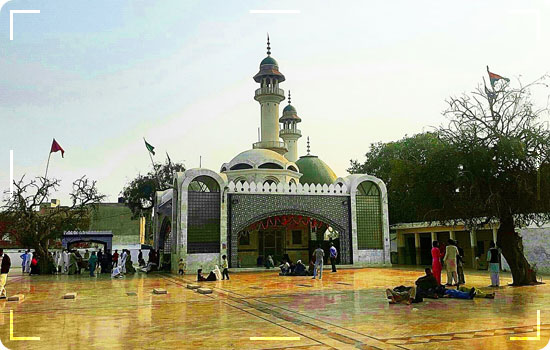
Famous Shrines of Pakistan: Baba Bulley Shah, Qasoor
His spiritual master is Shah Inayat Qadri of Lahore. His Bulley Shah’s ancestor was Och Gilanian of Bahawalpur, who is now part of Pakistan, even though his ancestors are from Uzbekistan. Hara moved. From there, his family moved to Malakwal, Pakistan, and then to Pandok, about 14 miles southeast of Kasur, Pakistan.
Muslims will visit these shrines not only but also people of different religious beliefs. Unsurprisingly, the missionaries spread the message of love, harmony, and peace everywhere, like the mysterious saints buried inside. These values are not limited to specific religious beliefs. The magnificent scenery and tranquil atmosphere of these holy sites provide visitors with great opportunities for relaxation. Everything is surprising and important in the encircling area.
Since 2017, Saba Ghani has been serving as the talented and dedicated chief content writer for Pakistan Tour and Travel & EMHI Solutions. With her exceptional writing skills and in-depth knowledge of the travel industry, she has been instrumental in crafting engaging and informative content that captivates the audience. You can catch her at [email protected] or Twitter
Related posts
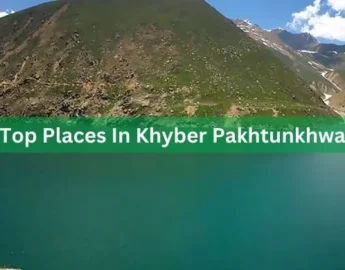
Best 20 Places In KPK To Visit

Ultimate Guide To Dino Valley Islamabad
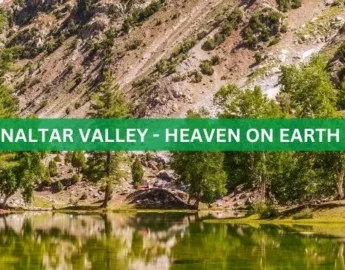
Naltar Valley – Places To Visit In Naltar Valley
Share your social moments, #pakistantours, follow us on instagram.
Offering Pakistan Tour And Travel plans from Islamabad , Lahore & Karachi
Call Us: +92335 5577443
Whatsapp: +92335 5577443, office # e2, 5th floor, khalifa heights, near chaklala road, committee chowk rawalpindi, pakistan, destination.
- Naran Kaghan Tours
- Hunza Valley Tours
- Murree Tour Packages
- Lahore Tour Packages
- Azad Kashmir Tours
- Swat Valley Tours
- Skardu Valley Tours
Honeymoon package pakistan
- Pakistan Couple Tours 2024
- Neelum Valley Tour Packages
- Fairy Meadows Tour Package – 15 % Off Fairy Meadows Tours
- Azad Kashmir Tour Packages 2024
- Skardu Tour Packages by air & by road
© 2014- 2023 Pakistan Tour and Travel . All Rights Reserved.. Developed By: Emhi Solutions
Religious Sites in Pakistan, Asia
Religious sites in pakistan.
- Points of Interest & Landmarks
- Sacred & Religious Sites
- Historic Sites
- Architectural Buildings
- 5.0 of 5 bubbles
- 4.0 of 5 bubbles & up
- 3.0 of 5 bubbles & up
- 2.0 of 5 bubbles & up
- Good for Big Groups
- Budget-friendly
- Good for Kids
- Good for a Rainy Day
- Hidden Gems
- Adventurous
- Good for Couples
- Honeymoon spot
- Good for Adrenaline Seekers
- Things to do ranked using Tripadvisor data including reviews, ratings, photos, and popularity.

1. Badshahi Mosque
2. Faisal Mosque

3. Tooba Mosque
4. Grand Jamia Mosque
5. Katas Raj Temples
6. Mahabat Khan Mosque
7. Gurdwara Darbar Sahib Kartarpur

8. Jaulian Buddhist Monastery

9. Lal Shahbaz Qalandar Shrine
10. Shrine of Shah Yusuf Gardezi

11. Chaqchan Mosque
12. Golrah Shrine

13. Dharmarajika Stupa And Monastery

14. Bari Imam Shrine

15. Gurdwara Nankana Sahib
16. Imperial Mosque Lahore / Badshahi Masjid Lahore
17. Darbar E Aalia Khari Sharif
18. Manthal Buddha Rock

19. Kargah Buddha
20. Qadam Gah Mola Ali
21. Abbasi Jamia Masjid Qila Derawar
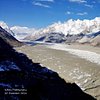
22. Fatima Church
23. Sialkot Cathedral
24. Khilingrong Mosque
25. Sharda Peeth
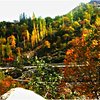
26. Hinglaj Mata Shakti Peeth

27. Amburiq Mosque

28. Darul Uloom Mosque
29. Gurdawara Punja Sahib
30. Lal Masjid
What travelers are saying


- Search for: Search
- Sutras Sutta English Complete English-translated Buddhist Sutras (Suttas) and commentaries from all traditions. Over 50 features and related topics.
- Buddhist Practices
- Lamrim / Ngondro
- Rebirth / Reincarnation
- Mindfulness
- Theravada The Elder School in Buddhism.
- Zen • Chan • Seon
- Dharma Dates 2024
- Dharma Downloads
- The Scientific Buddhist
- Book / Movie Review
- In Buddha's Words
- Bodhisattvas
- Guru Rinpoche
- Avalokiteshvara
- Medicine Buddha
- His Holiness Dalai Lama
- About Buddha Weekly Online Magazine
- Free Email Subscription
- Writers and Contributors
- Buddha Weekly Writer Guidelines
- Cookie Policy

Supreme Vajrasattva as Yidam: the only practice most people need and the most powerful healing and purification method in Vajrayana Buddhism

Cundi Bodhisattva Dharani Sutra

Practical Guide to Akshobhya Buddha and Vajra Family with Sadhana: Purifying Practices and Wisdom Insights For Modern Buddhists
- Support Buddha Weekly
- Buddha Weekly Youtube

- Buddha Weekly Books (BWB)
- Author Submission Form
- Member Portal
- Member Login
- My Member Account
- Member Videos Although our videos are available to all on Youtube and on Buddha Weekly (production costs are supported partially by advertising.) Here, we are publishing our HD videos to a private channel on Vimeo as a special thank you to our members and Patrons who generously support the mission “Spread the Dharma. Members who are logged in can view these.
- Support Buddha Weekly’s Mission
Buddhist tourism in Pakistan: The Buddha’s gift to the world; a 20-picture tour of important Buddhist sites
Millions of people around the world embark annually on spiritual journeys to soothe their souls. Global religious tourism is one of the fastest growing segments in travel today. According to the UNWTO, 300-330 million tourists visit the globe’s most important religious sights every year.
To put things into better perspective, 2.5 million people per year visit Bodh Ghaya, the site of Buddha’s Enlightenment. [1] In 2017, 2.4 million Muslims travelled from all over the world to Saudi Arabia for the annual Hajj congregation. Around 4 million Christian pilgrims attended papal events, prayers services, or liturgies in the Vatican in 2016.
By Sarmad Ishfaq
Pakistan, with many important historical Buddhist sites, is noticeably trending in “religious tourism” due to its extensive heritage of Gandhara and Emperor Ashoka the Great. [Over 20 beautiful photos in feature .]
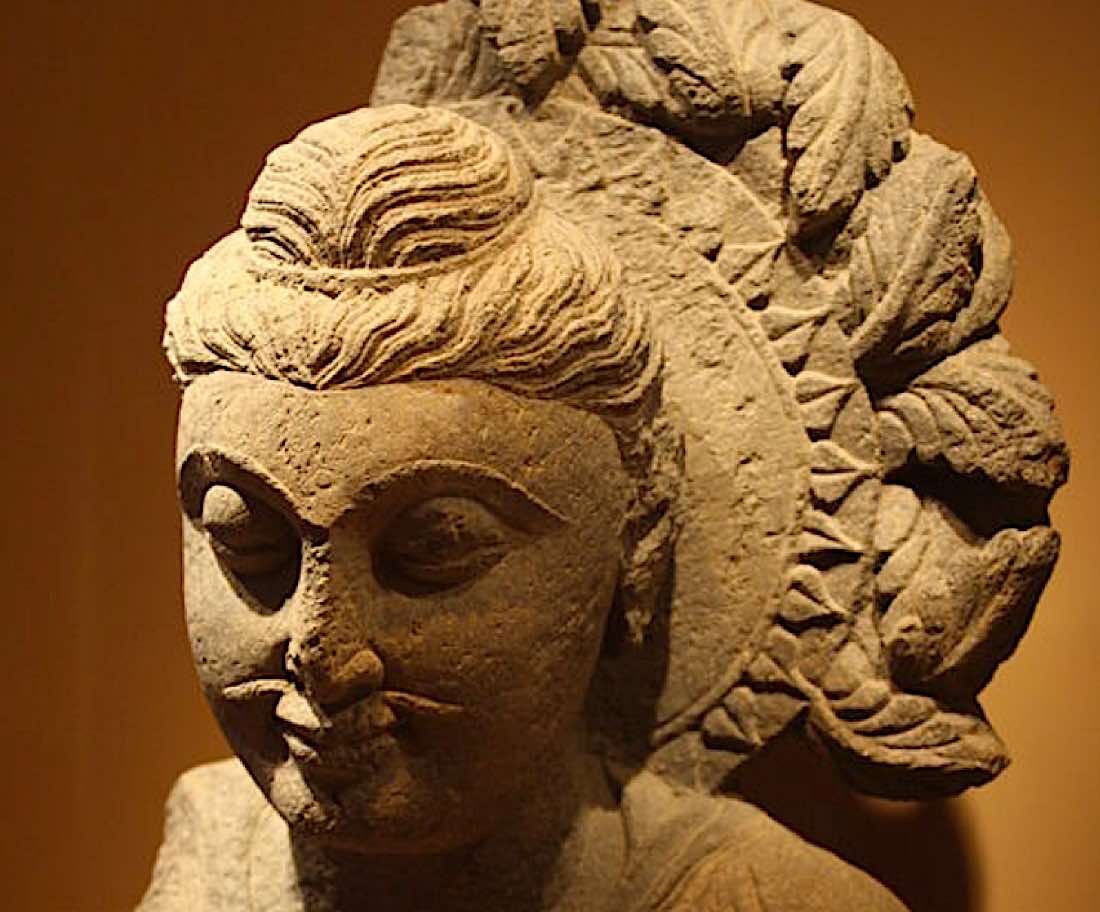
The Great Sleeping Buddha

Just last year, Pakistan’s Prime Minister Imran Khan announced his intention of increasing Buddhist tourism in the country — shortly after an announcement disclosing a newly unearthed 48-feet long sleeping Buddha near Bhamala Stupa in Haripur district.
The Sleeping Buddha is the world’s oldest sleeping Buddha and dates back to the 3rd century. Five hundred other Buddhism related objects were excavated in the same area further reinforcing the Buddhist legacy of Pakistan.
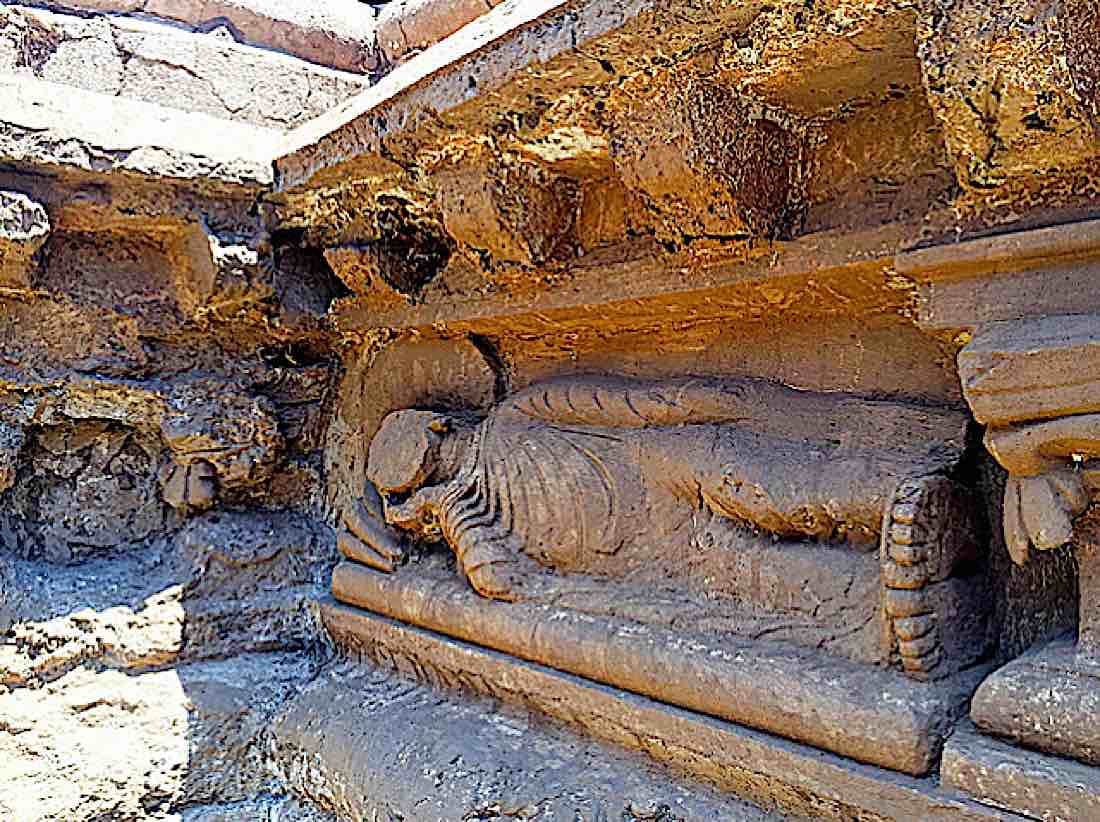
Pakistan’s tourism trends — Buddhist tourists
Pakistan may be the next big thing in Buddhist historical-site tourism, although for years it was held back by a bureaucratic visa system as well as the unstable security situation. With a renewed focus on Buddhist Tourism, this is changing, with a new streamlined visa process, the improved security situation, as well as the introduction of online visas.

In 2018, the British Backpacker Society listed the country as the #1 tourism destination worldwide. Tourism numbers have picked up in recent years with popular international vloggers and writers praising and promoting the country’s idyllic landscape as well as the locals’ profound hospitality.
However, the country is still lagging behind when compared to South Asian and global tourism numbers. Concerted efforts are being made to further grow tourism in the country. Effectively promoting the country’s Buddhist tourism potential is an essential avenue to realizing this goal.

Buddhist legacy in Pakistan — Gandhara heritage
Siddhartha Gautama, later revered as the Buddha, spread his teachings on the Indian subcontinent as long ago as 2600 years. Buddhism spread around Pakistan, Afghanistan, and India. [See map Note 3.] In what is today modern-day Pakistan and other areas, the famous Buddhist ruler Ashoka the Great (304 to 232 BCE) spread Buddhism and Buddhist monuments and art throughout the region. (Gandhara Civilization 1500 BCE to 515 CE.) [2]
Although, Buddhists who live in Pakistan only amount to a few thousand, more and more Buddhist tourists arrive each year. The most popular country for Buddhist tourists from Japan, China, Korea, and Thailand are Buddhist sites in India.

This hidden potential for Pakistan, however, is extraordinary, since Buddhism one of the world’s largest spiritual paths, with over 520 million followers. Most Buddhists live in Asia and are relatively close in proximity to the country. Pakistan’s neighbour, China, has around 244 million Buddhist followers.
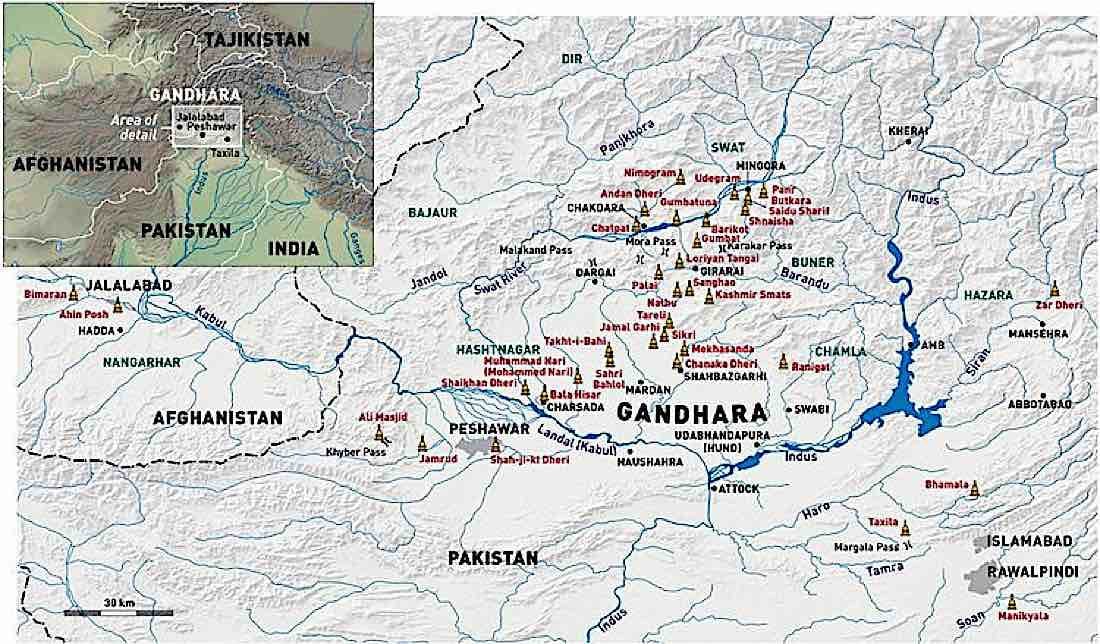
Major Buddhist sights and artifacts
Taxila, in modern-day Punjab, Pakistan, is particularly important, because the Buddha himself travelled and taught in this part of the country. The city was a Buddhist centre for learning, architecture, sculpture, and art for over 1000 years.
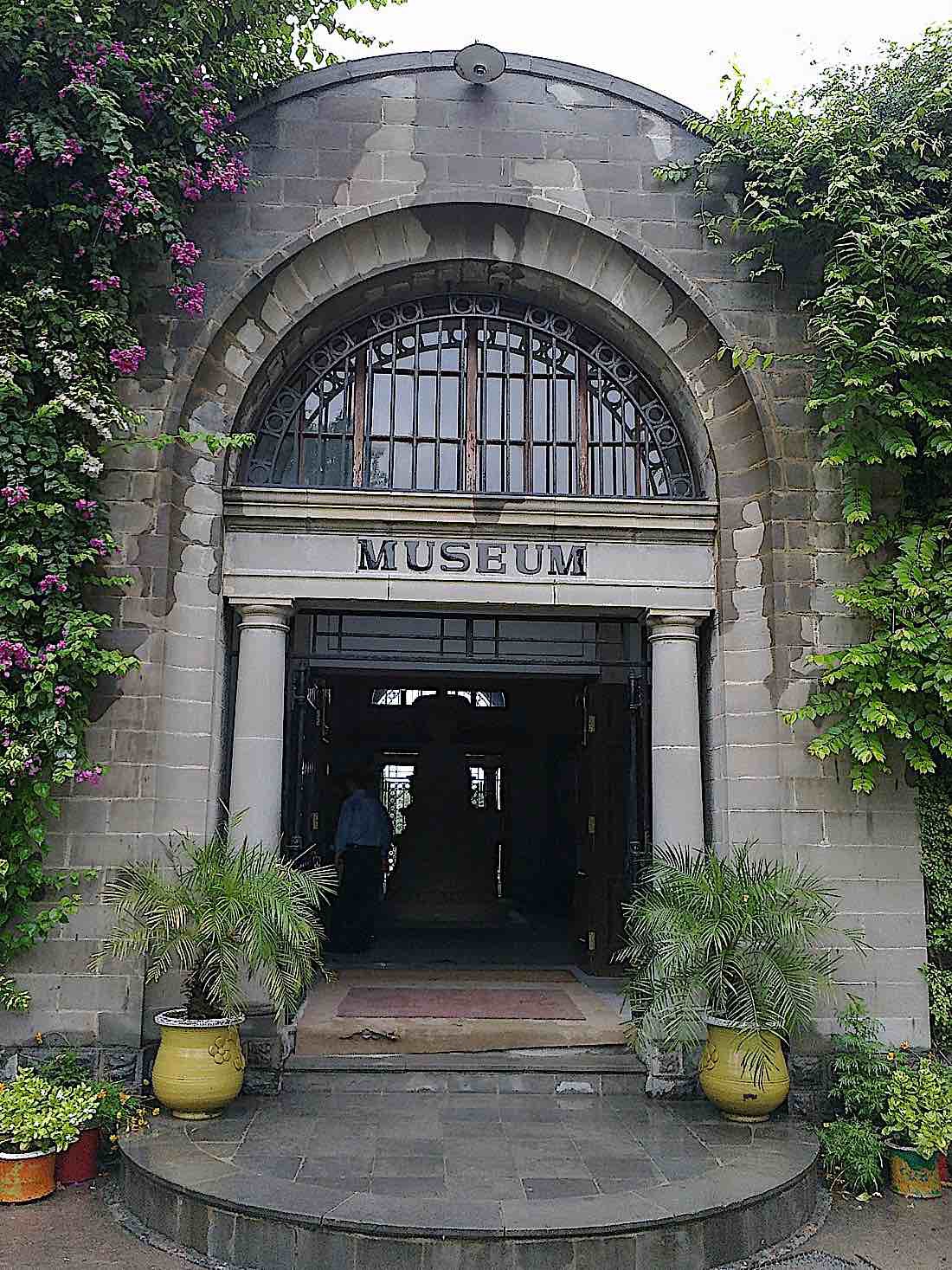
The Taxila museum houses breath-taking relics and art from the Gandhara civilization. Most significantly, the Taxila Museum is home to the teeth and bone relics of the Lord Buddha.
The art in the museum revolves around the Buddha’s life stories and individual images. Stories have been carved in relief in stone and preserving images of Buddha’s life: his birth, his pre-enlightenment luxurious life, his departure from the palace to seek enlightenment, as well as post-enlightenment scenes such as the Buddha taming a mad elephant and even the Buddha’s Parinirvana. There are around 24 stories of the Buddha in stone relief here and more than 1,400 stone artefacts.

I have visited Taxila and the museum on a couple of occasions. The history and art is beautiful, although more should be done to facilitate tourists — especially coming from non-English speaking countries such as Japan, South Korea, and China.
The Korean scholar, Lee Kun Jong, on a visit to Taxila in 2018 raised similar concerns; he pointed out that the museum did not offer leaflets for foreigners and that there was a lack of informative plates at that time — leaving many tourists without understanding the significance of the artifacts related to the Buddha.
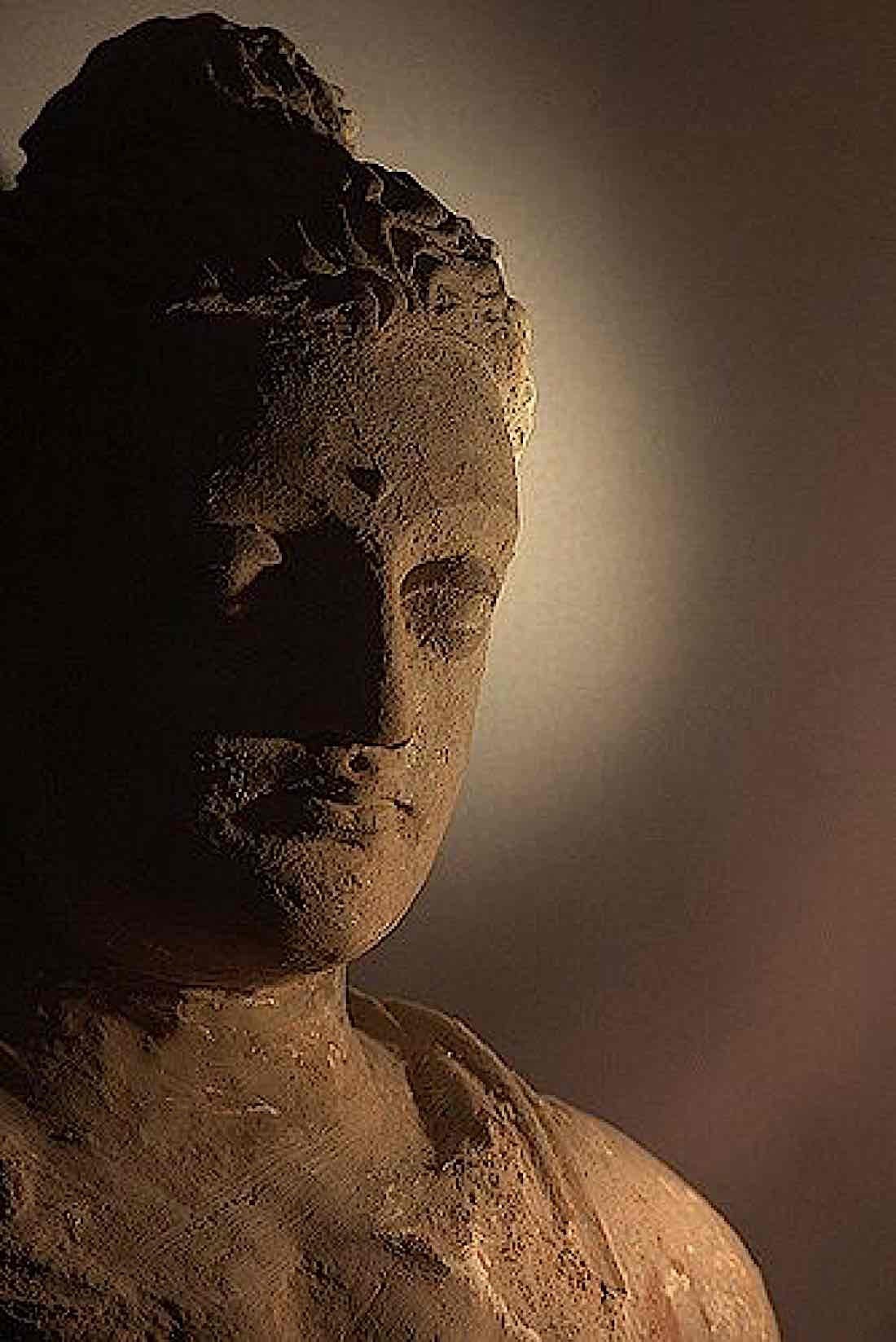
He suggested the tourism department or government should seek assistance from UNESCO and others while also initiating joint-collaborations with international universities. The professor stated that he had visited over 70 countries — and none had the tourist potential of Pakistan and that the country can become a hub for Buddhist tourists.
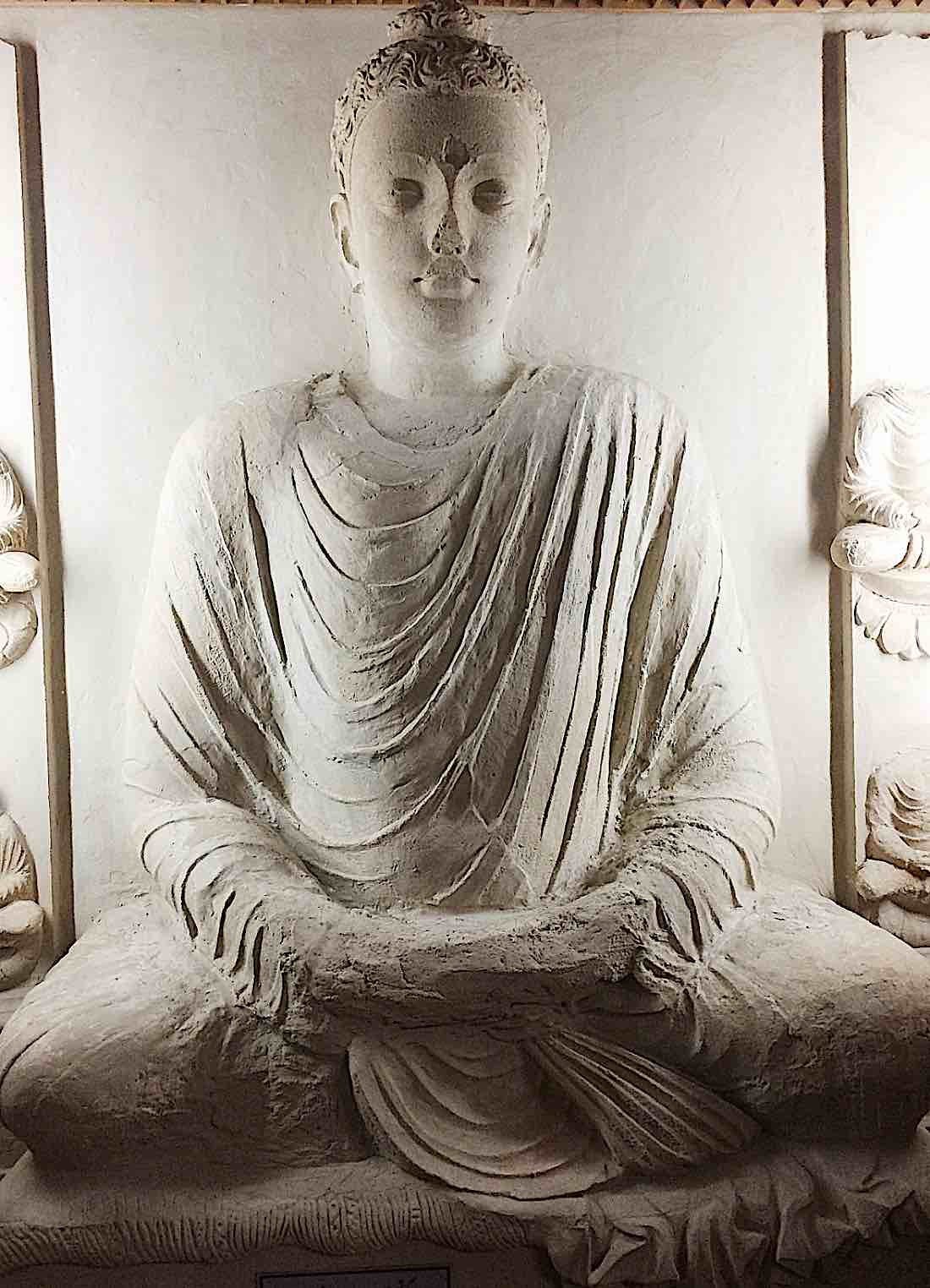
Taxila Museum artifacts
The artifacts in the Museum have been discovered from various sights in Taxila in Punjab province are a must-visit for any Buddhist, or admirer of the faith or antiquities. The attractions include the Bhir Mound (600-200 BCE), Dharmarajika Stupa and Monastery (300 BCE – 200 CE), Sirkap (200 BCE – 600 CE), Jaulian Monastery (200 – 600 CE) and Jandial Temple (c.250 BCE). The Sirkap city contains a round stupa which is considered to be one of the oldest in the subcontinent. The nearby Dharmarajika Stupa dates back to the 2nd century CE and is particularly noteworthy as it was built to house bone fragments of Lord Buddha.
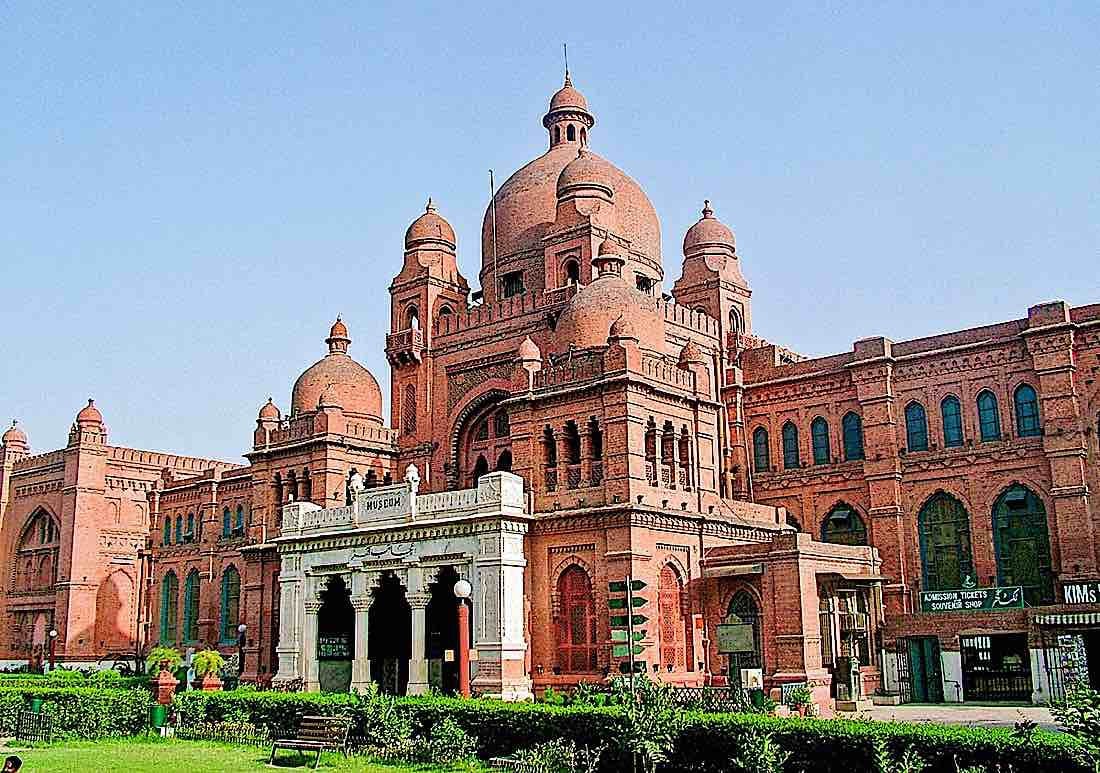
Lahore Museum — a trove of Buddhist art
Staying in Punjab province, the Lahore Museum boasts a treasure trove of Buddhist art from the ancient Indo-Greek and Gandhara kingdoms. The Museum has a miniature stupa in great condition as well as a plethora of historic relics, but its crown jewel is the Gandhara-era “Fasting Buddha”.
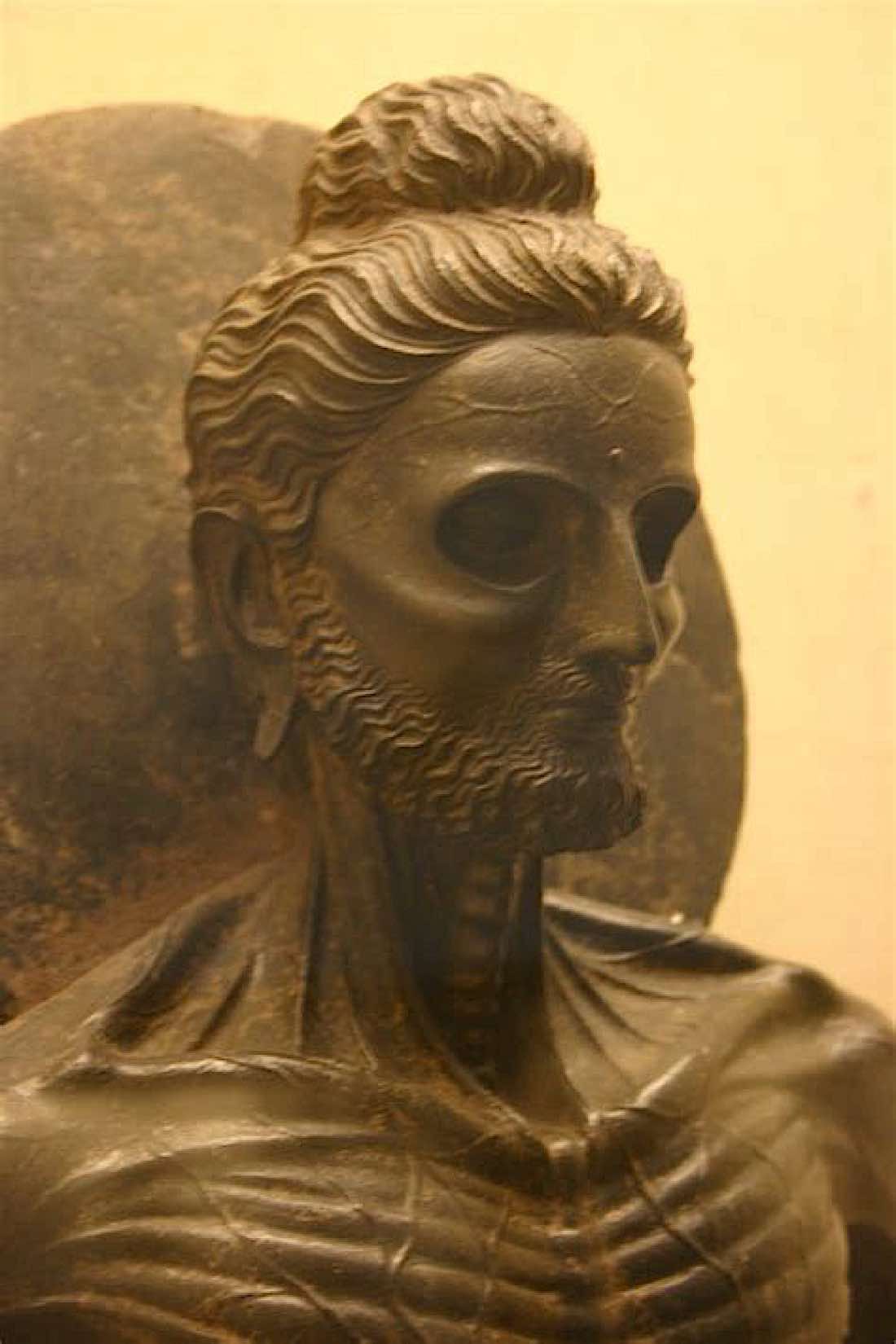
The Khyber Pakhtunkhwa (KPK) province houses a huge Buddhist monastic complex, named Takht-i-Bahi. I have also personally visited this complex and it is one of my favourite Buddhism-related places in the country. It is near the city of Mardan and is nestled poignantly atop scenic green hills. The monastery has the honour of being the largest Buddhist remains in Gandhara as well as being listed in the UNESCO World Heritage list.

Beautiful Swat Valley
In Swat, KPK, one can find many stupas and monasteries spread around the picturesque mountains and valleys. Nicknamed Pakistan’s Switzerland, the Swat valley once housed as many as 1400 monasteries. The famous Gandhara School of Sculpture was also once present in the valley.
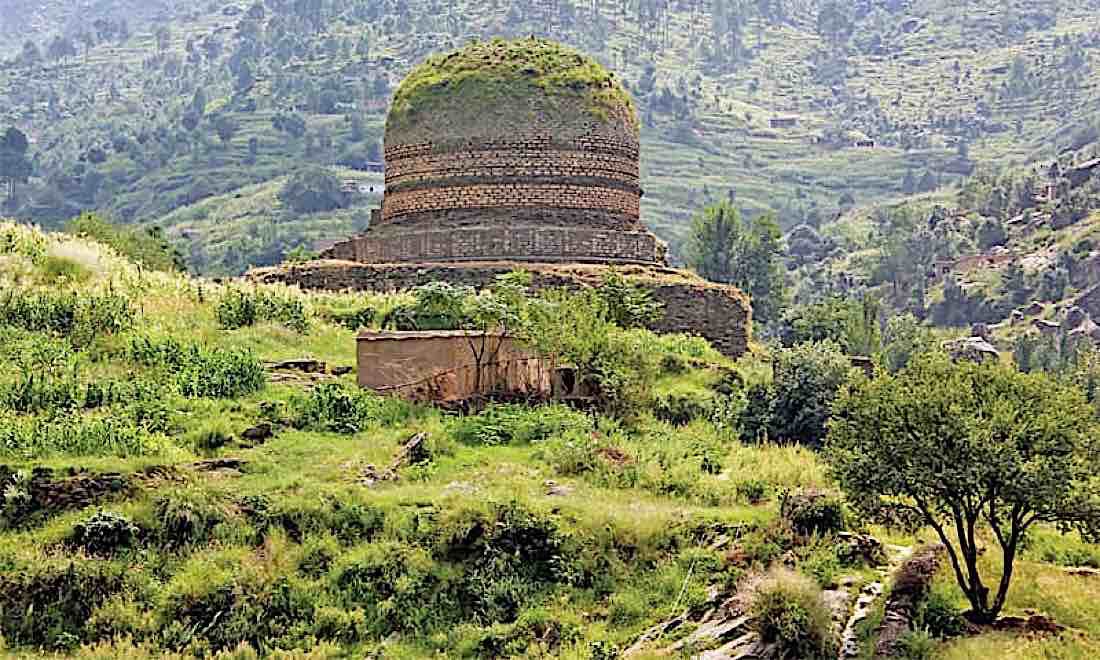
Some of the most prominent stupas in Swat include the Butkara Stupa near Mingora, the Amluk Dara Stupa near Nawagai village, and the Shingardar Stupa in Shingardar village. Apart from these, Swat also houses an iconic 7th century seated Buddha, in Jahanabad, sculpted in rock, which was defaced but restored in 2016 thanks to Italian archaeologists. This rock sculpture is considered one of the biggest in the region and ancient accounts depict this area as being a central Buddhist location.

Edict monuments of Ashoka, which are spread around the subcontinent, can also be found in Pakistan. These edicts are important to Buddhists as they come directly from Ashoka himself – one of the most important rulers in Buddhism’s history. Mansehra Rock Edicts are 14 edicts inscribed in rocks in the city of Mansehra, KPK, which date back to the 3rd century BC. The edicts inform the public of Ashoka’s Law of Piety and the expansion of Buddhism.
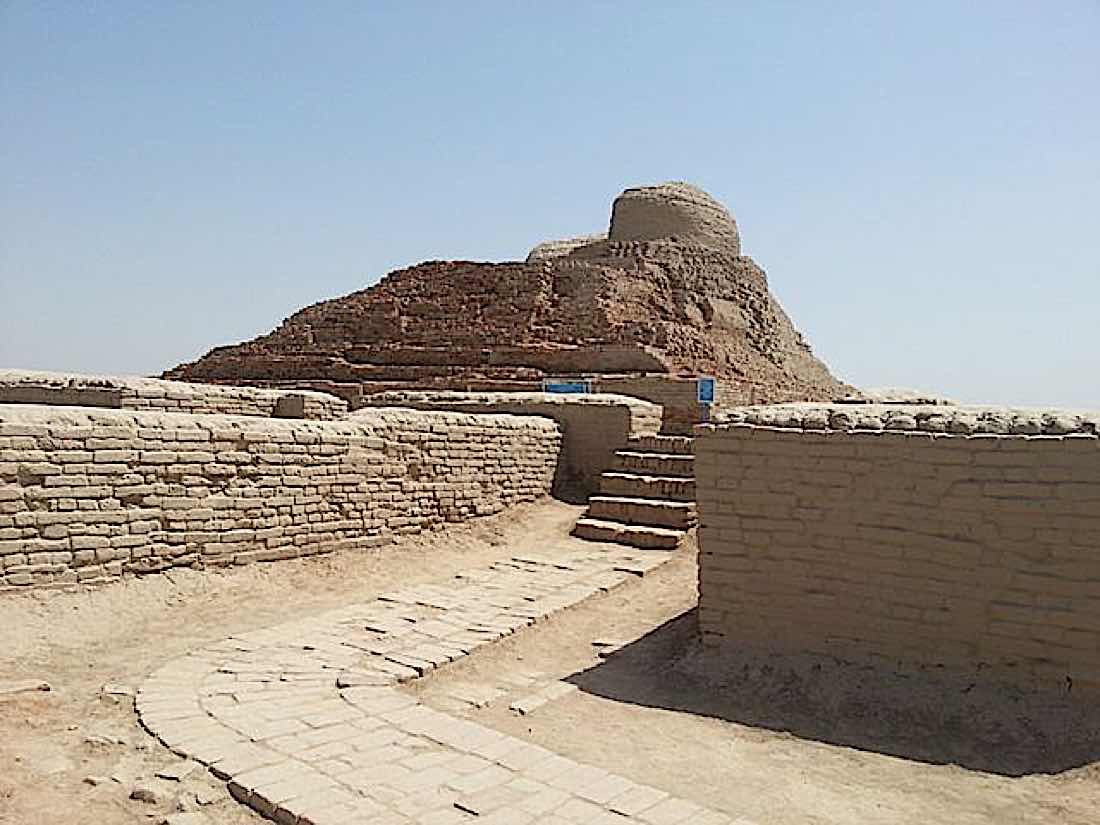
Gilgit-Baltistan — Manthal Buddha Rock
Conversely, in one of Pakistan’s most stunning regions, Gilgit-Baltistan, there are many more Buddhist wonders. For example, the Manthal Buddha Rock located near Skardu. This rock is engraved with a picture of the Buddha and is dated to be around from the 8th century. Other than this, the Sacred Rock of Hunza that is 30 feet high and dates back to the 1st Millennium AD can be found in Hunza, Gilgit-Baltistan.
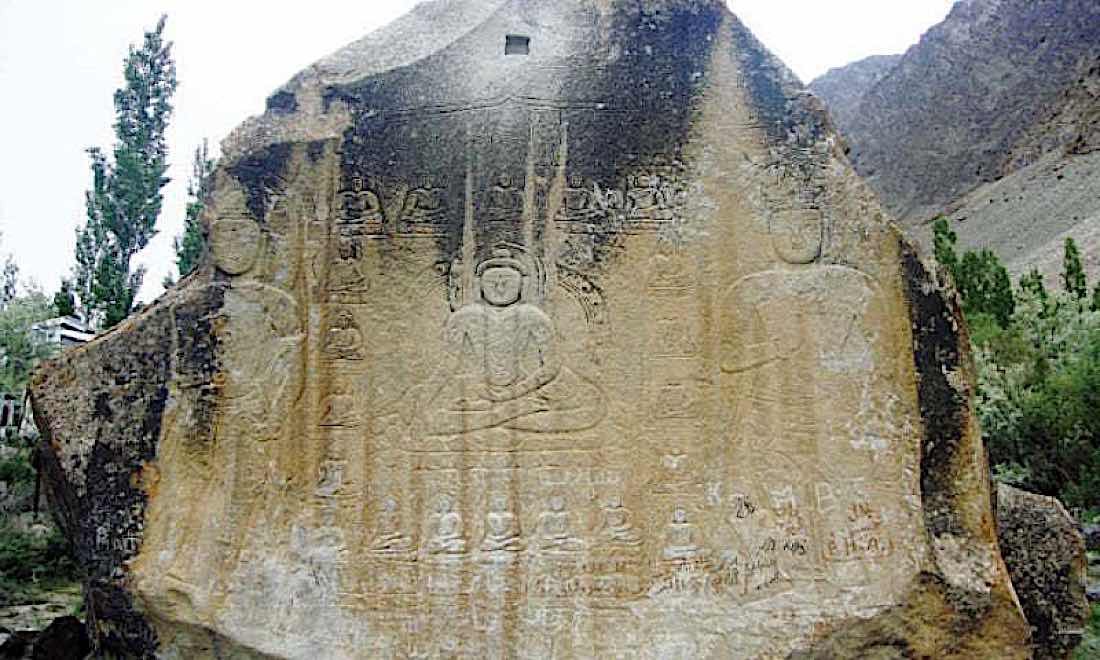
Buddhist remains are also present in the Sindh province. A stupa can be found in the historic Mohenjo-daro archaeological site. Mohenjo-daro was a settlement in the ancient Indus Valley Civilization and is considered one the world’s earliest and most advanced cities. The stupa here magnificently towers and looks over the ancient city. Besides this, there are some beautiful Buddhist artefacts and statues in the National Museum of Pakistan (in Karachi, Sindh) also.
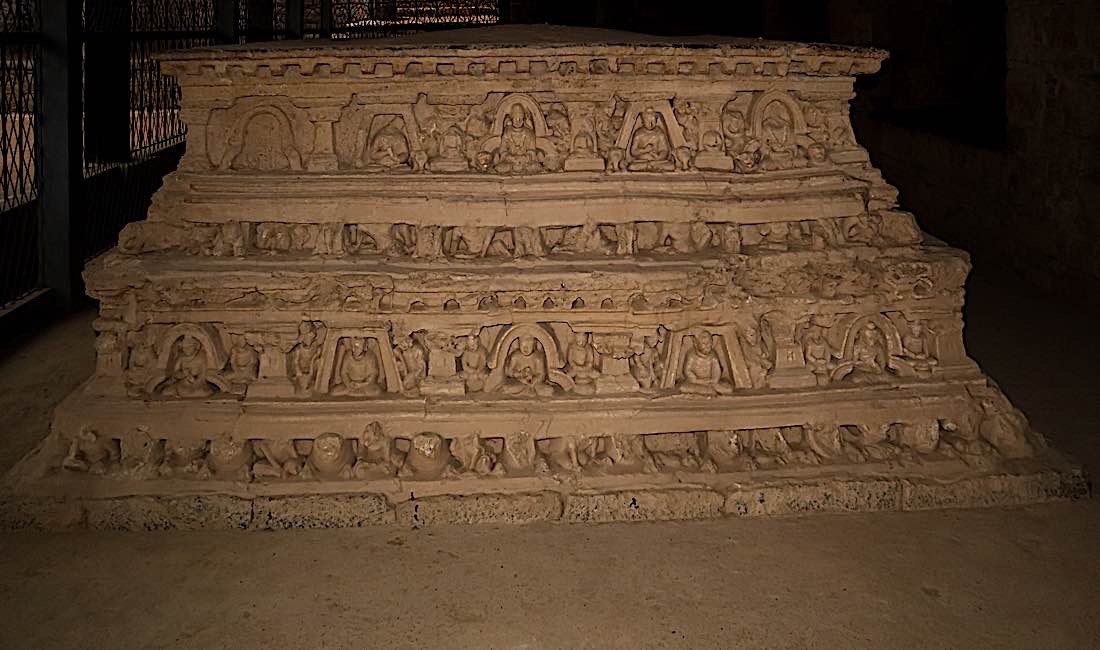
Other Buddhist sights can be found Balochistan province, as well as in Pakistan’s Azad Kashmir region.
Not just history — beautiful scenery
What really engages a tourist to these aforementioned sights is not only the association with Buddhism, but also the splendour of the areas where these stupas, rock carvings, monasteries, and urban centres are settled. The picturesque mountains and hills, the glistening lakes and gushing rivers, and the seemingly endless lush-green colours of the trees and foliage house epics of the Buddhist tradition.
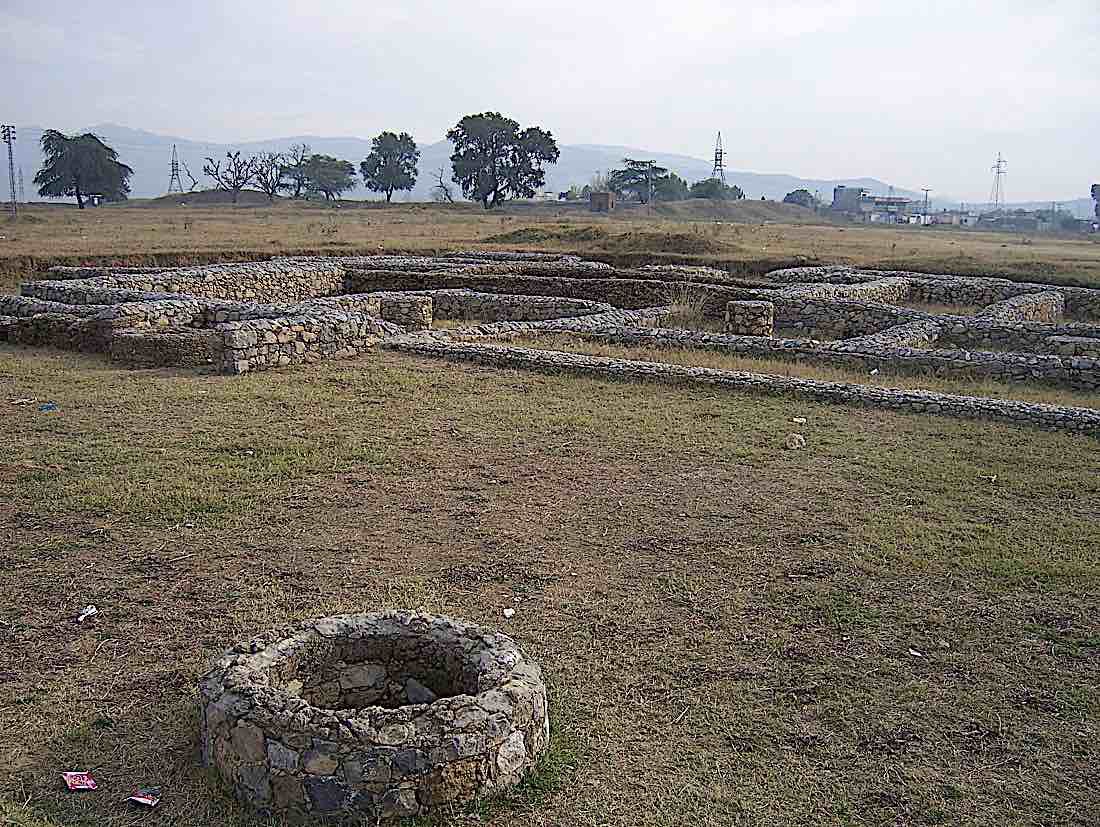
Previous governments have played their part in reviving Pakistan’s Buddhist history, but perhaps not as much as they should have. In June 2011, the Pakistan Peoples Party government sent Buddhist relics from Gandhara to Sri Lanka to be displayed on the grand occasion of the 2,600th anniversary of the Buddha’s enlightenment. In 2016, the Muslim League Nawaz government sent relics including the Buddha’s teeth and bone fragments (from the Taxila Museum) to Sri Lanka for their Vesak festival. Seminars and mutual initiatives have also been held with Singapore and China to promote Pakistan’s Buddhist legacy in the recent past.
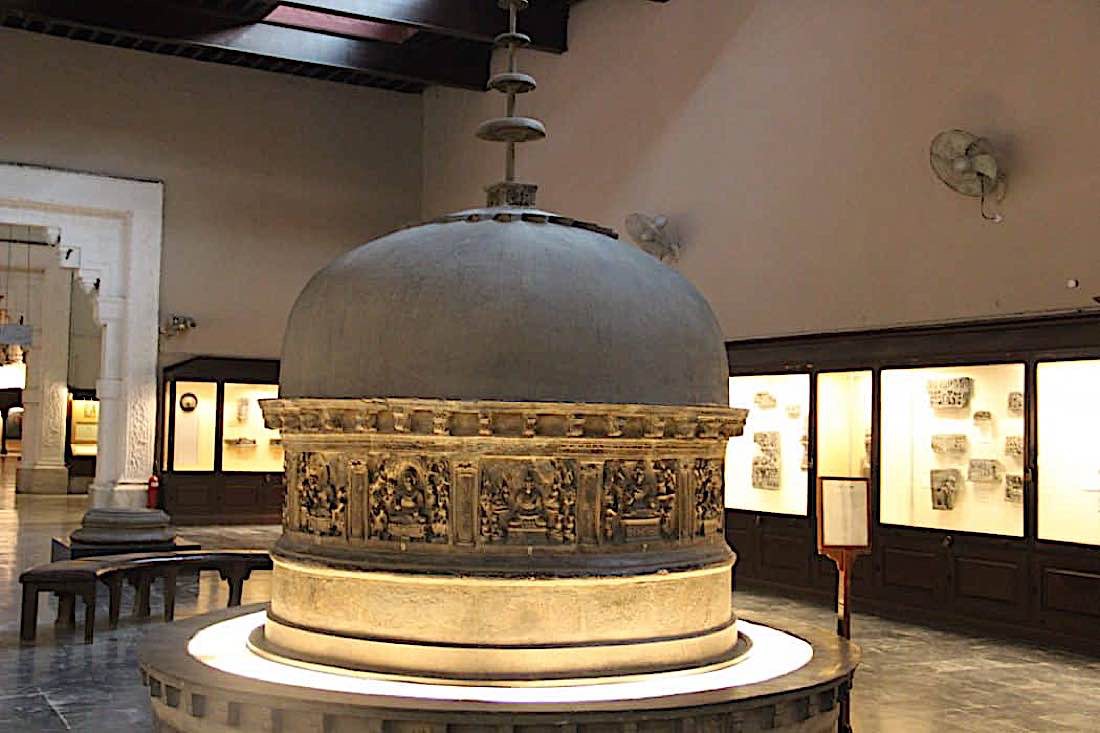
Still work to do — not enough tourist infrastructure
Although, efforts have been made to highlight Buddhism in the country, the work on ground has not nearly been enough. Besides Taxila, (which is under-par in terms of international standards), the rest of the historic sights scattered around Pakistan do not enjoy much or any tourist infrastructure or services. Apart from a signboard detailing some history of the sight, there is not much more. A foreigner, especially a non-English speaking one, will struggle to grasp the history, and significance of these wonders.
The more attention these sights get, the better they will be taken care of, as some sights are deteriorating due to lack of attention from government and international protection and recognition.
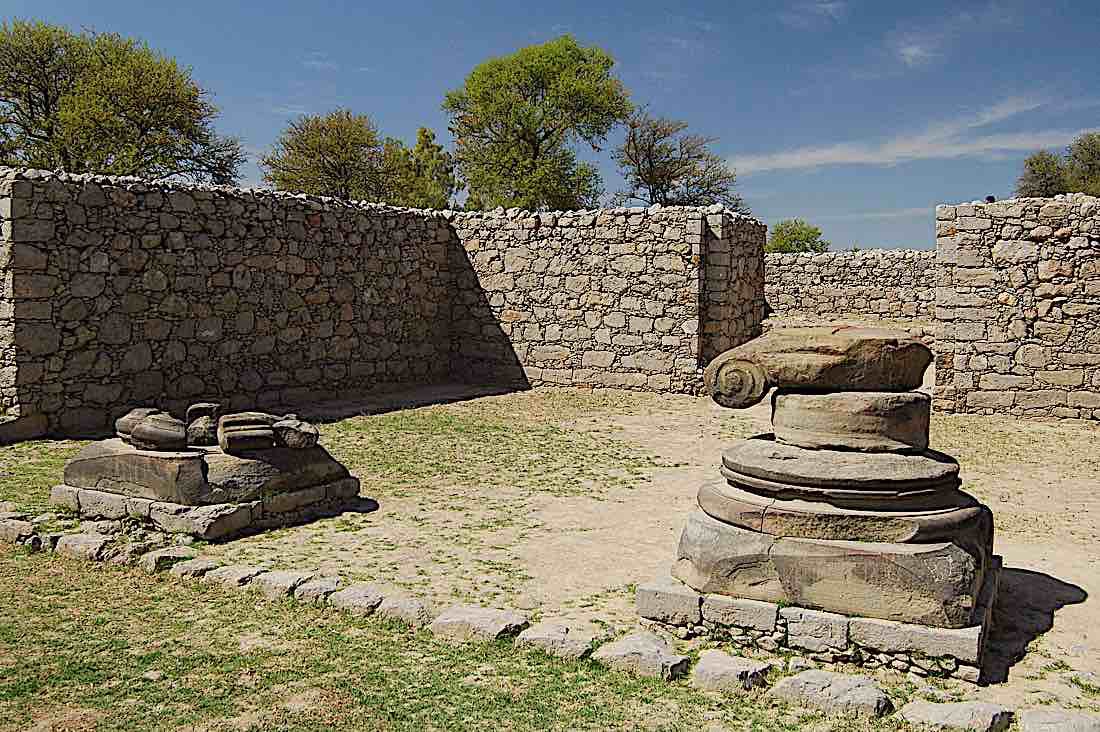
The tragedy of losing some of the greatest Buddhist heritage in the world would be immeasurable. Pakistan needs to spend money to protect its rich Buddhist legacy and needs to spread the world internationally to help them in this endeavour.
The current government seems proactive in improving both religious and leisure tourism in the country. Pakistanis are hoping for better tourism figures in the near future – especially owing to the current stable security situation of the country. Pakistan, with its focus on tourism is looking to leverage the China Pakistan Economic Corridor (part of China’s One Belt One Road) to market Pakistan’s Gandhara civilization to the countries of the South East, Far East, and beyond.
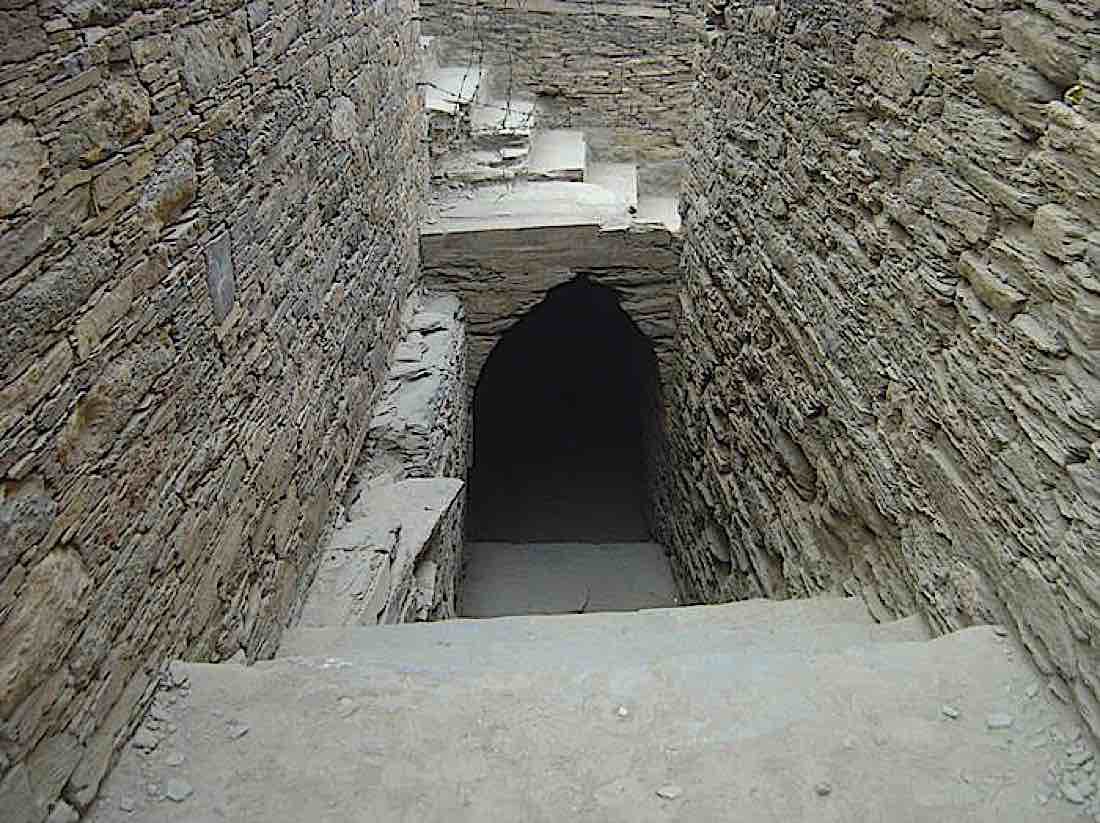
Pakistan needs to promote its rich culture and history so the world can see — and preserve — its mesmerizing Buddhist legacy. If tourism further proliferates, Pakistan could become a new hub for the Buddhist tourism.
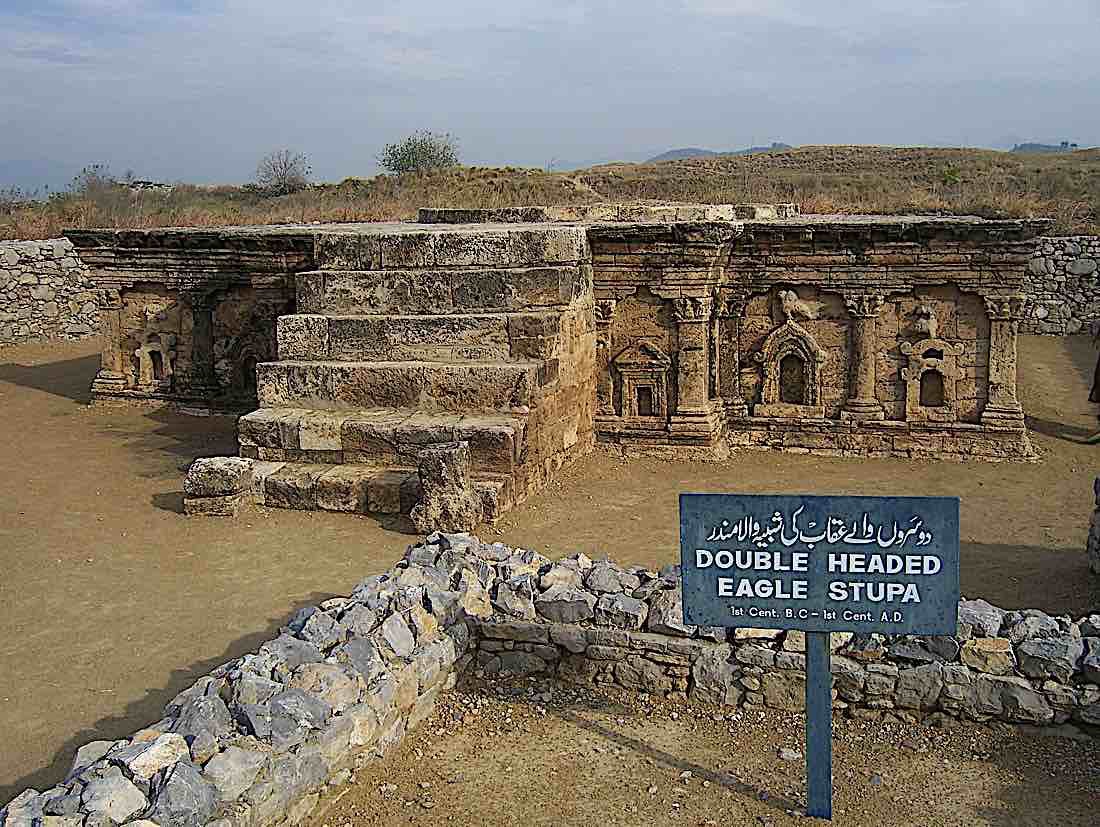
NOTES [1] “ Bihar Registered Record Tourists Arrival in 2017 ” [2] “Gandhara Civilization” Ancient History Encyclopedia [3] Map license: Original image by Asia Society. Uploaded by Muhammad Bin Naveed, published on 23 June 2015 under the following license: Creative Commons: Attribution-NonCommercial-ShareAlike. This license lets others remix, tweak, and build upon this content non-commercially, as long as they credit the author and license their new creations under the identical terms. Please note that content linked from this page may have different licensing terms. Source Ancient.eu.
Latest Features
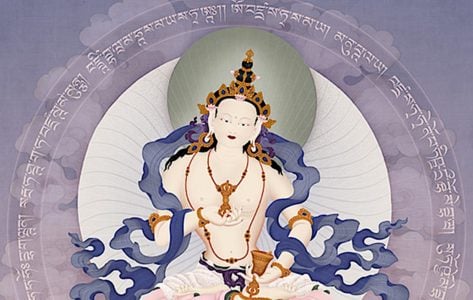

Akshobhya’s Magic City: Lotus Chapter 7, Metaphor of Expedient Means and Shunyata

Avalokiteshvara Universal Gate Sutra
Please support the "Spread the Dharma" mission as one of our heroic Dharma Supporting Members, or with a one-time donation.
Learn more>>
Please Help Support the “Spread the Dharma” Mission!

Be a part of the noble mission as a supporting member or a patron, or a volunteer contributor of content.
The power of Dharma to help sentient beings, in part, lies in ensuring access to Buddha’s precious Dharma — the mission of Buddha Weekly. We can’t do it without you!
A non-profit association since 2007, Buddha Weekly published many feature articles, videos, and, podcasts. Please consider supporting the mission to preserve and “Spread the Dharma." Your support as either a patron or a supporting member helps defray the high costs of producing quality Dharma content. Thank you! Learn more here , or become one of our super karma heroes on Patreon.
Sarmad Ishfaq
Author | buddha weekly.
Sarmad Ishfaq works as a research fellow for the Lahore Center for Peace Research. He completed his Masters in International Studies and graduated as the 'Top Graduate' from the University of Wollongong in Dubai. He has several publications in peer-reviewed journals and magazines in the areas of counter-terrorism/terrorism and the geopolitics of South Asia and the GCC.

Weekly Dharma by Email
Receive Buddha Weekly in-depth features by email.
You can unsubscribe anytime. For more details, review our Privacy Policy.
You have successfully joined our subscriber list.
Privacy Overview
Pakistan: a great religious tourism destination
The cultural mosaic of Pakistan is enriched by its cities, eachc of which has a distinct religious and historical significance.

Sin Chew Daily
View all posts by Sin Chew Daily →

File photos of Dharmarajika Stupa (L) and Takht i Bahi Buddhist Monastery (R). PHOTO: SIN CHEW DAILY
October 18, 2023
KUALA LUMPUR – Religious tourism is typically associated with members of particular faiths who visit locations regarded as sacred sites.
Apart from worshipers, tourists with no religious affiliation also visit holy places due to their cultural, chronological, and spiritual importance.
Pakistan’s religious diversity spans Islam, Hinduism, Christianity, Sikhism, and Buddhism. The Pakistan Tourism Development Corporation (PTDC) designates 120 out of 480 destinations as religious sanctuaries, offering guidance through 18 centers nationwide. This preserves heritage, provides jobs, and enhances facilities.
PTDC also organizes festivals, like the Vesak Festival in 2019, celebrating ancient religions and underscoring the nation’s commitment to religious diversity.
The cultural mosaic of Pakistan is enriched by its cities, each of which has a distinct religious and historical significance. At this point, the territories of Baluchistan, Khyber Pakhtunkhwa, and the nearby portions of Punjab and Sindh, contain a huge number of sanctuaries that demonstrate the greatest legacy of the Hindu religion, among these are the Dharmarajika Stupa, Buddha, Takht-i-Bahi, Mankiala Stupa, and the celebrated rubble of the Gandhara culture. Everywhere the eye traverses, the meticulous preservation of the spiritual heritage is on display.
The country is also the home of Mehrgarh, Moenjodaro, and Harappa as well as the origin of the illustrious Gandhara civilization, a key Buddhist center.
The land also bears testimony to the enduring Hindu Shahi sanctuaries of Tharparkar, as well as the mesmerizing ensemble of burial sites at Makli, Multan, and Uch Sharif. State-of-the-art constructions symbolize a limitless sum of labor put in to represent ancient cultures in the most beautiful manner known to mankind, which raises deeper inquiries and interest in the human capacity to explore other civilizations comprehensively.
With its Shah Rukn-e Alam and Hazrat Bahuddin Zakriya mausoleums, Multan is a testament to Sufi mysticism. Lahore, the capital city of Punjab, is home to the revered Data Darbar Shrine and the tombs of spiritual luminaries such as Hazrat Mian Mir and Shah Inayat Qadiri Shatari. Karachi, the teeming seaside metropolis, is home to the holy sites of Mangho Pir and Abdullah Shah Ghazi. Sukkur, Sehwan, Shergarh, Garh Maharajah, and Bhit are all examples of the spiritual tapestry woven throughout Pakistan’s varied landscape.
Pakistan, a haven for nature enthusiasts, captivates with its majestic mountains, serene lakes, and tranquil valleys. Each locale promises a unique and awe-inspiring experience, from the towering Alps to mirror-like lakes and welcoming lush valleys. Every journey, be it a mountain hike, a canoe ride, or a leisurely stroll, offers moments of pure wonder. These memories, imbued with timeless beauty, evoke an unmatched sense of contentment and elation.
The Pakistan Army has played an instrumental role in strengthening the country’s security condition, which helped in the promotion of tourism in Pakistan.
Military operations launched by Pakistan’s armed forces against extremists from 2013 to 2017 wiped out terrorism and militancy across the country, particularly in northern areas which are widely known for its striking beauty.
Not only has this but the Pakistan Army expressed an interest in developing tourism in Chitral through partnerships with stakeholders so as to make the most of the tourism potential.
Furthermore, with the strong support of the Pakistan Army and the local government, the Khyber Pakhtunkhwa Culture and Tourism Authority (KPCTA) opened the Orakzai tribal area to tourists. The Spring Gala was set up in Orakzai to boost tourism and to explore the beauty of the area and experience the local traditions and culture.
For its unwavering efforts to provide peace and security to the nation and open gates for tourism, the Pakistan Army has been acknowledged and honored on several occasions.
The positive impact of these initiatives is reflected in the UN Secretary-General’s statement which lauds Pakistan’s accomplishment in altering its image from a terrorist-infested country to a safe and appealing tourist destination.
Pakistan’s Constitution protects cultural minority rights, emphasizing spiritual acceptance and harmony. This implementation breaks down walls, fostering understanding and unity.
Recent efforts to strengthen the tourism industry have yielded positive results. Digital competency and the prevalence of social media play a pivotal role in promoting faith-based tourism in present-day Pakistan. Online visa applications streamline travel in this tech-savvy era. These platforms serve as powerful tools for spreading awareness and enabling travelers to discover Pakistan’s rich religious heritage.
Through compelling visuals, informative blogs, and interactive forums, social media allows users to virtually experience these sacred sites, generating curiosity and interest.
The pursuit to revive the tourism industry in Pakistan has experienced an astonishing revival, bolstered by a dedication to implementing advanced health and safety protocols.
At every turn, travelers attending religious events and immersing themselves in the rich variety of spiritual heritage are greeted with positive sensory cues. Mesmerizing sceneries, holy places, and ancient artifacts build an experience that goes
beyond tourism. From a tourist’s viewpoint, Pakistan is a land of vast capability, where spirituality, culture, and breath-taking wonders come together.
With a reinvigorated concentration on safety, Pakistan is getting ready for a revival of tourism, welcoming the world to behold its stunning vistas, investigate its spiritual past, and savor the tranquility that is everywhere in this unbelievable nation.
Additionally, the Pakistan Tourism Development Corporation states that the travel and tourism sector accounted for 7.9% of the country’s total employment in 2023.
Religious tourism can bring economic benefits to countries by bringing in money from admission fees, contributions, and tourist spending. This can also lead to infrastructure improvements in the areas surrounding religious sites, this can include the construction of roads, transportation, and other facilities that can benefit the neighborhood.
It is praise-worthy to mention that Pakistan is adopting various measures to promote religious tourism in the country, including the development of a comprehensive strategy to promote Gandhara tourism in Khyber-Pakhtunkhwa, and the promotion of lesser-known religious sites .
Also, the inauguration of the Kartarpur Corridor in 2019, which enabled Sikh worshipers from India to visit the Gurdwara Darbar Sahib in Kartarpur without a visa, is one of the significant initiatives of the Pakistani government. This initiative has been praised for its promotion of religious equality and facilitation of Sikh pilgrimage.
The government has also emphasized the promotion of religious tolerance through its initiatives. As it can be seen the government of Punjab organizes interfaith events to promote harmony and understanding among people of diverse religious beliefs.
The government of Pakistan has also enacted policies to ensure the participation of religious minorities in various industries, including tourism. For example, there is a 5% minimum hiring quota for religious minorities .
Another great initiative taken by the Pakistan Government is the tourist brand, called “Salam Pakistan,” which will focus on Sikh pilgrims visit the Shrine of Baba Guru Nanak Dev enhancing the country’s image as a safe, secure, friendly, and hospitable location with appealing tourist attractions. It will not just help to promote tourism but will also help to generate revenue up to $4 billion in the coming years.
All in all, the Pakistani government and Army have improved law and order, making it a safer destination for tourists of different religious backgrounds, which is expected to benefit the country economically.
Pakistan is now a popular religious and natural tourist destination due to its many sacred sites and beautiful landscapes, and organizations like the PTDC are dedicated to providing a safe and secure environment for visitors.
This makes the country an ideal place for spiritual growth and rejuvenation.
- Afghanistan
- Daily Cartoon
Home Article Buddhist sites: Religious tourism in Pakistan | By Tasneem Shafiq
Buddhist sites: Religious tourism in Pakistan | By Tasneem Shafiq

Buddhist sites: Religious tourism in Pakistan
RELIGIOUS tourism is an important part of the tourism industry and is also called special interest tourism.
It is usually related to the followers of specific faiths who visit sites that are considered holy sites.
Religious sites are not only visited by the pilgrims but also visited by non-religious tourists since they have cultural, historical and religious significance.
In this inescapable era of information and technology where the whole world has become a global village, Pakistan outshines in many ways and holds a repository of ancient civilization and cultural heritage.
Though Pakistan is a Muslim state yet it has saved and perpetuated most of the religious sites, buildings, or commodities of other religions, in which one of them is Buddhism.
Buddha was born in India, but Buddhism flourished from the region of Pakistan. It is necessary to promote and project Pakistan as a land of peace as well as a repository of rich Buddhist heritage.
In contrast to India’s conquest of Buddhism’s multimillion-dollar tourism market and brand as the land of Lord Buddha, Pakistan’s participation in its Buddhist tradition has received significantly less attention despite having more Buddhist sacred sites than the land of Lord Buddha.
Chief Monk of Thailand Arayawang so concluded his three-month rainy season retreat or “Vassa” in Taxila with a message of “peace extended to the world from the land of Pakistan”, particularly the 32 Buddhist countries.
He expressed his gratitude to Pakistan for making arrangements of his stay in Taxila. With this visit, the bond of friendship and inter-faith harmony would grow stronger between Pakistan and Thailand Buddhists.
He encouraged people from Buddhist countries to visit this wonderful land which was once the centre of great Buddhist Civilization.
A Kathina Ceremony or “offering of robes and other gifts” marked the end of the rain retreat.
In the past, Pakistan never had such a large number of Buddhist tourists all together, this is the beginning of a new era in religious tourism.
The country will become the next major destination for Buddhist religious tourism. Pakistan possesses a vast untapped potential for worldwide religious tourism due to its rich heritage and history if adequate security is provided for foreign religious tourists.
Buddhist Sites in Pakistan: Buddhism in Pakistan took source some 2,300 years since under the Mauryan king Ashoka.
It has performed a vital position in the history of Pakistan, it has been part of mostly Buddhist domains such as the Indo-Greek dynasty, the Kushan authority, the Maurya authority of Ashoka, the Pala authority.
The holiest Buddhist religious sites are Taxila and the Buddhist Ruins of Takht-i-Bahi, and the Remains at Sahr-i-Ahlool.
These landmarks can market the country as the world’s most popular Buddhist destination. There are hundreds of sites scattered across Pakistan.
Taxila is the first stop by the foreign tourists particularly Buddhists. It has promoted sculpture, architecture and education in Buddhism.
Over 50 sites of archaeological importance are scattered within a radius of 30 kilometres around Taxila. Pakistan’s Buddhist history includes the stuff of myths and legends.
From the authoring and recitation of the Mahabharata, the greatest Hindu epic, in the Gandhara region during the early historical period to the pre-eminence of the ancient heartland of Buddhist learning, the region has a long history of cultural significance.
Dedicated attention to Buddhist sites can place Pakistan on the international tourist map and energize the Buddhist heritage route throughout the Gandhara region.
Major Buddhist regions: Gilgit-Baltistan: Buddhism came to Gilgit in the late 7th century and had Buddhist majority till the 15th century when most of the masses were practicing Bon religion.
Its archaeological places include; Manthal Buddha Rock, a rock relief of Buddha on edge on a village near Skardu and Sacred Rock at Hunza valley.
Gandhara: The most of people in Gandhara, present-day Southern KP province, were Buddhists.
There are many archaeological areas from the Buddhist time in Swat valley. The Buddhist scholar Kumâralabdha of Taxila was similar to Aryadeva, Aúvagho? a and Nagarjuna.
Uddiyana: The Buddhist guide Padmasambhava is said to have been born in a village near the present-day town of Chakdara in Lower Dir District, which was then a division of Oddiyana.
The Padmasambhava is known as Guru Rinpoche in Tibetan, and it is he who introduced Vajrayana Buddhism in Tibet.
Impact of religious tourism on Pakistan’s economy: From ancient times, religious destinations have been a part of the cultural landscape.
They are vital for local marketing and prime parts of the economy of hosted destinations. Religious tourism in Pakistan provides Muslims and non-Muslims with the opportunity to travel together to sacred sites and pilgrimages.
Pakistan is known around the world for three major religions: Islam, Sikhism and Buddhism.
According to analysts, allowing international tourism in Pakistan at the same pace as the rest of South Asia would result in a $1.5 billion increase in GDP.
In 2019, 5.9% of the country’s GDP was attributed to tourism, which helped in the creation of nearly 4 million jobs.
Pakistan government can earn more than a million of revenue by providing adequate facilities to the Buddhist tourists.
Apart from image restoration, religious tourism can contribute enormously in amplifying Pakistan’s economy by projecting the Muslim, Hindu, Buddhists and Sikh sites existing in the country.
Pakistani officials have taken quite some measures for the development and progress of tourism.
Pakistan’s economy has been persistently pretty dull with regard to tourism. More special policies and attractive tour packages for foreign tourists are required particularly for Japan, China, Singapore and South Korea to visit Buddhist sites at Takht-i-Bahi, Taxila, Peshawar and Swat.
—The writer has remained associated with the Institute for Strategic Studies and ISPR
Related Posts

Another visit to Saudi Arabia

Who is responsible for the destruction of PSMs?
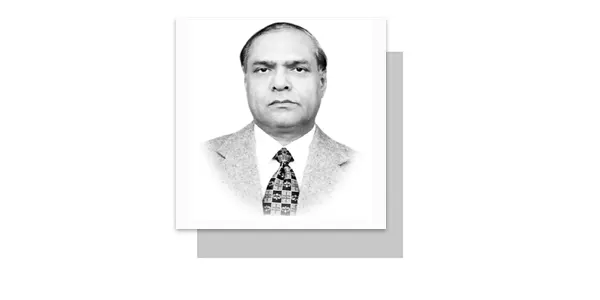
Pakistan facing imminent economic turmoil

A look at CPEC on the eve of 13th JCC
20th CPC, PLA & future security dynamics | By Dr Mehmood-ul-Hassan Khan
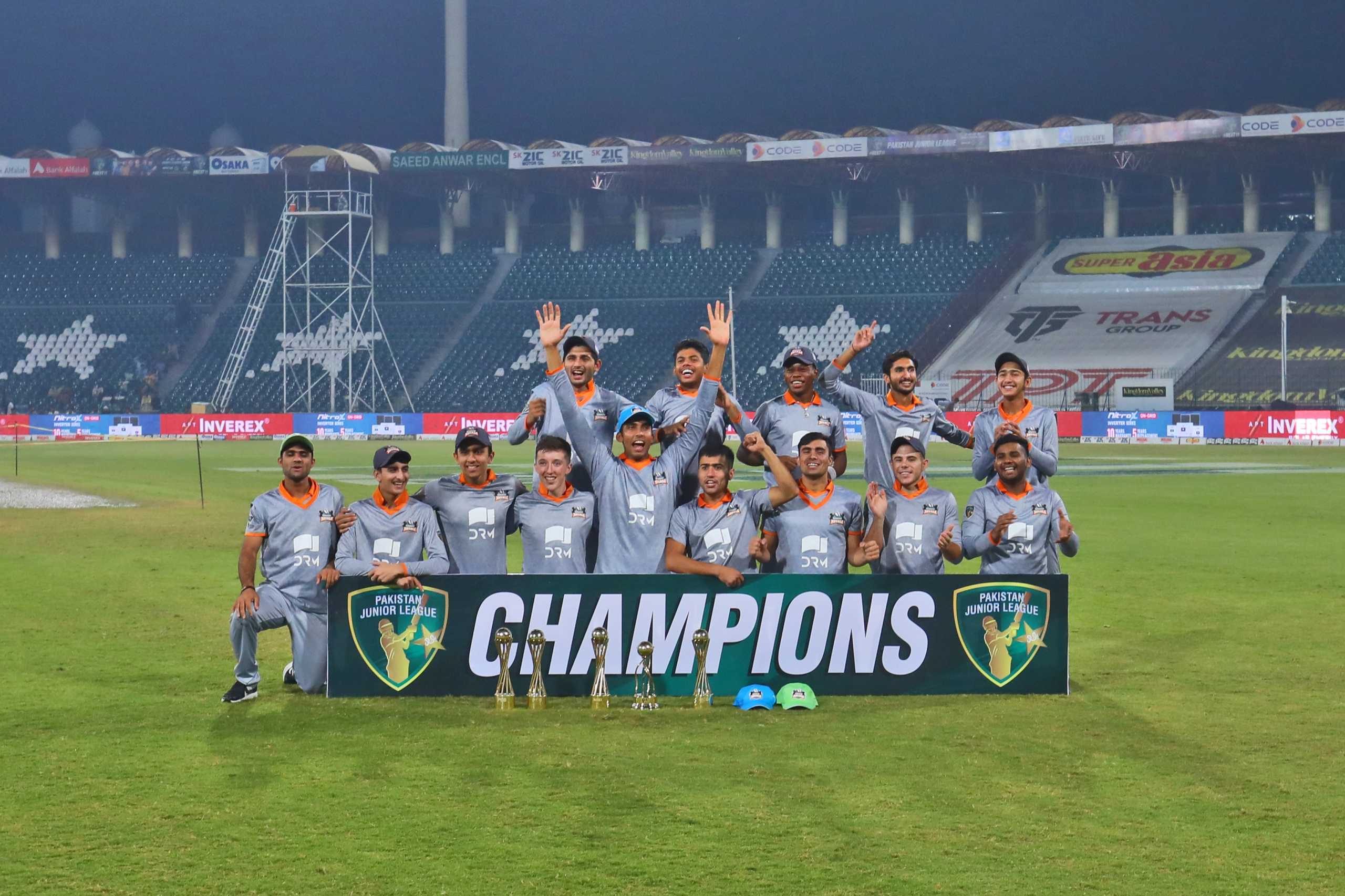
Bahawalpur Royals win the inaugural Pakistan Junior League
Recommended.

WHO Regional Director Dr. Balkhy calls on Punjab CM Maryam Nawaz

Nawaz, Maryam condole Afzal Tarar’s death

Hush Puppies, Starlet Shoes among 24 sealed in Lahore

Currency exchange rates in Pakistan today – May 02, 2024

Fake videos of Modi aides trigger political show-down in India election

Your source for latest Pakistan, world news. Stay updated on politics, business, sports, lifestyle, CPEC, and breaking news. Accurate, timely, and comprehensive coverage.
Popular Category
Information.
- Terms of use
- Advertise With Us
Download Our App
Download our Android app for the latest Pakistan and world news in just a tap. Stay informed, anywhere, anytime.

© 2023 All rights reserved | Pakistan Observer
- Tax Calculator
- Prayer Timings
- Advertise with us

Buddhist sites: Religious tourism in Pakistan
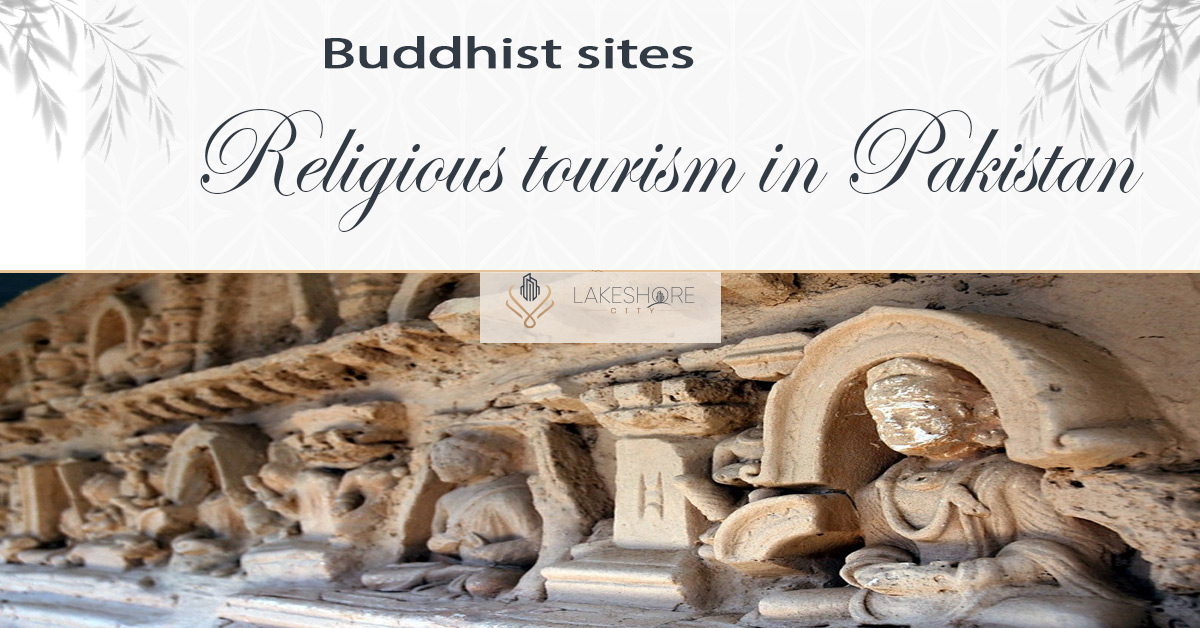
Also known as special interest tourism, religious tourism is a significant segment of the travel and tourism sector. It usually involves people who visit places revered by members of particular faiths.
Because religious sites have cultural, historical, and religious significance, nonreligious visitors also visit them in addition to pilgrims.
The world has become a global village in this unavoidable information- and technology-driven age, but Pakistan excels in many areas and has a wealth of historical and cultural legacy.
Despite being a Muslim state, Pakistan has managed to preserve and conserve the majority of other religions’ holy places, structures, and artifacts, including Buddhism.
Although the Buddha was born in India, Buddhism was most successful in Pakistan. Projecting Pakistan as a haven of peace and a storehouse of rich Buddhist history is imperative.
Pakistan’s engagement in its Buddhist legacy has gotten far less attention despite possessing more Buddhist sacred sites than the land of Lord Buddha, in contrast to India’s capture of Buddhism’s multimillion-dollar tourism business and brand as the home of Lord Buddha.
The three-month rainy season retreat, or “Vassa,” that Chief Monk of Thailand Arayawang wrapped up in Taxila with a message of “peace extended to the world from the land of Pakistan,” specifically the thirty-two Buddhist countries.
He conveyed his appreciation to Pakistan for arranging his visit to Taxila. The friendship and interfaith harmony between the Buddhists of Pakistan and Thailand would strengthen due to this visit.
He urged citizens of Buddhist nations to come and see this fantastic country, which was once the epicenter of a great Buddhist civilization.
The rain retreat ended with a Kathina Ceremony, also known as the “offering of robes and other gifts.”
This marks the start of a new era in religious tourism, as Pakistan has never had as many Buddhist tourists as it does now.
The nation will emerge as the primary location for Buddhist religious tourism shortly. Given its rich history and legacy, Pakistan has enormous unrealized potential for international religious tourism—that is if sufficient security is offered to visitors from other countries.
Buddhist Sites in Pakistan: The Mauryan king Ashoka introduced Buddhism to Pakistan around 2,300 years ago.
It has had a significant role in Pakistan’s history. It has been a part of primarily Buddhist domains, including the Indo-Greek dynasty, the Kushan authority, Ashoka’s Maurya authority, and the Pala authority.
The Buddhist Ruins of Takht-i-Bahi, Taxila, and the Remains at Sahr-i-Ahlool are the holiest Buddhist sacred sites.
These sites can promote the nation as the most sought-after Buddhist travel destination globally. Hundreds of locations can be found all around Pakistan.
The first destination for foreign visitors, especially Buddhists, is Taxila. It has supported Buddhist education, architecture, and sculpture.
Around Taxila, more than fifty significant archaeological sites are dispersed within a 30-kilometer radius. The Buddhist past of Pakistan is filled with folklore and mythology.
The region has a long history of cultural significance, spanning from the writing and recitation of the most significant Hindu epic, the Mahabharata, in the early historical period in the Gandhara region, to the region’s prominence as the ancient center of Buddhist scholarship.
By paying careful attention to Buddhist landmarks, Pakistan can become more visible to foreign tourists and revitalize the Buddhist heritage trail that runs through the Gandhara region.
Principal Buddhist regions: Gilgit-Baltistan: Buddhism arrived in Gilgit in the late 7th century, and up until the 15th century, most people there practiced Buddhism. Afterward, the majority of people converted to the Bon religion.
Among its archaeological sites are Sacred Rock in the Hunza Valley and Manthal Buddha Rock, a rock relief of the Buddha perched over a settlement close to Skardu.Gandhara: Most of the population in Gandhara, now the province of Southern KP, was Buddhist.
The Swat Valley is home to numerous Buddhist archaeological sites. Kumâralabdha, the Taxila Buddhist scholar, shared characteristics with Aryadeva, Avagho, and Nagarjuna.
Uddiyana: It is believed that the Buddhist teacher Padmasambhava was born in a village in Lower Dir District, a division of Oddiyana, not far from the modern town of Chakdara.
In Tibet, the Padmasambhava is called Guru Rinpoche, and he brought Vajrayana Buddhism to Tibet.
Religious tourism’s effects on Pakistan’s economy: Religious travel has always been a part of the country’s culture.
They play a significant role in the local economy and are essential to local marketing where they are hosted. In Pakistan, religious tourism offers the chance for Muslims and non-Muslims to go on pilgrimages and visits to holy places together.
Three major religions are practiced in Pakistan that are well-known worldwide: Buddhism, Sikhism, and Islam.
The GDP of Pakistan would expand by $1.5 billion if foreign tourists were permitted at the same rate as the rest of South Asia, according to analysts.
A little over 4 million employment were created in 2019 thanks to tourism, which accounted for 5.9% of the nation’s GDP.
Providing sufficient amenities to Buddhist tourists can generate over one million dollars in revenue for the government of Pakistan.
Beyond image repair, religious tourism can significantly boost Pakistan’s economy by promoting the Muslim, Hindu, Buddhist, and Sikh sites that are present in the nation.
Pakistani officials have taken several actions to advance and enhance tourism.
In terms of tourism, Pakistan’s economy has been drab. More specific policies and alluring trip packages are needed for international tourists visiting Buddhist sites in Takht-i-Bahi, Taxila, Peshawar, and Swat, especially those from Japan, China, Singapore, and South Korea.
—The author is still connected to ISPR and the Institute for Strategic Studies.
Our Featured Article:
Read More: Unveiling the Ancient Treasures of Taxila and Gandhara
Don’t miss the chance to invest with Lakeshore! Secure your investment today by investing your financial investment with Lakeshore in the following available options like Lakeshore City , Lakeshore Club , and Lakeshore Farms .
For More updates, please Contact +92 335 7775253 or visit our website https://lakeshorecity.com/
Lakeshore City is the upcoming elite lifestyle at Khanpur Dam. Offering no parallel amenities for the members and owners of distinguished farmhouses.
Become Part of Luxurious Lifestyle
Contact: 0335 7775253
Save my name, email, and website in this browser for the next time I comment.


Restaurants
Transporters, hindu religious places in pakistan.
From modern-day buildings to ancient artefacts that serve well as masterpieces of art, the country of Pakistan never runs out of beautiful surprises with every turn you take. Talking about history, the country houses many ancient Hindu temples that represent different historical eras in which they were built.
Explore Hindu Religious Places In Pakistan
Sign In to see more
Explore Pakistan
Mountain areas of Pakistan
Kaghan valley
Babusar Pass
Paye Meadows
Lulusar Lake
Saif ul Muluk Lake
Naran Valley
Azad Jammu and Kashmir
Neelum Valley
Kutton Jagran Resort
Banjosa Lake
Sharda Valley AJK
Arrang Kel Valley AJK
Kel Valley AJK
Leepa Valley AJK
Ramkot Fort
Gilgit-Baltistan
Sacred rock of Hunza
Rohtas Fort
Satpara Valley
Nanga Parbat
Golden peak
Ultar Sar peak
Attabad Lake
Shangrila Lake
Upper Kachura Lake
Khalti lake
Hunza Valley
Khaplu Fort
Gupis valley
Handrap valley
Phander Valley
Deosai plains
Lady finger peak
Baltit Fort
Manthal Buddha Rock
Kharpocho Fort
Kumrat Valley
Swat Valley
Saidu Sharif
Malam Jabba
Lake Mahodand
Galiyat of Pakistan
Nathia Gali
Murree Hills
Chitral valley
Sor Laspur valley
Kalash Valley
Chitral gol national park
Shandur pass
Mountains and lakes of Pakistan
Karakoram range
Hindu-Kush range
Himalayan range
Religious places of Pakistan
Buddhist Religious places in Pakistan
Takht-i-Bahi
Gondrani Caves
Mohenjo-daro
Ranikot Fort
Tomb of Bibi Jawindi
Bhaleel Shah
Hairo Khan Stupa
Sikh Religious Places In Pakistan
Gurdwara Panja Sahib
Gurdwara Darbar Sahib
Shri Varun Dev Mandir
Jagnnath Mandir
Panchmukhi Hanuman Mandir
Baba Chandragup
Katas Raj Temple
Gori jo Mandar
Kali’s temple churiyo, gor khattri & gorakhnath, naval mandar, kalka devi cave.
Hinglaj Mata Mandir
Jain Temples In Pakistan
Historical and cultural places
Cultural places of Pakistan
Mela Chiraghan
Historical places of Pakistan
Shalimar Gardens
Minar-e-Pakistan
Wazir Khan Mosque
Badshahi Mosque
Mazar-e-Quaid
Lahore Fort
Bijnot Fort
Ancient forts of Pakistan
Big Cities of Pakistan
Jehangir Kothari Parade
Food-Street Fort Road
- Religious places In Pakistan besides mosques
Oldest Hindu Temples In Pakistan That Are A Must See
So, why the wait? Let’s explore some of the best and oldest Hindu temples;
Tale of Contents:
1- Jagannath Mandir, Sialkot district, Punjab province.
2- Hinglaj Mata Mandir, Lasbela District, Baluchistan
3- Shri Varun Dev Mandir, Manora Island in Karachi, Sindh, Pakistan
4- Katas Raj Temple, Chakwal district, Punjab province.
5- Panchmukhi Hanuman Mandir Old quarters of Soldier Bazaar, Karachi.
6- Kalka Devi Cave Arore, Sindh.
7- Naval Mandir Ranchore Lines, Karachi
8- Gor Khattree and Gorakhnath Temple Peshawar, Khyber Pakhtunkhwa.
Hinglaj Mata Mandir, Lasbela District, Baluchistan:
Claimed to be 0.4 million years old, the Hinglaj Mata Mandir is located in the hilly area of Lyari Tehsil in Baluchistan Province and lists among the oldest temples in the world. The Hinglaj Mata Mandir is a natural cave temple located in the center of the Hingula National Park.
250 kilometers to the northwest of Karachi, 19 km inland from the Arabian Sea, and 130 km to the west of the River Indus, the Hinglaj Mata Mandir is associated to the Hingula Devi or Hinglaj Devi. Hinglaj Mata is considered to be very powerful among all the immortals and is believed to bring goodness to all the devotees.
Mythic History of the Temple:
The importance of this Mandir can be estimated by the fact that it is one amongst the “Three Shakti Peethas” in Pakistan. Sati (wife of Shiva), when committed suicide (some stories say a cruel ruler killed her), Vishnu cut her body into 51 parts, each of them fell in different places on the earth. This way, the 51 Shakti Peethas came into existence. Her head is considered to be dropped in the Khirtar Mountains, in the Makran desert, near the west of Hingol River.
This way, the place holds great significance for all the Hindus across the globe. It is said that the statue of the Devi is not man-made and is a shapeless stone considered to exist in the actual shape. It is smeared with vermillion (Sindoor).
The whole place is supposed to be the house of the Devi, and everything associated with it stays sacred for the followers. It provides a great attraction for the tourists for every single thing it has to offer.
A Complex Of National Park, Temple, And Canyons:
Many Hindus, not only from Pakistan but from India as well, visit the shrine every year for their annual pilgrimage known as Hinglaj Yatra or Theerth Yatra. It continues for three days, and many devotees return happily because of their granted wishes and answered prayers.
The place not only continues to hold great importance amongst the followers, but it also attracts many tourists because of its history and the dramatic landscapes that the site has to offer.
The Hingola National Park houses the cave temple of the Mata, as well as is famous for its flora and fauna. Around 250 species of plants, 35 mammal species, 65 species of amphibians and reptiles, and 185 species of birds are the residents of Hingola National Park.
Apart from flora and fauna, the Hingola Park, considered to be the largest national park of Pakistan, also subdues 3 mud volcanoes, one amongst them is sacred for the pilgrims. The sensational geography also houses canyons that are magical to see and feel.
Shri Varun Dev Mandir:
Shiv Varun Dev Mandir, considered to be around 1000 years old, is located near Karachi’s flawless turquoise Manora beach. The sight of this ancient structure of the temple gives goosebumps, while the fresh blustery breeze from the sea nearby makes you feel magical about that place.
The exact details about when the first construction of the temple took place, are unknown, but the deity Varuna, to whom the Mandir is devoted, is known to represent water. Hence the temple is regarded by many fishermen and was constructed near the sea.
The Grand Architecture Of The Mandir:
The actual construction of the temple was done with stones and vibrant carvings on the wall and stucco work. The humid air from the sea has eroded the original structure up to some extent, but the remains of the temple still show how magnificent the temple was. The temple was later renovated in the early 1900s, and the primary thing considered before the renovation was that the current structure replicates the actual one.
The temple also houses two smaller temples, “The Jhooley Laal Mandir” and “The Shiv Mandir.” Besides these smaller temples, the Mandir also subdues two Gurdwaras for the Sikh community, and a church is also located nearby for the Christine community. Can you imagine what message this gives? Even the early people knew how to live together despite the cultural and religious differences.
The temple offers complete peace of mind with solace to the inner soul and spirit. The richly carved walls of the temple never cease to stun the viewers while the eloquent structure gives a deep sense of warmth. The inscriptions on the walls, the centuries-old architecture, and the beautiful seashore glorify the view.
Reconstruction And Enhanced Beauty:
The temple is still highly regarded by the devotees, and they travel by sea from far and wide to kneel their foreheads to the deities present there. The reconstruction of this temple has made it very neat, and despite the religious beliefs, the temple’s beauty has made it a very popular spot for tourists from all around the world.
The Shri Varun Dev Mandir has a historical significance that cannot be denied by any means. Tourists love it for its historical importance. And now, the control has been taken by the Sindh Exploration and Adventure Society under a US-government funded project to make it even more inviting for tourists.
JAGANNATH MANDIR, SIALKOT:
Among the historical Hindu temples, Jagannath temple is a must-see ancient site. The place has been opened for international and local visitors after 72 years. The Pakistan Hindu Council welcomes countless domestic and foreign tourists to visit the temple every year.
Jagannath Mandir was built in 12th AD in the district of Sialkot, Punjab, and is said to be the oldest Hindu temple in Pakistan. The temple is devoted to the Hindu God Jagannath, and this is a magnificent masterpiece of Kalinga architecture.
The Mandir was first renovated in 2007 and then in 2018 to preserve its beauty. Though old, the temple still showcases the grandeur that it once held with the raised temple and the park that is included in the property.
How to reach Jagannath Mandir?
The Jagannath Mandir is located on Paris Road in the city. Tourists can reach the temple by;
Local transport- Rickshaw, Public coach, or a tanga.
Witness the Hindus Pilgrimage activities:
The temple is a major trip destination for witnessing many Hindu traditions and ancient architecture. People usually spend 2 to 3 hours to explore the whole temple and enjoy the cultural and religious heritage.
You can witness the Hindu religion Pilgrimage activities. You can meet the Hindu Pundit’s and ask for more detailed historical information of the grand temple. A tourist can witness the beautiful architecture of the temple that reflects the history and cultural importance of the place. Reviews say that this is once in a lifetime experience.
Click photographs and facility of instant photographs:
International and local tourists are allowed to take pictures that they can take back to their homes as memories. If you forget your DSLR or smartphone, you can get the services of instant photographers. They charge you nominally and click your photos inside the magnificent temple building and give it to you in the next 10 to 15 minutes.
Small heritage tuck shop:
Within the Jagannath Mandir, there is a small tuck shop where you can buy items that are related to Hinduism and also reflect the historical heritage of Hindu culture. You can buy something for your Hindu friends and family back at home.
Pakistani Government has announced to reopen and restore the historical Hindu temples all across the country so that the people can visit these holy places for worship and tourism. Local and international tourists with a keen interest in history and archeology can visit these temples and learn a lot from these sites.
Katas Raj Temple, Chakwal District, Punjab Province:
This beauty is the most reverenced among all the Hindu temples in Pakistan. Consisting of 12 temples, Katas Raj is a complex located in the Chakwal district in Punjab province of Pakistan. The splendid temples and the mystic pond takes you back in history to 1500 years ago when Ram, Hanuman, and Shiva (the Hindu Gods) ruled.
A Little On Temples’ History:
Before we get into the spectacular details of the famous tourist spot, let’s shed some light on its history. These well-looked-after temples preserve at least 1500 years’ worth of history that ranges from the Buddhist era to British rule. According to the historical records, some temples were constructed in the Kashmiri architectural tradition back in the 11th century CE.
The temples are built on square platforms, and the raise of sub-shrines appears to form a series of cornices with small rows of pillars, completed by a ribbed dome. The ceiling of the Hanuman Temple is undecorated, and lime plastered. The Shiva temple is also built on a platform with an entrance featuring a recessed arch, faint cusps, and a rectangular opening to the north. In many ways, this site is a wonder with its incredible architecture and history.
Famous Tourists Spots Around The Katas Raj Temples:
Katas Raj is very scenic with a green and blue lake water surrounded by lush green hills. Many famous tourist spots surround katas Raj temples. The complex is situated within the embrace of the Salt Range and Kallar Kahar, and the remains of a Gurdwara reside at a little distance from the pond, which Guru Nanak is believed to have stayed in during his journey around the world.
Partially excavated remains of a Buddhist stupa close by also remind you of the time when Subcontinent came under the sway of Buddhism during the reign of Emperor Ashoka.
The Mystery That Surrounds The Pond:
Hindus believe that the beautiful pond was created when Lord Shiva was weeping while flying across the sky with his dead wife’s body. Out of the two tears that were shed, one created this pond where Pandavas came during their exile and built some of the older temples as the legend goes. Hindus believe that if you take a bath in this Holy Pond of Tears, it will wash away your sins.
According to some scriptures, it is said that the pond is manmade, and there are several water streams deep down under the surface of the water in Katas under the temples and in the base of the pond as well. Along the pond, there is a place for taking a holy bath by men while on the southern side, there is a ladies' bath. All these baths are made of marble.
The complex is like a maze; you can get lost in this ensemble of several old structures. However, you would want that because it represents the grandeur and splendor of the Hindu Rajas who lived 1000 years ago.
Panchmukhi Hanuman Mandir:
If you are in Pakistan and want to visit an ancient miracle of Hindu Belief, then you can visit the Panchmukhi Hanuman Mandir in Pakistan. It is in “Soldier Bazar Karachi” and is one of the ancient and oldest temples.
This historic temple existed before the partition of India-Pakistan. According to myths, Bhagwan Shri Ram (the central character of India’s greatest Hindu epic Ramayan) had come here once.
A Little History On The Magnificent Temple:
The temple holds a special significance as Hindus believe that the statue present in the Mandir is not man-made as it is the only one that holds naturally created statue of Hanuman.
This temple is the epitome of a historical masterpiece. It even existed before the partition of India-Pakistan and is believed to be seventeen hundred years old. Many years ago, a statue was found there. That statue had eight feet, and they were white and blue in color. The figure possessed all of Hanuman’s features as well as Narasimha, Adivaraha, Hayagriva, and Garuda.
As this Mandir is ancient and a sacred place for the Hindus as well, it was renovated in 2012 to preserve the tales it tells. During the renovation, different types of stones were used to enhance the beauty and charm of the place. During the refurbishment, 7-8 other statues of Hindu gods were also found along with;
Buffalo-like Idols
The Ganesha Idols
Sherawali Mata Idols
Some Earthen Pots
The Incredible Structure:
When you enter the Mandir, you are struck with the beauty of the small front porch of Panchmukhi Hanuman Mandir. It has pillars carved of yellow stones on either side with a black and white marble floor, a wide passage for clockwise circumambulation (parikrama / pradakshina) runs around it.
People who visit the place really adore it for the trees present there as they have leaves of unusual shapes on them. Hanuman’s statue there is the spiritual attraction for Hindus and other devotees as well.
Ancient lore/Folklore Linked To The Mysterious Statue:
You can experience the essence of ancient lore here as the multiple communities like Maharashtrians, Sindhis, Balochis visit this temple on a regular basis. Hindus believe that once they complete 108 rounds around the chamber, their sins and worries vanish away. They find the Mandir a source of spiritual cleanliness. They have a firm belief that all scars present on soul disappear after the completion of rounds.
Devotees believe that the impressive idol of Lord Hanuman was found from the earth, and it is magical and sacred. They also say that if someone walks around the idol 11 or 21 times, all his wishes come true.
Kalka Devi Cave:
Sindh is home to many remarkable old Hindu temples. Approximately half an hour away from the Sadh Belo Temple, there is a place named as Arore. Arore is the place where one of the well-known Kalka Devi’s temple exists. This temple has a mountainous cave which is called the Kalka Devi Cave, and it is decorated with Kalka Devi sculptures.
If you are fond of exploring the ancient religious places, then the Kalka Cave should be on your priority list.
History of Kalka Devi Cave:
In the Shashthi language, Kalka means power. It is believed that Kalka Devi is Kali Maa (mother) of Hindus. They worship and think of her as their mother, who fought for different purposes and fought against the evil. She was a powerful lady having supernatural powers. It is believed that she was a religious and pious lady. She lived in the cave during the “Roy Dynasty.” It is said that she was the wife of a Hindu god, “Shiva.” Kali also symbolizes “Shakti,” which means:
Feminine energy
Fertility
Sexuality
Ferocity
The Ambiance of Kalka Devi Cave:
The Kalka Devi temple is dedicated to the Hindu goddess Kali. There are Kalka Devi’s sculptures, oil lamps, and incenses spread all around, which are somehow soothing to the senses. The Kalka Devi Cave has a low roof with ash grey caved walls. The strong and sweet smell of burnt incense (called Agar Batti in Pakistan) provides a perfect ambiance to pray, sit, and reflect.
The rooms which are built around the temple can be used for praying or for staying as well. The way to cave is through one of the rooms from where a five to six feet entrance will lead you towards the cave. When you are visiting the cave, you will be captivated and mesmerized by the mystical aura of sweet scents of incense. There are some rooms around the cave for the passengers as well. Food is served there three times a day. Some of the features you can enjoy at this religious spot include;
Hindu devotees pay homage to Kalka Devi on the first Monday night of every month and in spring and autumn (during the nine-day Hindu festival).
Devotees gather and sing various chorus and songs praising the Goddess Durga in a large organized fair.
The temple has an airy atmosphere, and it is bright with lights throughout the night. Followers also meditate there, and a “Tantric Arti” is held in the evenings as well.
Other than Hindu Tourists, people from all around the world also visit this Temple as tourists.
Naval Mandar, Ranchor Lines, Karachi:
Tourism in Pakistan offers beautiful places that can quench the inner explorer in you with its mesmerizing geography and architectural monuments in all its provinces.
Karachi, also known as the city of lights, is a wonderful place for tourists all over the world because of multiple reasons. This includes the mesmerizing beaches and seashores as well as sites depicting the history the city has to offer to tourists from all over the world. Naval Mandir is one of such sites.
Naval Mandir may not be an ancient temple, but it is definitely a spot that is worth visiting when it comes to enjoying notable Hindu temples in Pakistan.
Naval Mandir – A Mystical Hindu Temple:
Naval Mandir is located in the Ranchor Lines area, which was formally called Gazdarabad and is near the famous Saddar Town in Karachi. The temple has served to be a holy place for people in the Hindu community for ages, and it has also been a shelter to a lot of homeless people.
Prominent historical figures like Guru Nanak, Rama, Shiva, Santoshi Mata, Ganesha, Vishnu, Hanuman, and Kali have been commemorated with their statues in this historical and one of the highly famous temples in Pakistan. During the festive seasons such as Holi and Diwali, the temple becomes a highlight with its mystical ambiance and history associated with it.
People belonging to the Hindu community give special attention to this holy place during the festival season and do their rituals with full dedication.
Structure of Naval Mandir:
Naval Mandir temple extends to about two hundred square yards and is made of yellow stone bricks. The walls are further elaborated with polished marble surfaces. Naval Mandir in Karach houses several statues made of clay that gives it a special place among other temples belonging to the same era.
If you are a sightseer in the city of lights and want to go on a historical expedition, this temple is an excellent place to start, given its antique significance. Moreover, the presence of different statues gives a sound knowledge about the different Gods and saints that are well celebrated in the Hindu religion since ancient times.
The mystical vibes get thousand times stronger and better during Holi and Diwali. So if you are hanging around the spot, check the calendar for the festival time, and if you are lucky enough, make sure you get to see all the rituals and colors around. So, yes, it is one of the best old religious places to visit.
Gor Khattri and Gorakhnath Temple Peshawar, Khyber Pakhtunkhwa:
From the Mughal empire to the British Rule, and from the concoction of Muslim and Hindu unity to the artistic manifestation of the culture of Kashmir and Gilgit, Pakistan’s beauty is well depicted in its historic buildings.
Gor Khattri and Gorakhnath temples are such examples of this beautiful architecture. Located in Peshawar, Khyber Pakhtunkhwa, the temples were built by the ancient Hindu community back in 1851.
Out of all tourism features, the memorization that historical architecture brings on the table is simply unbeatable. Pakistan has a rich diversity of architecture that reflects the beautiful tales history has to tell us, and it is precisely what you experience when you visit Gor Khattri and Gorakhnath temples.
Location of Gorakhnath Temple:
Located in Gor khatri in Peshawar, the Gorakhnath temple has its name derived from Gorakhshanath. He was a medieval saint and a Yogi who journeyed across different regions of the Indian subcontinent and spread his knowledge. His followers built various temples in his name across some highlighted areas of the subcontinent, where he earned significant fame and commemoration. One of these temples is present in the northern side of Pakistan and known as Goraknath temple.
The temple is open for travelers and serves as one of the famous historical attraction sites in Pakistan, depicting the antique architecture of the ancient residents in the region.
The fortified compound has two well-evident gateways and covers an area of 160x160 square meters. A fire brigade building is present in the vicinity, which was built in 1917.
Gor Khattri – A Culturally Rich Tourist Attraction:
Gor Khattri is a public park that is home to this temple. The Mughals built it as a way to preserve the ancient ruins of the Hindu heritage. Some history experts believe that Buddha lived in this place once. Besides this, the famous Mughal emperor Babar also visited the place, while Shah Jahan’s daughter, Jahan ara Begum, built a pavilion at the site.
During the years from 1838 to 1842, the Sikh community converted it to a residential site and also built a Hindu Temple to commemorate Shiva there. The community at this temple performs the famous Sardukahr ritual.
Given such a rich and diverse background, Gor Khattri and all temples related to the site, especially Gorakhnath temple, is a place worth visiting if you want to feel the mesmerizing vibes the area has to offer to visitors.
So, which ancient temple is your pick for your next adventure?
Photo Gallery of Hindu Religious Places In Pakistan
Popular places of hindu religious places in pakistan, restaurants in hindu religious places in pakistan, dummy restaurant (4 star membership), transporters in hindu religious places in pakistan, rapid movers and packers, costa logistics packers and movers, guides in hindu religious places in pakistan, raheel ahmad, tour operators hindu religious places in pakistan, pakistan travel places, en route pakistan, shops in hindu religious places in pakistan, fine arts photography, kohpemaa outddoor gear, popular posts.
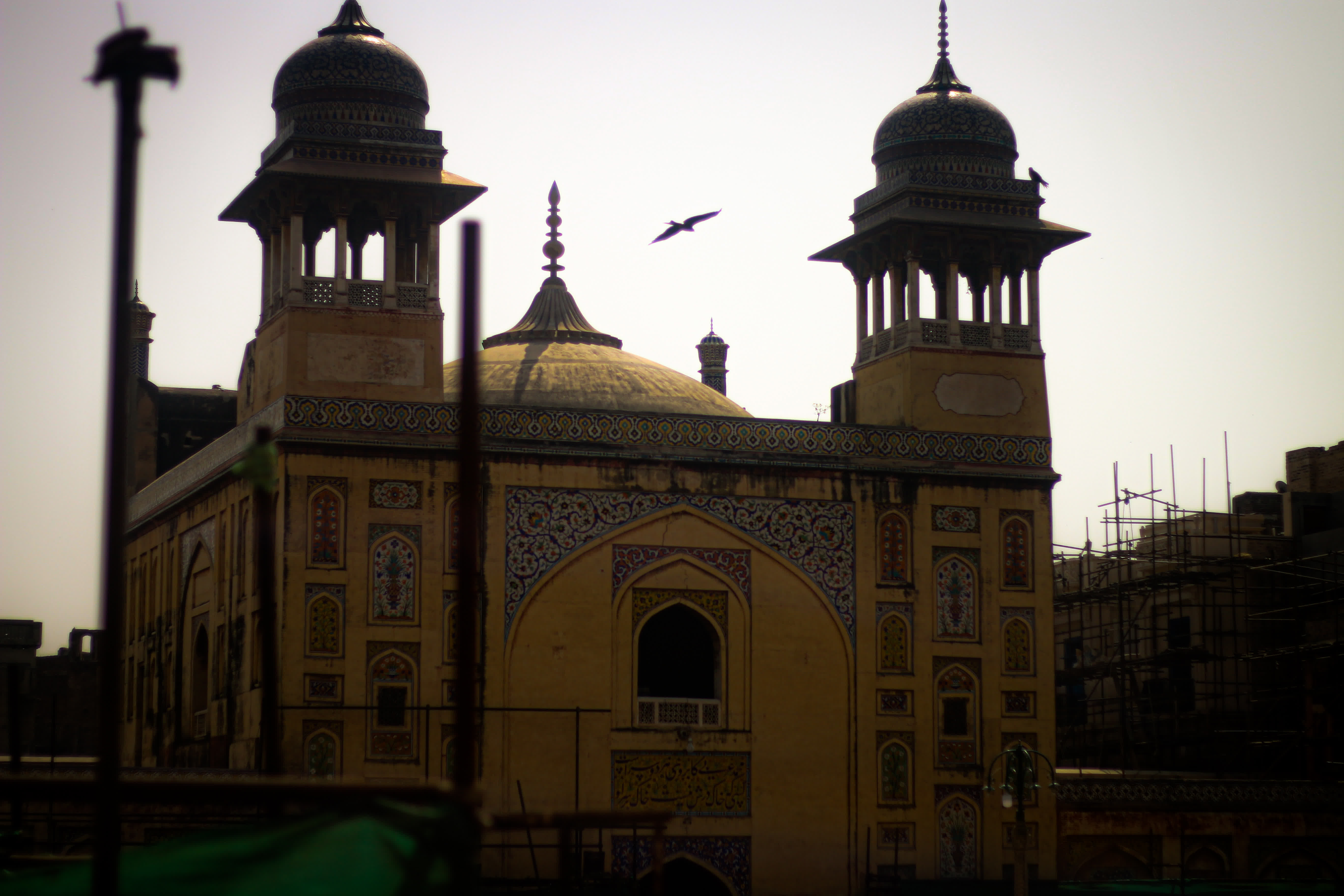
Wazir khan mosque
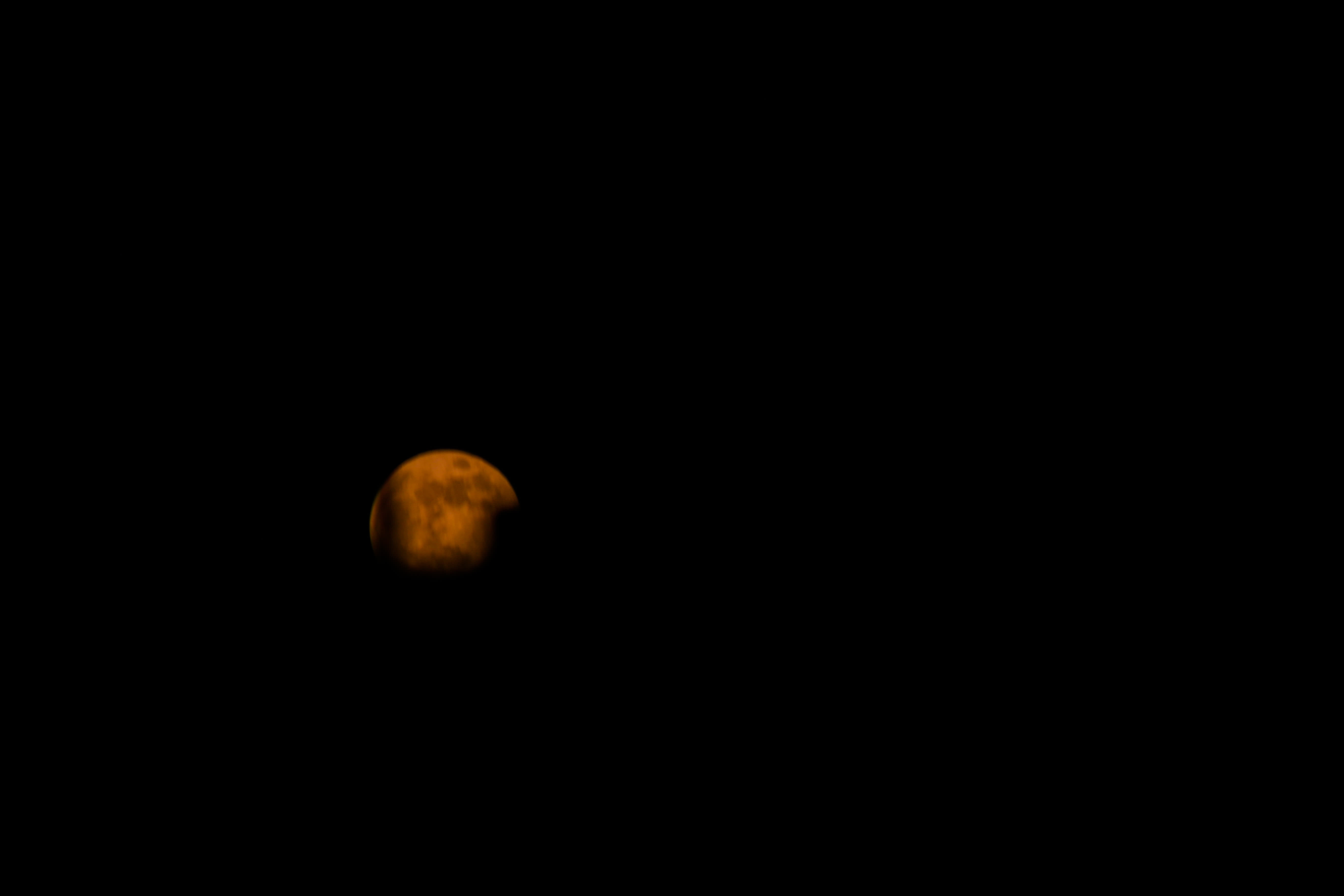
infinite tsukuyomi
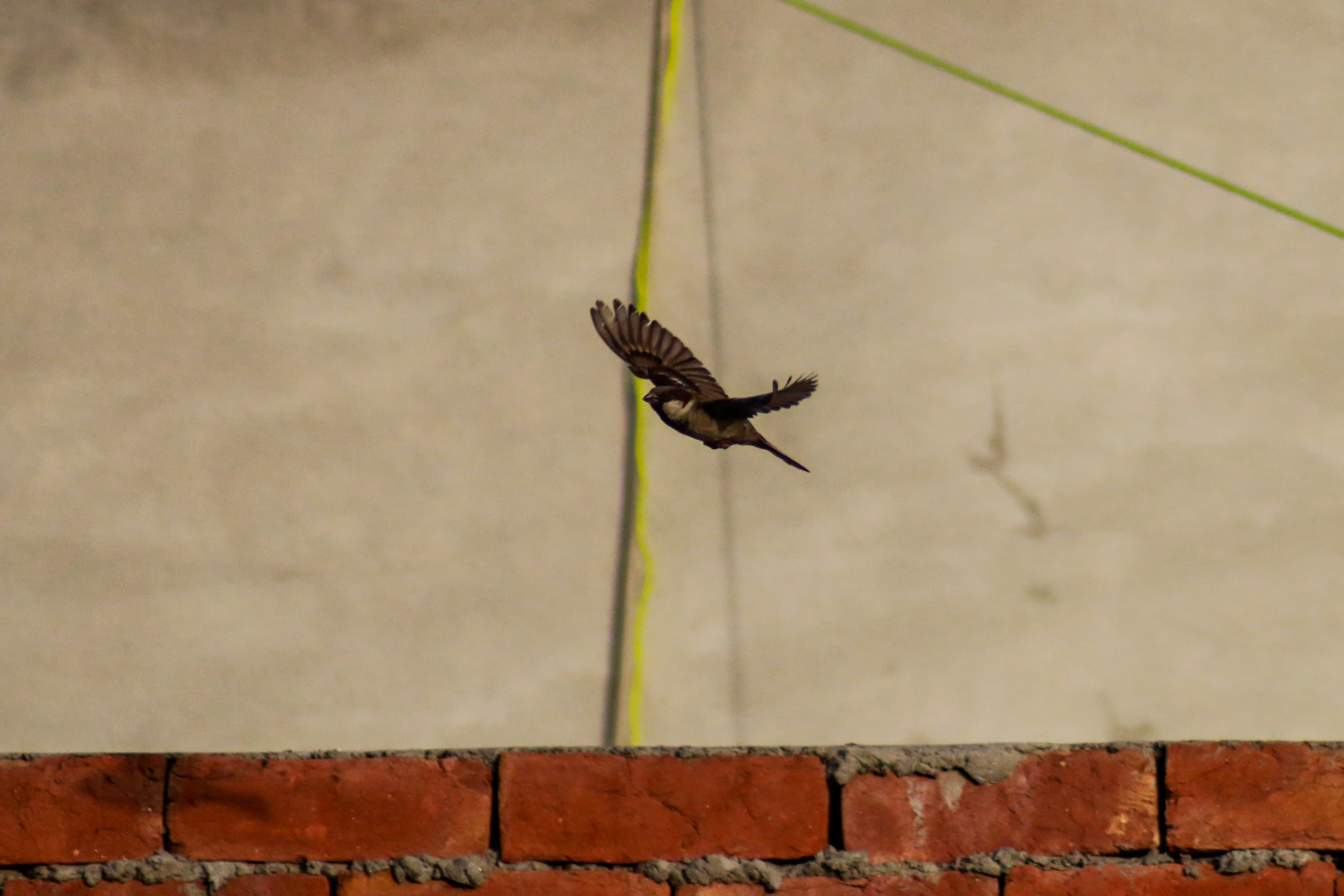
- Privacy Policy
- Refund Policy
- Ⓒ En Route Pakistan
Destinations
Hotels and Tours
- Middle East
- Eastern Europe
- Southeast Asia
- Central Asia
- International Law
- New Social Compact
- Green Planet
- Urban Development
- African Renaissance
- Video & Podcasts
- Science & Technology
- Intelligence
- Energy News
- Environment
- Health & Wellness
- Arts & Culture
- Travel & Leisure
- Hotels & Resorts
- Publications
- Advisory Board
- Write for Us

Religious tourism plays an important role in reviving the country’s economic activity through promoting religious-based tourism. Realizing the economic and political importance of this sector, the Government has taken ample measures to support this industry. Hence, with Government support and improved law and order situation, religious-based tourism in Pakistan is flourishing and attracting different communities.
Pakistan is situated in a region that has been home to diverging civilizations, the world’s two major religions Buddhism and Sikhism have been dominant in this land for many centuries. Besides, this region also hosted followers of pre-historic religions such as the Aryan, Barhaman, and ancient Iranian and Greeks dated back to 5,000 years. Sindh, Khyber Pakhtunkhwa, and Punjab provinces of Pakistan, therefore, have plenty of historical sites linked to the two religions.
According to various global traveling planners, Buddhist tourism has an estimated market of 100 million dollars across the world. Pakistan’s Gandhara region comprising Mardan, Taxila, and Swat holds a special value for them. Large to medium-sized stupas of Gautam Buddha, the founder of Buddhism, and other heritage sites in Pakistan’s northwestern tribal belt, from the northern Gilgit-Baltistan region to the tourist valley of Swat are very famous among Buddhist tourists from across the globe. A 2016 Gallup survey of the Buddhist population across a selected pool of countries identified 58 million “interested visitors”, out of which 5pc (2.9 million) were “likely to visit” Pakistan.
Importantly, all the Buddhist heritage sites are fully protected and got the status of heritage. Pakistan has seen a significant increase in the number of Buddhist tourists from Japan, Korea, Hongkong, China, and Sri Lanka in the last few years. Pakistan is home to thousands of Buddhists who enjoy all types of perks, privileges, and rights and enjoy liberty like other citizens. The most visited and holiest places for Buddhism in Pakistan are Dharmarajika Stupa, Sleeping Buddha, Takht-i-Bhai, Stupa of Mankiala, and Gandhara civilization.
Takhtbai is a small scenic town located, around 160 kilometers from the capital Islamabad, is the most visited site by the Buddhists, who flock to see the ancient monastery dated back to the 1st century. Takht-i-Bahi alone has the potential to attract a major proportion of the 50 million Mahayana Buddhists in Korea, China, and Japan.
Another very important site located at Taxila in Punjab is also considered a very sacred site for Buddhists, this site includes a Mesolithic cave and the archaeological remains of several Buddhist monasteries.
Korean Buddhists in particular trace their religious origin to the area that is now Pakistan, where Korean monk Hyecho traveled 1,300 years ago. A few years back, a 48-feet-long Buddha was also unearthed in Haripur Khyber Pakhtunkhwa, making it the world’s oldest sleeping Buddha statue.
Guru Nanak was the founder of the Sikh faith and Darbar Sahib was his last resting place, therefore, Sikhs consider Pakistan as a holy place. The five most important pilgrimage sites for Sikhs include Kartarpur Sahib, Gurdwara Panja Sahib, Gurdwara Dera Sahib Lahore, Nankana Sahib, and Samadhi of Ranjit Singh Lahore. Sikh tourism, heritage, cultural and religious tourism are the gems of Punjab.
The successful opening of the Kartarpur corridor has encouraged many in the global Sikh community to consider visiting the holy Sikh site in the heart of Pakistan. The Kartarpur Corridor, an initiative by the current civil-military leadership of Pakistan is intended to link a Gurudwara Darbar Sahib across the Indian side. The opening of the Kartarpur corridor (Narowal) attracted more religious tourists to Pakistan.
Pakistan knows how to respect other religions and recognizes the need for religious freedom. According to Article 36, the Constitution of Pakistan enshrines that the state will protect the legal rights and interests of ethnic minorities.
The development of the Kartarpur Corridor is part of the same effort to promote religious freedom and harmony of ethnic minorities. In November 2021, more than 8000 Sikh pilgrims from all over the world visited Pakistan to celebrate the birth anniversary of Baba Guru Nanak, out of which 3000 entries were allowed by Pakistan High Commission in India.
To facilitate the tourists; Pakistan, in 2019 launched an online visa application process, easing the lengthy process of visa. It has shortened the visa process considerably, which is a major improvement over the traditional visa application process. Pakistan Tourism Development Corporation (PTDC) also holds roadshows and seminars through Pakistani embassies across the world to attract religious tourism. Pakistan has massive potential for religious tourism especially in the case of Sikhs and Buddhists. The federal government has also planned to use the country’s potential for religious tourism and developed special strategies for preserving religious places and providing services to tourists who come here to visit holy places. Adequate hospitality for believers, in addition to generating income, is also helping to improve Pakistan’s soft image. Pakistan is focused to provide all the facilities to religious tourists like simple visa processing, their stay, hoteling, transportation, etc. Pakistan has become the torchbearer of religious tourism and inter-faith harmony across the globe.

Big Tech Capitalism in the Digital Era: Exploitation and Social Responsibility in Indonesia
The shift in global consciousness: a turning point for palestine, chinese president’s europe visit, tigray’s struggle for peace and justice in a troubled landscape, could israeli nuclear deterrence protect against iranian non-nuclear attacks.
- Cookie Policy (EU)
MD does not stand behind any specific agenda, narrative, or school of thought. We aim to expose all ideas, thinkers, and arguments to the light and see what remains valid and sound.
- Fine Living
© 2023 moderndiplomacy.eu. All Rights Reserved.

Religious Tourism In Pakistan
How Religious Tourism Can Help Pakistan To Uplift Its Tourism Industry?
Pakistan houses some of the enormous historical and religious Tourist Attractions that can help Pakistan in uplifting religious Tourism in Pakistan . As per the record, Pakistan has six UNESCO World Heritage Sites . In the middle Ages, they celebrated a year based on natural and cultural resources, which were introduced through modern art. Tourism revenue in 2018 was $364.2 million. In terms of employment, Pakistan’s tourism industry employs 2.4% of total employment.
Since 2015, it has listed the list of the world’s most willing to travel. Pakistan is a religious place of great interest to Buddhists and Sikhs. The latest report released by Gallup in 2014 was released at the cultural site in Pakistan. Above all, from 1.6 million visitors in 2014 to the fastest growing visitors. The representative of the United Kingdom pledged to invest 500 million pounds in Pakistan’s religious tourism for Uplifting Religious Tourism in Pakistan .
Also, the Punjab government has recently introduced a tourism policy to encourage more than 20 industries. Under the Punjab Travel Plan , the state government will spend $50 million to bring visitors into line with international standards.
As per estimated figures, the Domestic tourism of Pakistan is about $1.5 billion. The GDP output is about $3.5 billion, which is equivalent to the present value of Pakistani cotton.
Sacred Places in Pakistan
The Pakistan Tourism Development Corporation (PTDC ) identified 480 locations for inbound tourism alone. Among them are 106 historical significance, 120 religions, and 26 religions and history. The PTI government is committed to increasing the country’s wealth to attract more tourists to Pakistan.
Additionally, it is likely to attract more religious visitors to Pakistan, including civilians and Buddhists . Thanks to Prime Minister Imran Khan and the government for their efforts in opening the Central Gurdwara and the temple at Gurdwara Kartarpur Shrine in Punjab (Pakistan).
Furthermore, the continued growth of the world’s tourism industry has expanded the sector’s importance to the world economy. Modern tourism promotes social and economic progress by creating jobs in many sectors.
Among the government’s tourism and travel sector priorities, Pakistan ranks 112 out of 132 countries. However, the current government is focusing on this area by taking certain initiatives. The Khyber Pakhtunkhwa government plans to return more than 3,000 historical artifacts to attract tourists from the region. Moreover, the KP government recently launched the first mobile travel app to promote tourism in the region.
The app includes information based on hotels, restaurants, service stations, and roads that also will guide visitors. These initiatives can promote in other provinces to attract and encourage tourism . However, tourists find Mosques, Buddhist sits, churches, archeological sites of different civilizations that leave a great impact on each tourist to visit their sacred place in Pakistan .
Facts about religious tourism
Hence, there are visible and promoting positive signs of Religious Tourism in Pakistan that can help in building the Religious Tourism Industry in Pakistan.
Want to learn more?
We’re here to help whether you need information or you already have a travel program.
Speak to our dedicated concierge team
+92 310 5436 581 [email protected]
Office E2, 5th Floor, Khalifa Heights, Chaklala Road near Committee Chowk, Rawalpindi
- Group Tours
- Hotels In Pakistan
- Car Rentals
- Destinations
- Naran Kaghan Tours
Facebook Customer Reviews

- +92 310 543 6581
- Enquire Now

Pakistan is uniquely placed to take advantage of religious tourism. What is stopping us?
Tourism has grown faster than the global economy for the eighth consecutive year. Today, more than a billion people travel internationally, with around half these journeys destined for developing countries. Pakistan is uniquely placed to take advantage of this trend.
Travellers can experience the historical heritage of one of the oldest civilisations in the world, worship at the rich collection of Sufi shrines, Hindu temples, Sikh gurdawaras and Buddhist monasteries, scale some of the highest mountains in the world, or simply experience natural beauty ranging from blossoming trees against a backdrop of snow-clad peaks in Gilgit-Baltistan to pristine beaches in Gwadar.
However, despite this wealth of tourist attractions, Pakistan’s tourism sector trails far behind that of India, Turkey, Sri Lanka and the region in general.
The direct contribution of the travel and tourism sector to Pakistan’s gross domestic product is just 2.8 per cent compared to the regional average of 3.5pc.
In terms of receipts from foreign tourists across South Asia ($33.82 billion in 2016), Pakistan scrapes a share of less than 1pc of this important source of foreign exchange compared to India's share of 69pc, Sri Lanka’s 10pc and Maldives’ 7pc.
Moreover, in sharp contrast to the dramatic improvements in the share of travel and tourism to India’s economy, in Pakistan, this share has remained fairly stagnant.
What is the economic potential for tourism in Pakistan? What is holding us back from reaching the potential and what can be done about it?
Boosting the economy
What if Pakistan’s international tourism sector contributed to the economy at similar rates as the rest of South Asia? The gains to GDP would be $1.5 billion.
What if Pakistan surpasses South Asia and international tourism contributed at world average rates? The gains to GDP would be $3.5 billion — equivalent to the value of Pakistan’s largest current export item, cotton.
Simple back-of-the-envelope calculations show a substantial economic impact of existing domestic tourism as well.
For instance, looking at just domestic tourism to heritage and religious sites in Punjab, the Tourism Development Corporation of Pakistan (TDCP) identifies 480 such sites across the province. Of these, 106 are of historical importance, 120 religious and a further 26 of both religious and historical importance.
Assuming a modest average spend of Rs200 per trip per person and using TDCP data on the number of visits to each site, revenue generation through these domestic visits is currently estimated at Rs54 billion per year — two-thirds of what international tourists spend in Pakistan each year.
With the right policies in place, Punjab alone can contribute a three- to four-fold increase in the revenue generated by domestic tourism.
Related: Three locations Punjab should put on its tourism map
Pakistan is an especially important site for both Sikh and Buddhist tourists. At one point, Punjab was the centre of the only Sikh empire in history. Nankana Sahib, the birthplace of Baba Guru Nanak, is one of the holiest sites for Sikhs, with the potential to attract as many pilgrims as the Golden Temple in Amritsar.
Yet, barely 6,000 Indian Sikhs visit Pakistan, in contrast to over 50 million that visit the Golden Temple — just 120 kilometres away from Nankana Sahab — each year (this includes multiple visits from the same visitors).
The number of pilgrims coming to Pakistan each year and where they stay is controlled and managed for political and security reasons by the state, albeit with fewer restrictions on diaspora Sikhs as compared to Indian Sikhs.
According to survey data, a whopping 83pc of the eight million diaspora Sikhs living outside India have shown interest in visiting Pakistan. In addition, 79pc of the 20 million Indian Sikhs expressed an interest in visiting Pakistan. In sharp contrast, just 10pc had actually come to the country.

Improvements in visa restrictions, security and infrastructure can lead to an increase in tourist numbers and a change in the profile of existing Sikh tourists, which is currently heavily biased towards low-end visitors (those who won’t be spending too much).
For instance, allowing one-day visas for day trips to Nankana Sahib, a mere two-hour drive from Wagah, can boost visits from Indian pilgrims.
Conservative estimates of the economic impact of boosting Sikh tourism, that keep the current expenditure profiles and mix of pilgrims as given and assume that a small fraction of the Sikhs that expressed an interest in visiting Pakistan do actually visit, show an approximately 85-fold increase in Sikh tourists’ expenditure on goods and services in Pakistan. The current spend of Rs208 million can reach almost Rs18 billion.
This is assuming 44,000 annual visitors (a mix of diaspora and national Sikhs, with some high-spending and others low-spending tourists) with most staying for two weeks, some single-day visits and spending between Rs4,000 to Rs20,000 per day per person.
Read next: An odyssey in the Thal desert
The gains to the economy, however, are not restricted to these direct expenditures on hotels and transport. They create ripple effects through the economy via indirect and induced expenditures.
Hotels purchase more goods and services from their suppliers and expand their facilities (indirect expenditures). When the region becomes more active as a tourist hub, increased employment and economic activity spillover to higher spending on all goods and services in the area (induced effects).
The World Travel and Tourism Council estimates that every rupee of direct expenditure is expected to lead to an additional spend of Rs1.46. Every direct job in the travel and tourism sector also implies an additional 1.55 jobs in related sectors. Incorporating these multiplier effects, the total contribution of Sikh tourists is projected to reach approximately Rs44 billion every year, generating over 82,000 jobs.

Similarly, Buddhist tourism has an estimated market of 500 million Buddhists across the world. Pakistan’s Gandhara region comprising Mardan, Taxila and Swat holds a special place for them. Korean Buddhists in particular trace their religious origin to the area that is now Pakistan, where Korean monk Hyecho travelled 1,300 years ago.
Just recently, a 48-feet-long Buddha was also unearthed in Haripur , making it the world’s oldest sleeping Buddha statue. Takht-i-Bahi in Khyber Pakhtunkhwa and the sites in northern Punjab alone have the potential to attract a major proportion of the 50 million Mahayana Buddhists in Korea, China and Japan.
A 2016 Gallup survey of the Buddhist population across a selected pool of countries identified 58 million “interested visitors” of which 5pc (2.9 million) were “likely to visit” Pakistan. Poor security situation, lack of marketing and tourist facilities and the absence of a functional Buddha stupa are currently preventing this potential from being realised.
Facilitating these tourists and reaching just 1pc realisation for Pakistan would mean 29,000 visitors a year, with a revenue inflow of $62.9 million in the near term. Accounting for the direct and indirect effects, Buddhist tourism can contribute over Rs16 billion to GDP and provide employment to 30,772 people.
What is holding us back?
Where can we begin in order to realise this potential? The most important impediment identified in surveys in the past has been Pakistan’s security situation. Significant improvements in security mean that the sector is now poised to pick up.
In recognition of this, the Pakistan Tehreek-i-Insaf-led government has shown a keen interest in reviving this sector. They have established a national task force on tourism, followed by approval of a National Tourism Coordination Board. They have also announced a new visa policy , plan to provide online visa facility for 175 nations and have relaxed the system of No Objection Certificate for certain regions.
Tourism remains a key area of cooperation under the China-Pakistan Economic Corridor, realising the enormous potential of Chinese tourists and impact on international tourism of overall improvements in infrastructure.
There are, however, some additional factors that remain unaddressed. A critical one is an appropriate institutional and regulatory structure that allows for conservation and regulation, provision of facilities, effective management and data-driven planning to understand and attract tourists in a manner that is environmentally sustainable.
Existing institutional and regulatory arrangements for the tourism sector remain weak, complex and in need of serious reform. Multiple agencies and departments are involved in the sector, without any specialised experience in managing heritage and religious sites and without conformity in practicing international or Unesco standards. Special management structures like the Walled City Authority do exist, yet there is a need for a consistent approach that applies to all sites of significance.

Federal-provincial coordination poses further challenges. Federal jurisdiction over some heritage sites is still maintained by the Evacuee Trust Property Board (ETBP) even though it has no legal authority post-18th Amendment.
The impact of these issues is exemplified in the experience of Katas Raj, a complex of seven ancient Hindu temples. The ETBP exercises complete authority over the development and restoration of Katas Raj without apparent oversight of the provincial archaeology department or any in-house expertise in conservation and restoration.
This institutional flaw has led to renovations using plaster and paint, which have permanently destroyed any remaining vestiges of antiquity. The floors and steps throughout the complex have been re-laid using white marble that looks completely anachronistic in that environment. Most importantly, nearby cement factories have contaminated and dried up the centuries-old pool of water considered holy by Hindus.
Answering the call of the wild: My adventure trip to Chutok in Balochistan
While suo moto action was taken after media reports last year, the experience highlights the gaps in the regulatory environment that have allowed substantial and potentially irreversible damage to historical sites.
Other issues that arise from poor institutional arrangements include poor tourism infrastructure, low involvement of the private sector, inadequate marketing and low enforcement of quality standards.
The Punjab Tourism for Economic Growth report develops five strategic thrust areas to address these issues and unlock tourism’s potential: tourism infrastructure, safety and security, branding, developing talent for tourism services and policies for sustainable tourism that involve and benefit local communities, as well as regulation that preserves heritage sites.
With these arrangements in place, Pakistan can look forward to revamping its tourism industry to take its rightful place in the country's development.
Header photo: Tomb of Bibi Jawindi in Uch Sharif, by Usama Shahid
This piece is based on a report by the Consortium for Development Policy Research , supported by the World Bank, and titled "Punjab Tourism for Economic Growth". The team of researchers was led by Mr Suleman Ghani (policy consultant and former civil servant). The views expressed here are the authors’ alone.
Are you working in Pakistan’s tourism industry? Share your insights with us at [email protected]
Hina Shaikh is currently working as a country economist at the International Growth Center's Pakistan programme. She can be reached at [email protected]

Nazish Afraz teaches economics at the Lahore University of Management Sciences. She can be reached at [email protected]

Is Gondogoro La trek the king of all treks in Pakistan? I went on the odyssey to find out

How music students in Gojal are trying to keep their culture alive

A journey to Bahawalpur and beyond, on the road of self discovery


Minister for Religious Affairs Talha Mahmood has said Pakistan is open for religious tourism.
Addressing the International Gandhara Symposium in Islamabad on Wednesday, he said we welcome the followers of all religions including Buddhism to visit their archeological sites in Pakistan.
The Minister rejected the propaganda campaign against the Muslims saying our great religion Islam preaches peace, compassion, tolerance and harmony.
The Minister for Religious Affairs stressed that inter cultural dialogue is essential to foster understanding and mutual respect amongst the nations. He noted that cultural diplomacy enables us to celebrate our shared heritage.
Talha Mahmood said we should carry forward the torch of cultural diplomacy to promote the message of peace and harmony.
Talha Mahmood said the legacy of Gandhara civilization and Buddhist heritage in Pakistan is not just a relic of the past but it is a guiding light that can illuminate our present and inspire our future.
Addressing the symposium, Chairman Prime Minister's Task Force on Gandhara Tourism Dr Ramesh Kumar Vankwani said there is a great potential of Buddhist tourism in Pakistan.
He said Pakistan is working to facilitate the tourists and build the necessary infrastructure.
A number of Buddhist monks from Malaysia, Vietnam, Thailand, Nepal, South Korea and Sri Lanka are attending the symposium.
The monks will visit Taxila Museum and the archeological sites there today.

Religious Sites in Pakistan, Asia
Religious sites in pakistan.
- Points of Interest & Landmarks
- Sacred & Religious Sites
- Historic Sites
- Architectural Buildings
- 5.0 of 5 bubbles
- 4.0 of 5 bubbles & up
- 3.0 of 5 bubbles & up
- 2.0 of 5 bubbles & up
- Good for Big Groups
- Budget-friendly
- Good for Kids
- Good for a Rainy Day
- Hidden Gems
- Adventurous
- Good for Couples
- Honeymoon spot
- Good for Adrenaline Seekers
- Things to do ranked using Tripadvisor data including reviews, ratings, photos, and popularity.

1. Badshahi Mosque
2. Faisal Mosque

3. Tooba Mosque
4. Grand Jamia Mosque
5. Katas Raj Temples
6. Mahabat Khan Mosque
7. Gurdwara Darbar Sahib Kartarpur

8. Jaulian Buddhist Monastery

9. Lal Shahbaz Qalandar Shrine
10. Shrine of Shah Yusuf Gardezi

11. Chaqchan Mosque
12. Golrah Shrine

13. Dharmarajika Stupa And Monastery

14. Bari Imam Shrine

15. Gurdwara Nankana Sahib
16. Imperial Mosque Lahore / Badshahi Masjid Lahore
17. Darbar E Aalia Khari Sharif
18. Manthal Buddha Rock

19. Kargah Buddha
20. Qadam Gah Mola Ali
21. Abbasi Jamia Masjid Qila Derawar

22. Fatima Church
23. Sialkot Cathedral
24. Khilingrong Mosque
25. Sharda Peeth

26. Hinglaj Mata Shakti Peeth

27. Amburiq Mosque

28. Darul Uloom Mosque
29. Gurdawara Punja Sahib
30. Lal Masjid
What travellers are saying

The 11 best places to visit in Pakistan

Aug 13, 2023 • 7 min read
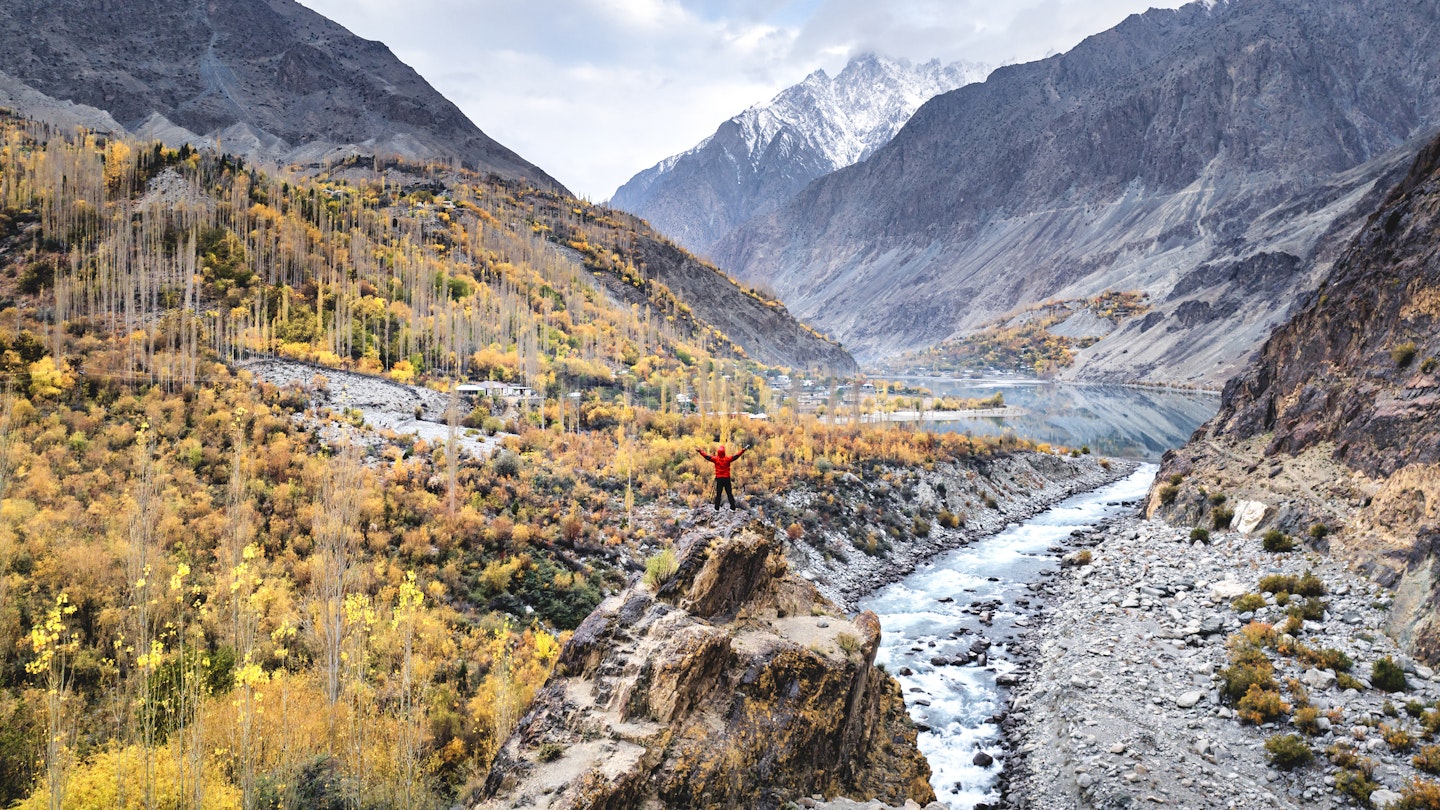
The Himalayas in Pakistan have long been an irresistible place to visit for many travelers © Ratnakorn Piyasirisorost / Getty Images
The Himalaya and Karakoram mountain ranges have long drawn adventurous tourists to northern Pakistan , but these famous summits are far from the only beautiful places to visit in the country.
In fact, there are fascinating places to visit spread right across the country, from the cosmopolitan coastal metropolis of Karachi to the centuries-old Mughal city of Lahore .
Our list of best places to visit takes in varied landscapes and architecture, thousands of years of history, and some of the best aspects of Pakistan’s vibrant contemporary culture. Together, it’s a reminder of why Pakistan is one of Asia’s most exciting tourist destinations. It's time to start planning your trip!
Best place for culture
If you only have time to visit one place in Pakistan, make sure it’s Lahore . A Unesco City of Literature, and home to multiple Unesco World Heritage Sites, this ancient Mughal city is not only one of the most historic places in the country, it also hosts a thriving modern cultural scene.
Lahore Fort has recently been restored with support from the Aga Khan Trust for Culture, the Shalimar Gardens are one of the world’s finest Persian-style gardens, and the magnificent Badshahi Mosque is one of Pakistan’s most famous landmarks; in fact, it's one of the most striking religious buildings on the planet. The city’s food scene is fabulous, too.
Planning tip: Book a hotel in or near Lahore’s Walled City so you can walk to many of the monuments.
Best place for spirituality
Multan is known as the City of Saints and it continues to be an important regional center for Sufism, the mystical form of Islam. Multan has been inhabited longer than almost anywhere else in Asia – Alexander the Great besieged the city in the 4th century BCE, adding to Multan’s claim to be the most historic spot in the country.
The most beautiful places to visit are the city’s Sufi shrines, especially the Tomb of Shah Rukn-e-Alam with its delicate turquoise tiles, and the predominantly pink Mausoleum of Shamsuddin Sabzwari, which is topped by a bright yellow dome.
Planning tip: Multan is at its busiest during the Urs festivals, which commemorate the death anniversaries of local saints. The festival dates follow the lunar calendar and therefore change from year to year – check dates for the coming year when planning your trip.
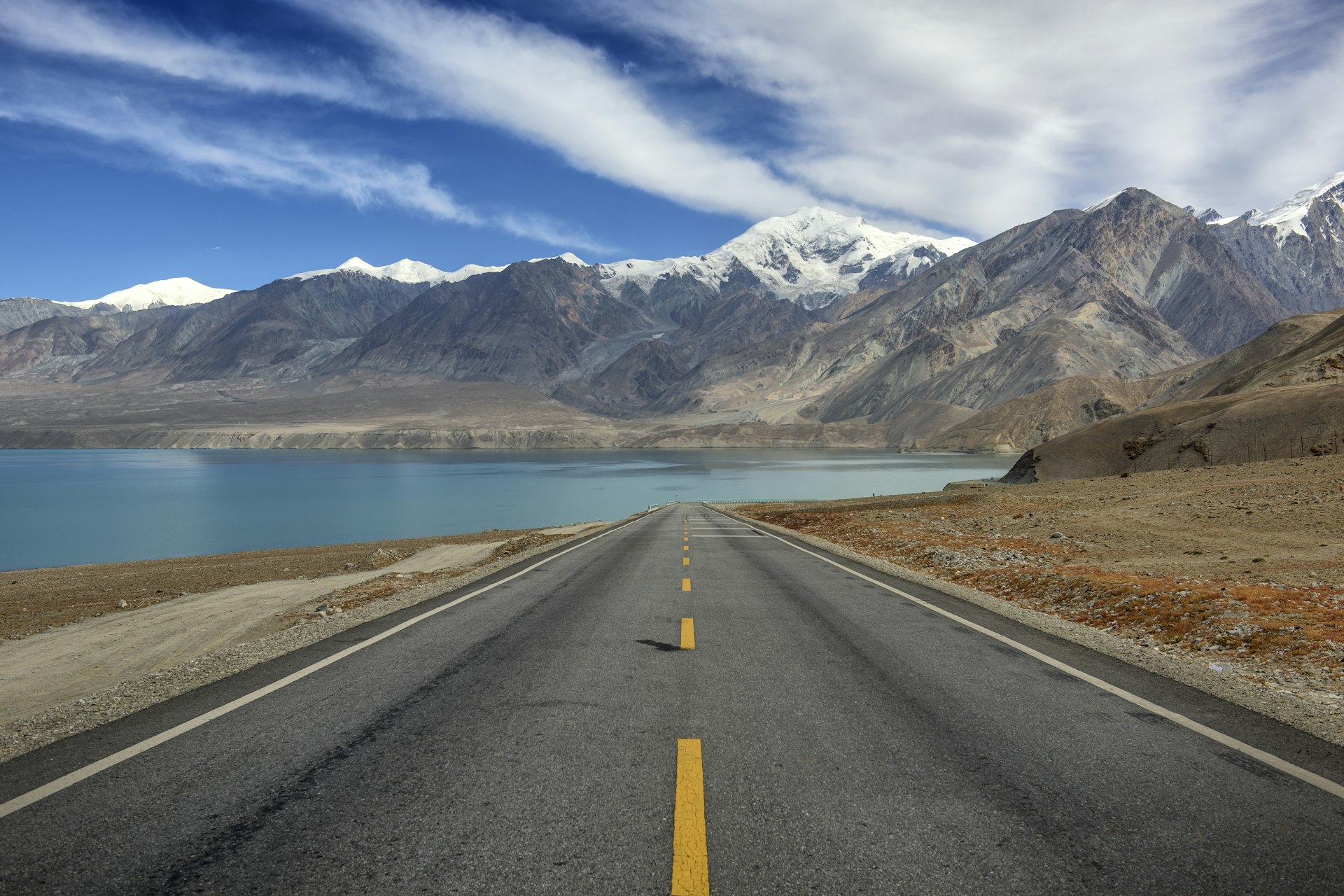
3. Karakoram Highway
Best place for scenery
The 1300km-long (808 miles) Karakoram Highway is one of the world’s greatest road trips. There are front-row views of Nanga Parbat (8126m/26,660ft), Rakaposhi (7788m/25,551ft) and other dramatic mountain peaks from the road, which passes through Gilgit and Hunza as it meanders north towards the border with China .
Traveling the section from Gilgit to the Chinese border is one of Asia’s greatest adventures – you can fly to Gilgit from Islamabad and hire a 4WD vehicle and driver locally to explore.
Planning tip: The northern part of the Karakoram Highway is closed between January and April due to heavy ice and snow, so plan accordingly.
4. Rohtas Fort
Best place for military history
The territory covered by the modern state of Pakistan has long been contested, and you’ll find fortifications all across the country recalling past battles for supremacy. The largest of these is Rohtas Fort near Dina.
This Unesco World Heritage Site is considered to be the best surviving example of Mughal military architecture in Asia, with 4km (2.5 miles) of sandstone walls and 14 seemingly impenetrable gates, protecting a vast and well-preserved complex of mosques, step wells, palaces and domestic buildings.
Planning tip: Rohtas lies north of Lahore, just off the Grand Trunk Road (NH5) – visit en route between Lahore and Islamabad/Rawalpindi.
5. Fairy Meadows
Best place for hiking
The Fairy Meadows National Park is undoubtedly one of the most beautiful places to visit in Pakistan. Mighty Nanga Parbat (8126 m/26,660ft), the ninth-highest mountain in the world, rises above fertile grasslands and alpine forest, home to brown bears and deer. Wildflowers paint the meadows in spring and summer and the serene landscapes are reflected in the water of small, still lakes.
Planning tip: There are a few tourist cottages and guesthouses at Fairy Meadows, but camping brings you closer to nature. Get here from Raikot Bridge, on the Karakoram Highway south of Gilgit.

6. Moenjodaro
Best place for ancient history
Moenjodaro , meaning “The Mound of the Dead”, was built in Sindh more than 4500 years ago, making it one of the world’s oldest cities. This was the center of the technologically and culturally advanced Indus Valley Civilisation, which stretched not only across Pakistan but also into Afghanistan and India. This was the very first site in South Asia to be designated as a Unesco World Heritage Site. The ruins are huge – archaeologists have excavated streets, granaries and guard towers, and even a grand public bath.
7. Shandur Pass
Best place for spectator sports
The Shandur Pass lies at 3720m (12,204ft) above sea level in Gilgit-Baltistan, one of the most beautiful mountain regions in Pakistan. Close to the idyllic Shandur Lake, this lofty pass is the location of Pakistan’s most famous polo ground, which hosts an annual tournament between the teams of Gilgit and Chitral. The matches are played on horseback with free-style rules and the Polo Festival attracts thousands of spectators.
Planning tip: The Shandur Polo Festival dates are fixed every year from 7-9 July but plan ahead as there’s heavy demand for accommodation and transport.

Best place for nightlife
You won’t find many Western-style nightclubs in Pakistan, as the country is officially alcohol-free (unless you have a government permit), but there’s still plenty to do in Karachi once the sun goes down. Venues like Base Rock Cafe and The Second Floor (T2F) attract an enthusiastic audience of live music lovers, and Burns Road and Rashid Minhas Road are packed every evening as foodies flock to their buzzing restaurants and street food stalls. Combined with the city’s expansive beaches, it’s an experience many travelers are surprised to find in Pakistan.
9. Katas Raj Temples
Best place for myths and legends
Modern Pakistan has a Muslim-majority population, but before the arrival of Islam, Hinduism, Buddhism, and other faiths were prevalent. The pool in the center of the Katas Raj Temples in Punjab is said to have been formed from the tears of the Hindu god Shiva, and in the Sanskrit epic the Mahabharata , the Pandava brothers were exiled here.
Early travelers mentioned the presence of a Buddhist stupa, too, and you can still see its remains alongside the ruins of multiple temples, a small fort, and havelis. The buildings are in poor condition and little conservation work has been done, but Katas Raj remains a remarkable place to explore.
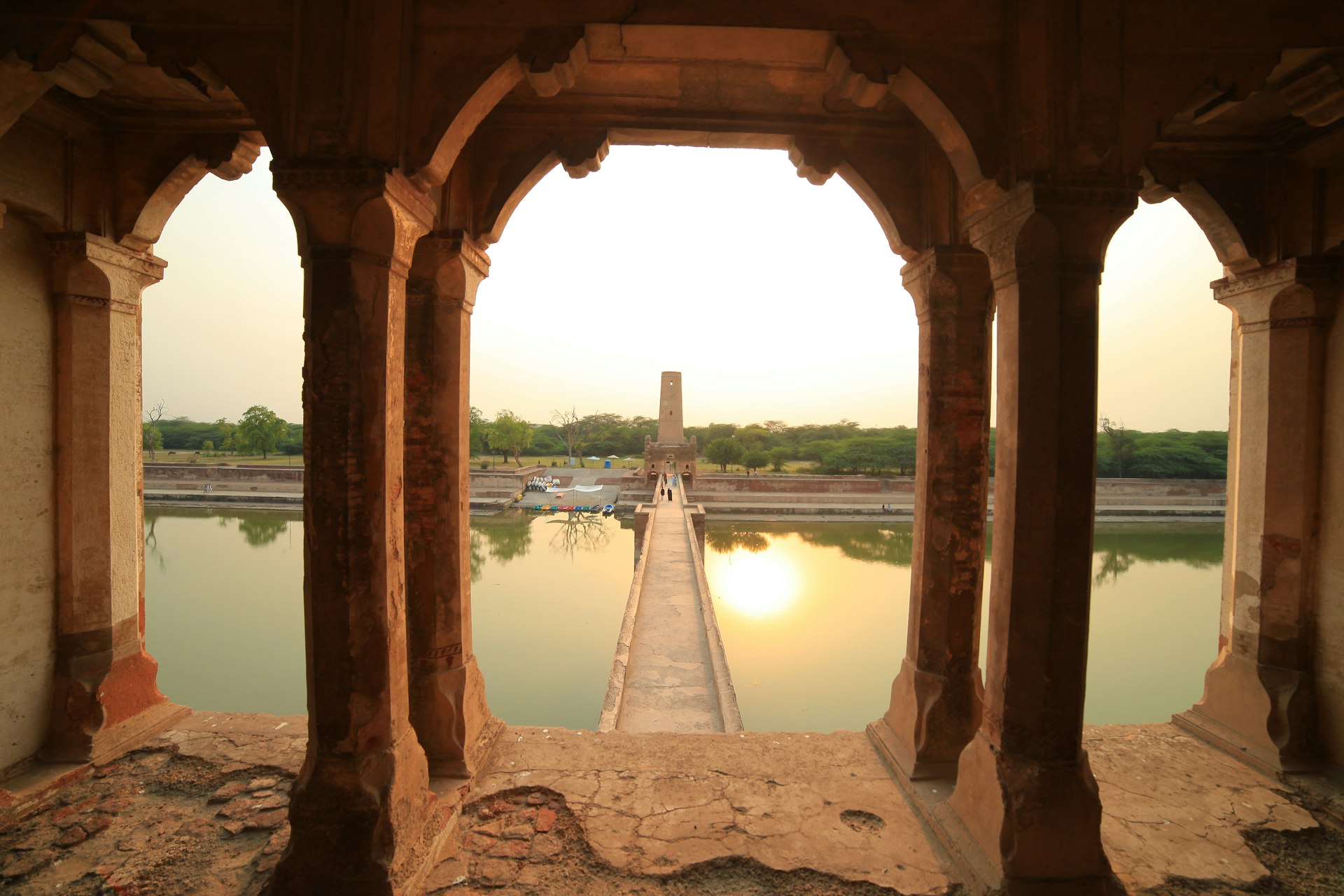
10. Hiran Minar
Best place for a day trip
We all love our pets, but the Mughal Emperor Jahangir took his affection to extreme lengths when he built Hiran Minar for his favorite antelope, Mansraj, who he proclaimed to be "Lord of all animal beings". The early 16th-century tomb, minaret, and pavilion overlook a huge reservoir in the center of what was once a royal hunting ground but today is a wildlife reserve. Animals and birds still come out of the scrub forest to drink, so it remains one of the best places to visit in Pakistan for wildlife watching, fishing, and generally relaxing in peaceful surroundings.
Planning tip: Hiran Minar is an hour’s drive outside Lahore and is easy to combine with the nearby Sheikhupura Fort.
Best for pomp and circumstance
The Attari-Wagah border post is the only place where you can cross between Pakistan and India by land. Its daily closing ceremony is also one of the most over-the-top examples of military posturing you’ll ever see, with soldiers from both sides competing to show off who can kick higher, shout louder, parade more in sync, and grow the most impressive facial hair. Take a seat in the stands and join the cheering, flag-waving crowds for a very entertaining afternoon out.
Explore related stories
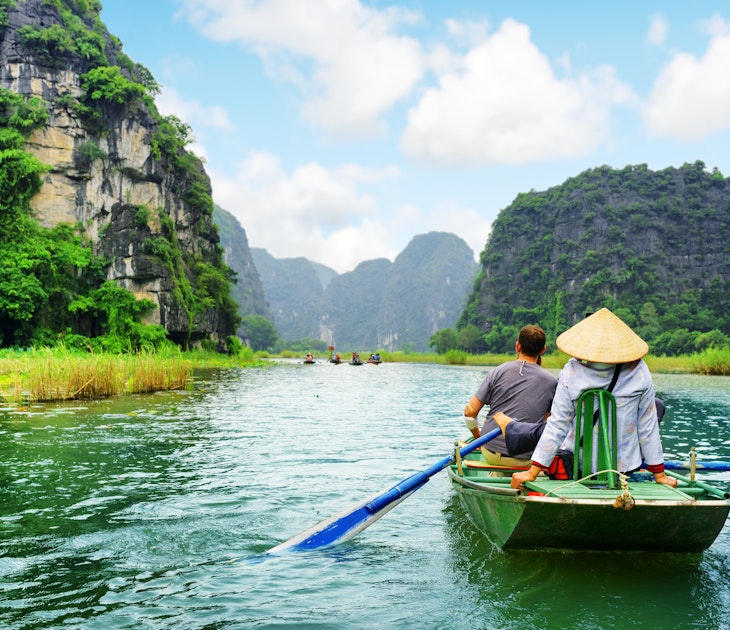
Mar 14, 2024 • 10 min read
Whether it's bus, train, private car, motorcycle, bike, plane or boat, you can plan your trip around Vietnam with this guide to getting around.

Dec 27, 2023 • 8 min read

Oct 25, 2023 • 6 min read

Oct 15, 2023 • 3 min read

Oct 14, 2023 • 5 min read
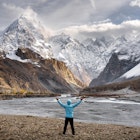
Sep 4, 2023 • 6 min read

Sep 2, 2023 • 9 min read

Aug 30, 2023 • 9 min read
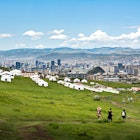
Aug 25, 2023 • 7 min read
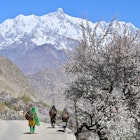
Aug 24, 2023 • 6 min read
- Pakistan Today
- Profit Magazine
- Paperazzi Magazine

A framework for Middle East peace and stability
Guarding against the praetorians, the personal battles and triumphs of pakistan’s freelancers, saudi delegation in town, who was killed in fresno, pha initiates work on maiden ‘public sculpture garden’ at nasser bagh, centenarians and an sho’s powers, author riding the wave of love for gujrat feted, china’s long march-6c rocket makes maiden flight, buckingham palace breaks silence with major announcement as prince harry arrives…, al jazeera to pursue legal action ‘until the end’ over israel…, indian govt-owned company exporting ordinance to israel amid ongoing genocide in…, mayor sadiq khan thanks londoners for electing pakistani immigrant’s son for…, mohammad amir’s departure for ireland delayed due to visa issues, each player to get $100,000 cash award if team lifts t20…, naila kiyani becomes first pakistani woman to summit 11 peaks above…, pcb announces squad for england, ireland series, england announce squad for pakistan series, t20 world cup, pakistan is open with vast opportunities for religious tourism: talha.

ISLAMABAD: Federal Minister for Religious Affairs Senator Talha Mahmood has said that Pakistan is open with vast opportunities for religious tourism.
Addressing the International Gandhara Symposium in Islamabad on Wednesday, he invited Buddhists and followers of all other religions to visit their archeological sites in Pakistan.
Rejecting the propaganda campaign against the Muslims, Talha Mahmood said Islam is great religion which preaches peace, compassion, tolerance and harmony.
He stressed that inter cultural dialogue is essential to foster understanding and mutual respect amongst the nations. Cultural diplomacy enables us to celebrate our shared heritage, he noted.
The Minister Religious Affairs said that we should carry forward the torch of cultural diplomacy to promote the message of peace and harmony.
“The legacy of Gandhara civilization and Buddhist heritage in Pakistan is not just a relic of the past but it is a guiding light that can illuminate our present and inspire our future,” Mahmood said.
Addressing the symposium, Chairman Prime Minister’s Task Force on Gandhara Tourism Dr Ramesh Kumar Vankwani said that there is a great potential of Buddhist tourism in Pakistan.
A number of Buddhist monks from Malaysia, Vietnam, Thailand, Nepal, South Korea and Sri Lanka are attending the symposium.
The monks will also visit Taxila Museum and the archeological sites there.
LEAVE A REPLY Cancel reply
Save my name, email, and website in this browser for the next time I comment.
RELATED ARTICLES
Marwat accuses shibli faraz, omar ayub for hindering meeting with pti founder, unlocking solar power in pakistan: here’s everything you should know about solar panels, employee commits suicide amid alleged salary denial, vaccinators demand fuel allowance, stage protest, pm shehbaz gives directive for creating of ‘pakistan skill company’, icube qamar achieves successful deployment in orbit: official, unlocking solar power in pakistan: here’s everything you should know about..., met gala ‘massacre’: netizens decry event as israel continues assault in rafah.

- Privacy policy

Associated Press Of Pakistan
Pakistan's National News Agency
Pakistan to continue facilitating Sikh community’s visits to their religious places: Masood khan
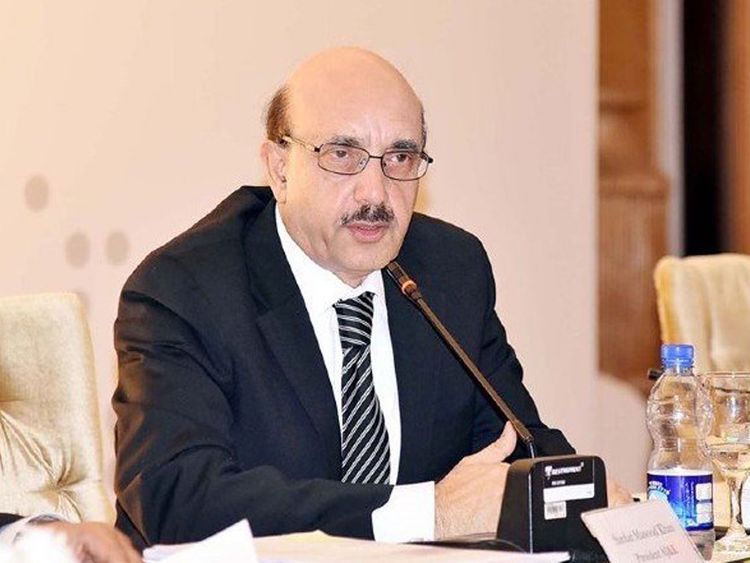
WASHINGTON, May 08 (APP): Pakistan will continue to provide all possible facilities to the Sikh community around the world wanting to visit their religious places in the country, Ambassador Masood Khan said Tuesday.
The Pakistani envoy was talking to a delegation of the American-Punjabi Society, which called on him, according to an embassy press release.
The Government and the people of Pakistan, Ambassador Masood Khan said, fully understand the religious sentiments of the Sikh community and “our doors are open” to them.
The President of the American-Punjabi Society, Gary Sikka, told the Ambassador that his organization consists of one hundred thousand Punjabi-Sikh members, some of whom are also from Pakistan, and that a Society’s delegation of 115 people would soon visit Pakistan to visit religious places in Lahore, Faisalabad, Islamabad and Kartarpur.
Referring to their previous visits, the delegation members, especially spoke about their pilgrimage to Kartarpur and said that the hospitality of the Pakistani people was heart-warming.
While welcoming the delegation at the embassy, Ambassador Masood Khan said that the Government and people of Pakistan respect the religious sentiments of the Sikh community, adding that the visa policy regarding religious tourism has been simplified with an aim to provide them maximum facilitation.
Recent Posts

- Probation officers of Information group briefed over APP’s working scope

Serving the nation since 1947 by providing an accurate, objective, uninterrupted flow of news to the people, the national news service is pursuing a comprehensive strategy to transform the existing news operations into a forward-looking service – APP Digital for its diverse subscriber-base and the public.
- +92-51+2202562
- [email protected]
- Tender Notice
- Public Service Message
- Final Seniority List
- Memorandums
- International
- Entertainment

IMAGES
VIDEO
COMMENTS
Plans to Bolster Religious Tourism in Pakistan; Punjab's Tourism and Archaeology Department (TAD) has announced that it will start working on reviving and promoting religious tourism in Pakistan. To that end, a comprehensive plan for restoring 11 religious sites, sacred to various faiths, has been unveiled.
9. Shahi Eid Gah Mosque Religious Tourism Places in Pakistan. The Shahi Eid Gah Mosque in Multan is a historic mosque known for its unique blue-tiled facade and grandeur. It is an important place of worship for Muslims in the region. 10. Kartarpur Sahib Religious Tourism Places in Pakistan.
Per Statistics Bureau of Pakistan released the religious data of the 2017 Pakistan Census on May 19, 2021. 96.47% are Muslims, followed by 2.14% Hindus, 1.27% Christians, 0, 09% Ahmedies, and 0.02% others. It is time to highlight the possibilities of religious tourism in Pakistan. With the increase in the popularity of tourism, Pakistan is also ...
The Shrines of Pakistan often follow religious tourism in Pakistan. Pakistan is a country with unique places to explore. In addition to the dizzying areas, its most notable feature is how the population inherits culture, traditions, and customs from generation to generation without forgetting the value of its rituals and celebrations.
7. Gurdwara Darbar Sahib Kartarpur. 12. Points of Interest & Landmarks • Religious Sites. By PakistanGuidedTours. Pakistan Government has done a wonderful job in the renovating and visiting process for every devotee and tourist. See tours. 8. Jaulian Buddhist Monastery.
Pakistan, with many important historical Buddhist sites, is noticeably trending in "religious tourism" due to its extensive heritage of Gandhara and Emperor Ashoka the Great. [Over 20 beautiful photos in feature.] A famous Buddha sculpture in the Taxila Museum, Pakistan in the Gandhara style. The Great Sleeping Buddha
Additionally, the Pakistan Tourism Development Corporation states that the travel and tourism sector accounted for 7.9% of the country's total employment in 2023. Religious tourism can bring economic benefits to countries by bringing in money from admission fees, contributions, and tourist spending.
The top results center around strategizing toward the population that is the biggest market to Pakistan's religious tourism sites. The best ranked strategies sway toward improving political ties and channeling advertisement efforts toward the target audience. The outcomes obtained from this study fall in-line with existing literature as well ...
The Tourism Development Corporation of Pakistan (TDCP) has identified 480 similar sites across Pakistan. Out of these 480 sites, 106 carry historical importance, 120 have religious significance, and 26 sites have religious as well as historic importance. If the government is able to iron out the wrinkles (like the federal-provincial confusion ...
The holiest Buddhist religious sites are Taxila and the Buddhist Ruins of Takht-i-Bahi, and the Remains at Sahr-i-Ahlool. These landmarks can market the country as the world's most popular Buddhist destination. There are hundreds of sites scattered across Pakistan. Taxila is the first stop by the foreign tourists particularly Buddhists.
Abstract. Religious tourism is a thriving yet largely unexplored industry in Pakistan; a country packed with landmarks of various religious ethnicities. With a hefty economic potential, religious ...
In Pakistan, religious tourism offers the chance for Muslims and non-Muslims to go on pilgrimages and visits to holy places together. Three major religions are practiced in Pakistan that are well-known worldwide: Buddhism, Sikhism, and Islam.
Kohpemaa Outddoor Gear. View all shops in Hindu Religious Places In Pakistan. From modern-day buildings to ancient artefacts that serve well as masterpieces of art, the country of Pakistan never runs out of beautiful surprises with every turn you take. Talking about history, the country houses many ancient Hindu temples that represent different ...
Pakistan is situated in a region that has been home to diverging civilizations, the world's two major religions Buddhism and Sikhism have been dominant in this land for many centuries. Besides, this region also hosted followers of pre-historic religions such as the Aryan, Barhaman, and ancient Iranian and Greeks dated back to 5,000 years.
In terms of employment, Pakistan's tourism industry employs 2.4% of total employment. Since 2015, it has listed the list of the world's most willing to travel. Pakistan is a religious place of great interest to Buddhists and Sikhs. The latest report released by Gallup in 2014 was released at the cultural site in Pakistan.
For instance, looking at just domestic tourism to heritage and religious sites in Punjab, the Tourism Development Corporation of Pakistan (TDCP) identifies 480 such sites across the province.
July 12, 2023. Minister for Religious Affairs Talha Mahmood has said Pakistan is open for religious tourism. Addressing the International Gandhara Symposium in Islamabad on Wednesday, he said we welcome the followers of all religions including Buddhism to visit their archeological sites in Pakistan. The Minister rejected the propaganda campaign ...
Abstract Religious tourism is a thriving yet largely unexplored industry in Pakistan; a country packed with landmarks of various religious ethnicities. With a hefty economic potential, religious tourism in Pakistan faces a number of challenges. The aim of this study is to figure out the best possible strategy to overcome these obstacles. For this purpose, a number of strategies are considered ...
Apart from image restoration, religious tourism can contribute enormously in amplifying Pakistan's economy by projecting the Muslims, Hindus, Buddhists, and Sikhs sites existing in the country.
7. Gurdwara Darbar Sahib Kartarpur. 12. Points of Interest & Landmarks • Religious Sites. By PakistanGuidedTours. Pakistan Government has done a wonderful job in the renovating and visiting process for every devotee and tourist. See tours. 8. Jaulian Buddhist Monastery.
5. Fairy Meadows. Best place for hiking. The Fairy Meadows National Park is undoubtedly one of the most beautiful places to visit in Pakistan. Mighty Nanga Parbat (8126 m/26,660ft), the ninth-highest mountain in the world, rises above fertile grasslands and alpine forest, home to brown bears and deer. Wildflowers paint the meadows in spring and ...
By Staff Report. ISLAMABAD: Federal Minister for Religious Affairs Senator Talha Mahmood has said that Pakistan is open with vast opportunities for religious tourism. Addressing the International ...
The President of the American-Punjabi Society, Gary Sikka, told the Ambassador that his organization consists of one hundred thousand Punjabi-Sikh members, some of whom are also from Pakistan, and that a Society's delegation of 115 people would soon visit Pakistan to visit religious places in Lahore, Faisalabad, Islamabad and Kartarpur.